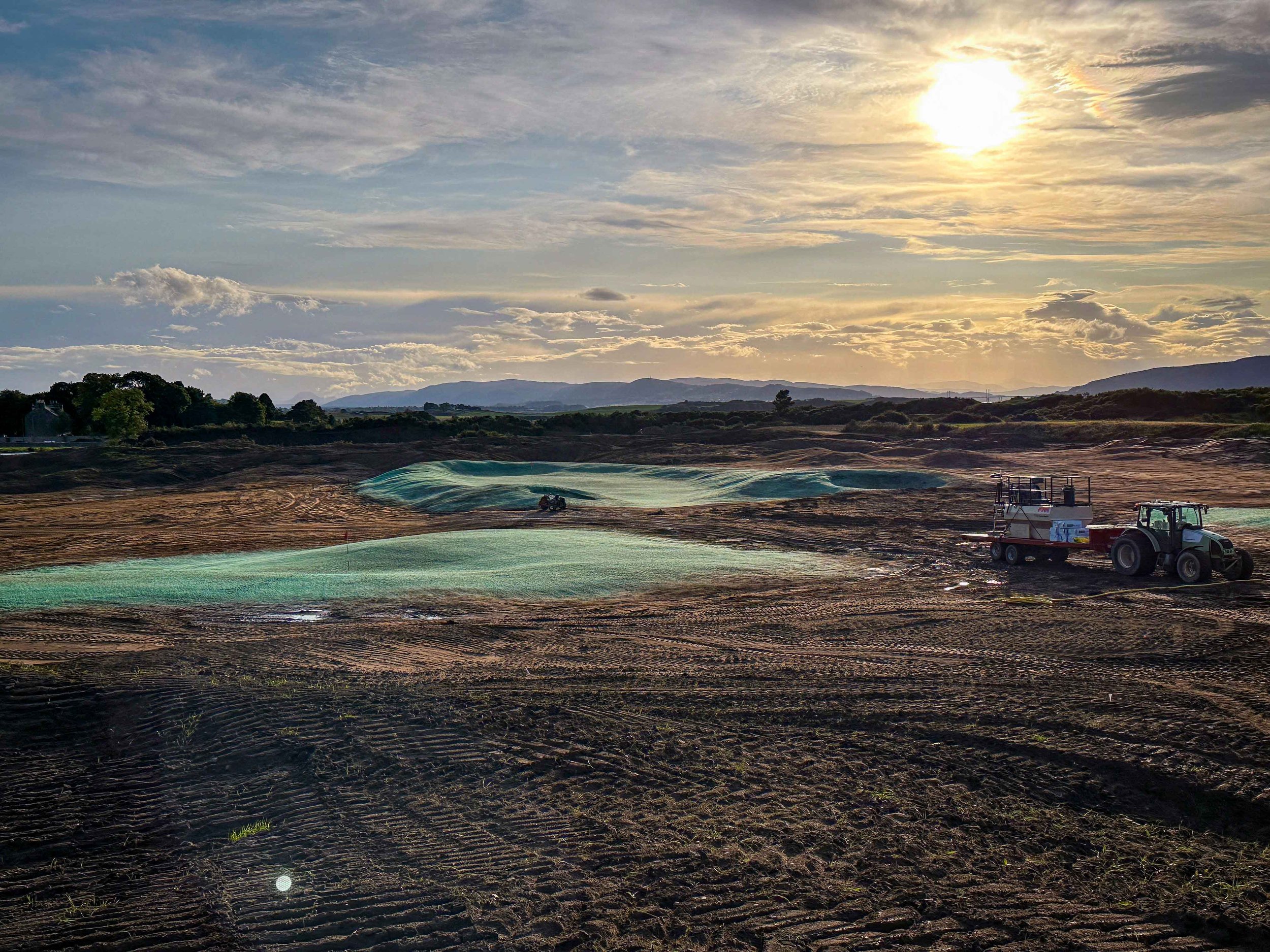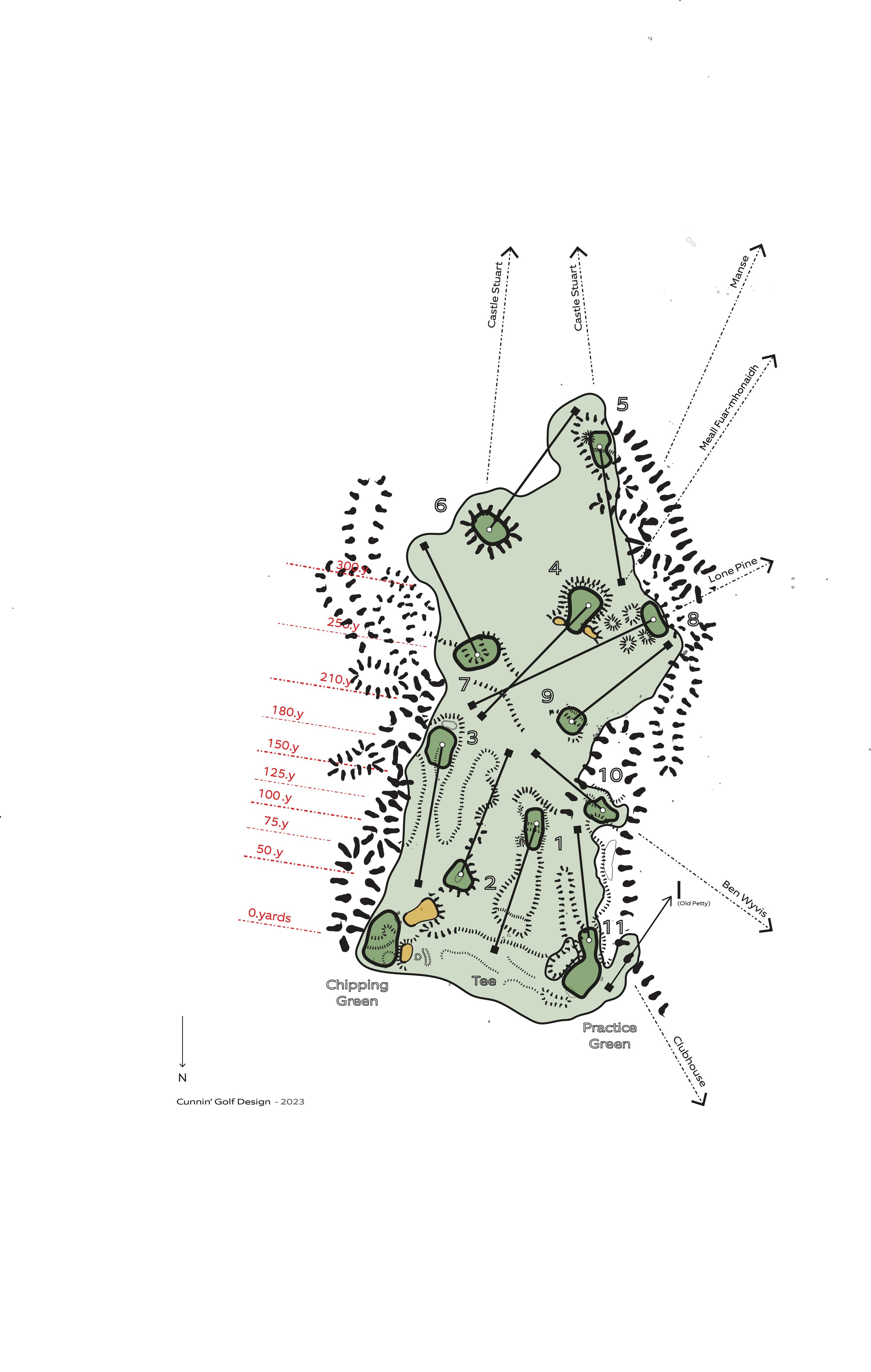A selection of new-build, restoration/renovation and consulting projects - across three-continents, different climates, soil structures and terrain...
St Patrick’s Links (County Donegal; Ireland) - Tom Doak / Renaissance Golf Design - 2018 to 2020 - Shaping

Taking advantage of an original playing corridor, the second flows naturally between the dunes. A pair of bunkers on the right mimic existing natural sandscrapes.

Looking back on the opening par-5, which dramatically drops alongside Sheephaven Bay.
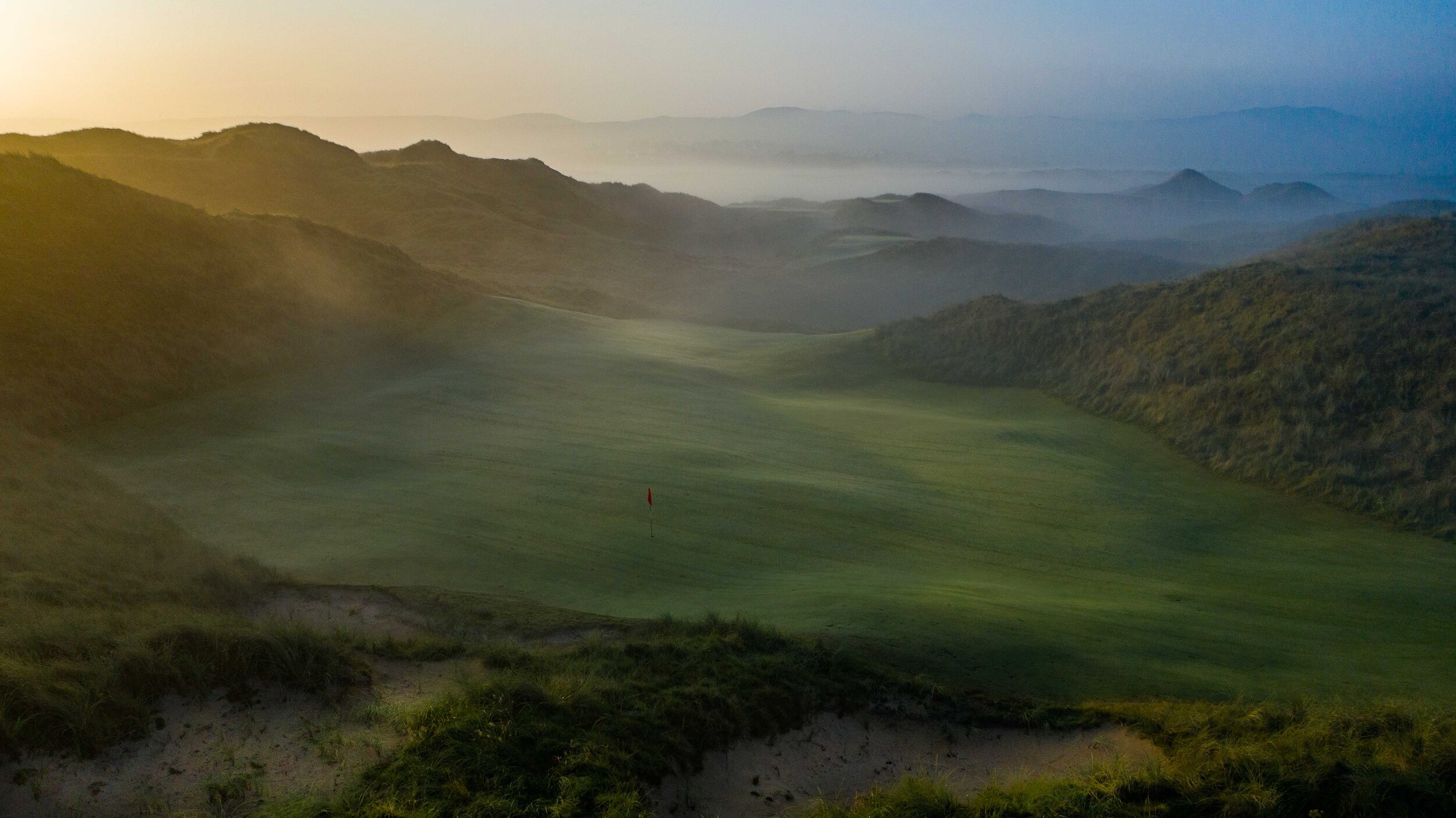
The first short holes carries a couple of deep pocket, into a final bowl.

High green flanks are best approached from opposing sides of the wildly undulating fairway.
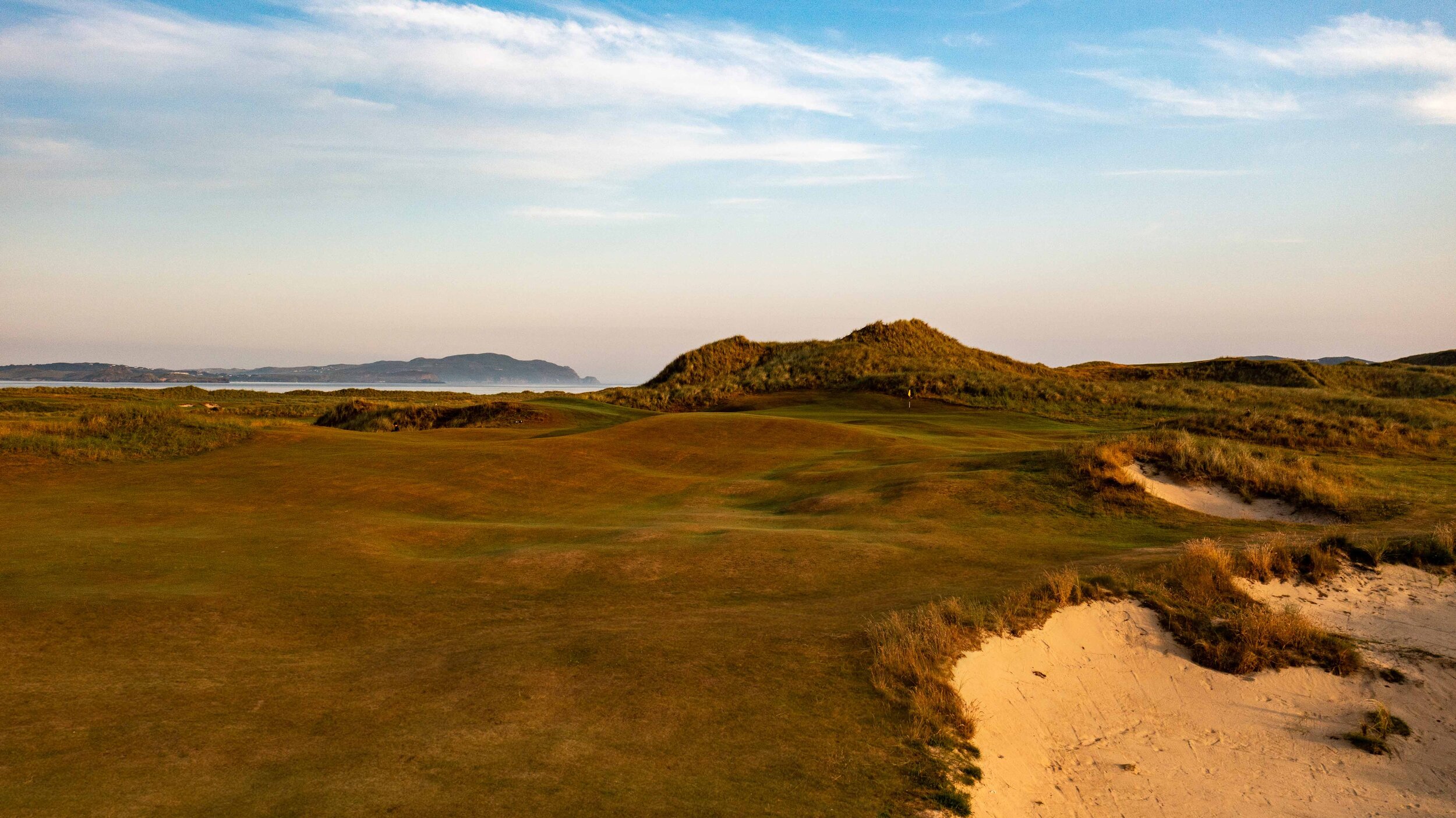
The green of this short-four is tucked beyond a sharp, rippling rise.
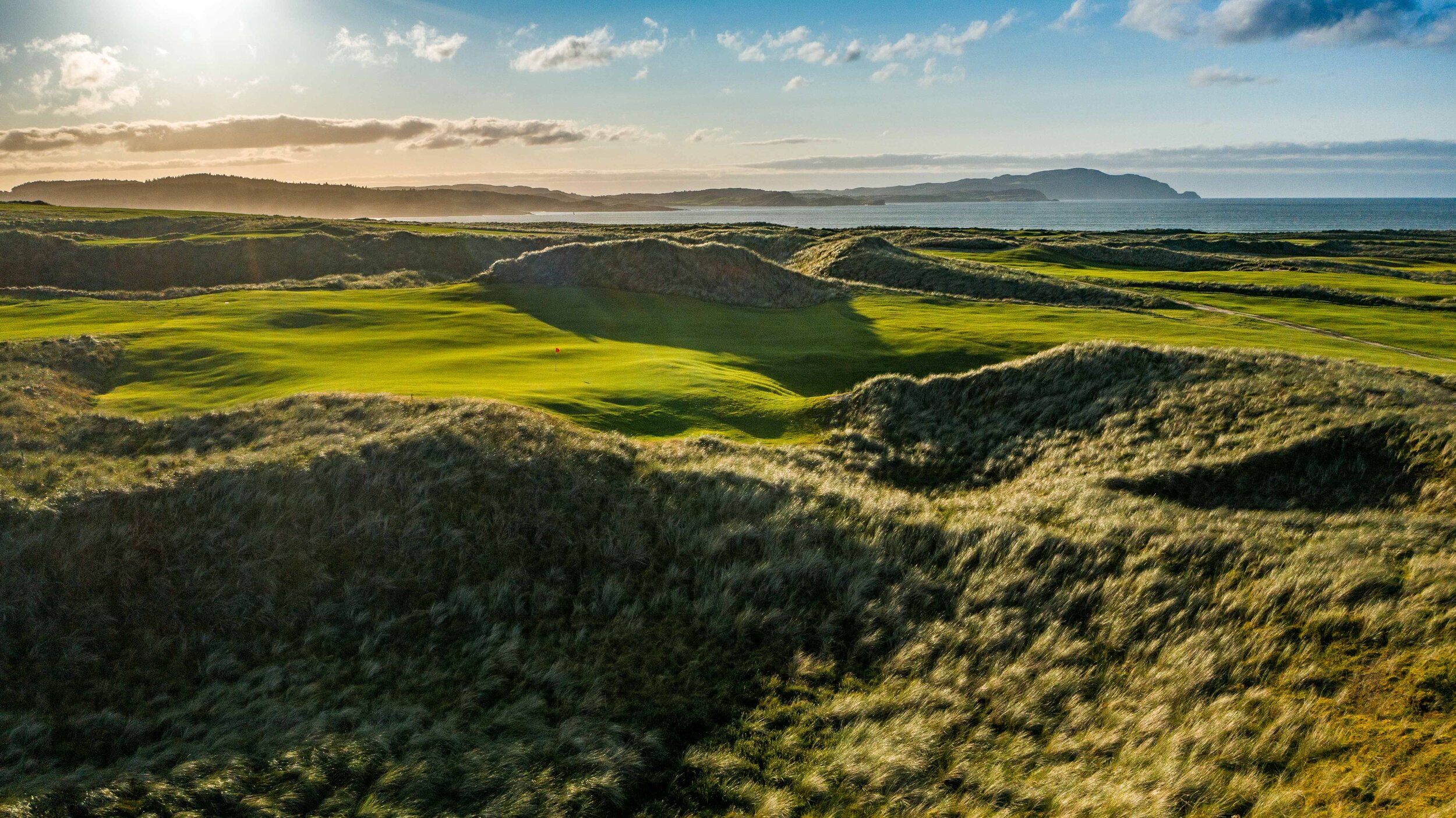
The final short hole rises beyond a deep depression.

A pre-existing sandy expanse cuts across the second shot of the par-five.

A long-3 over an enormous expanse of sand features an elegant green (as shaped by Eric Iverson.)
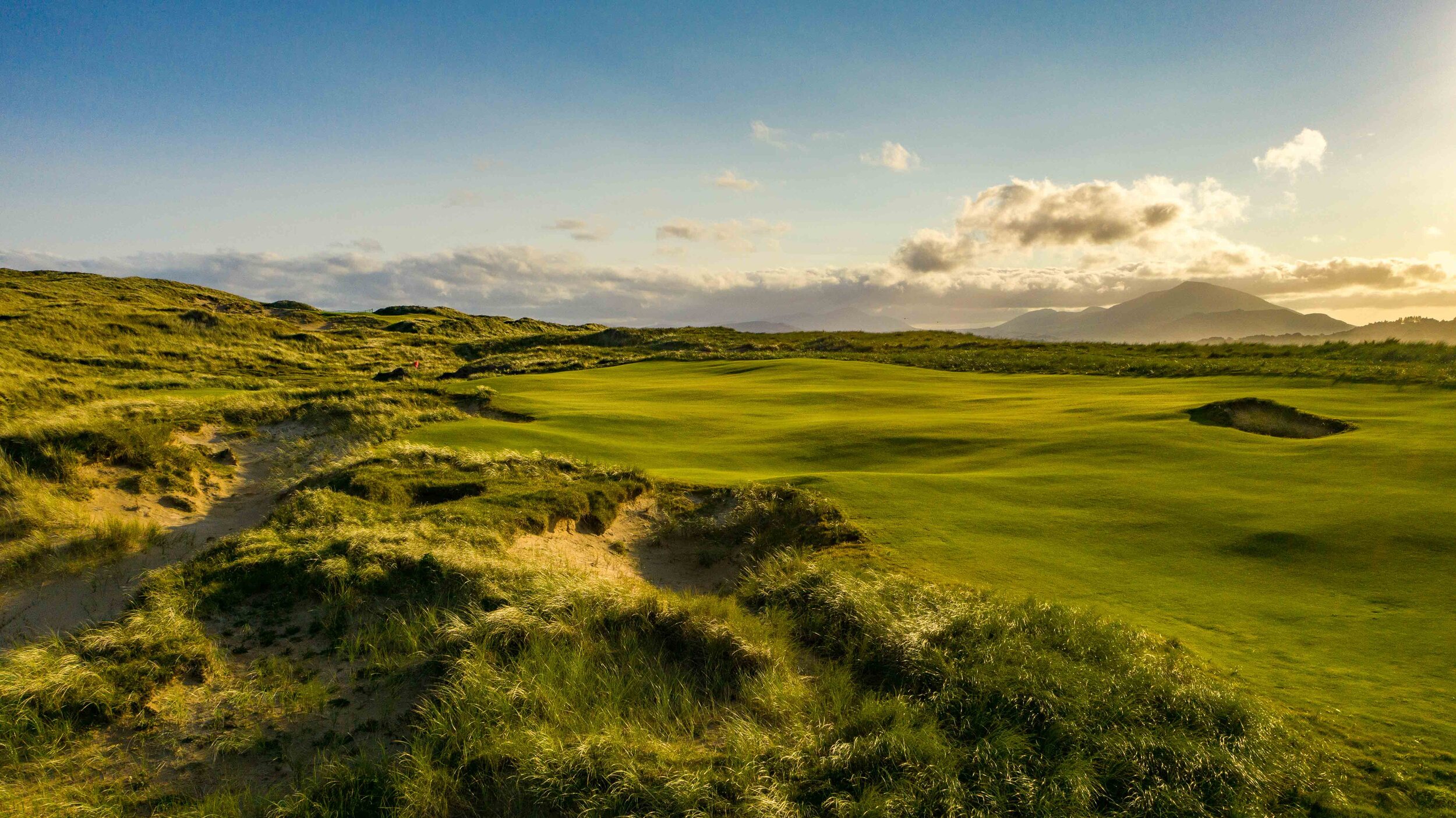
Gnarly sandy pockets were saved during construction.
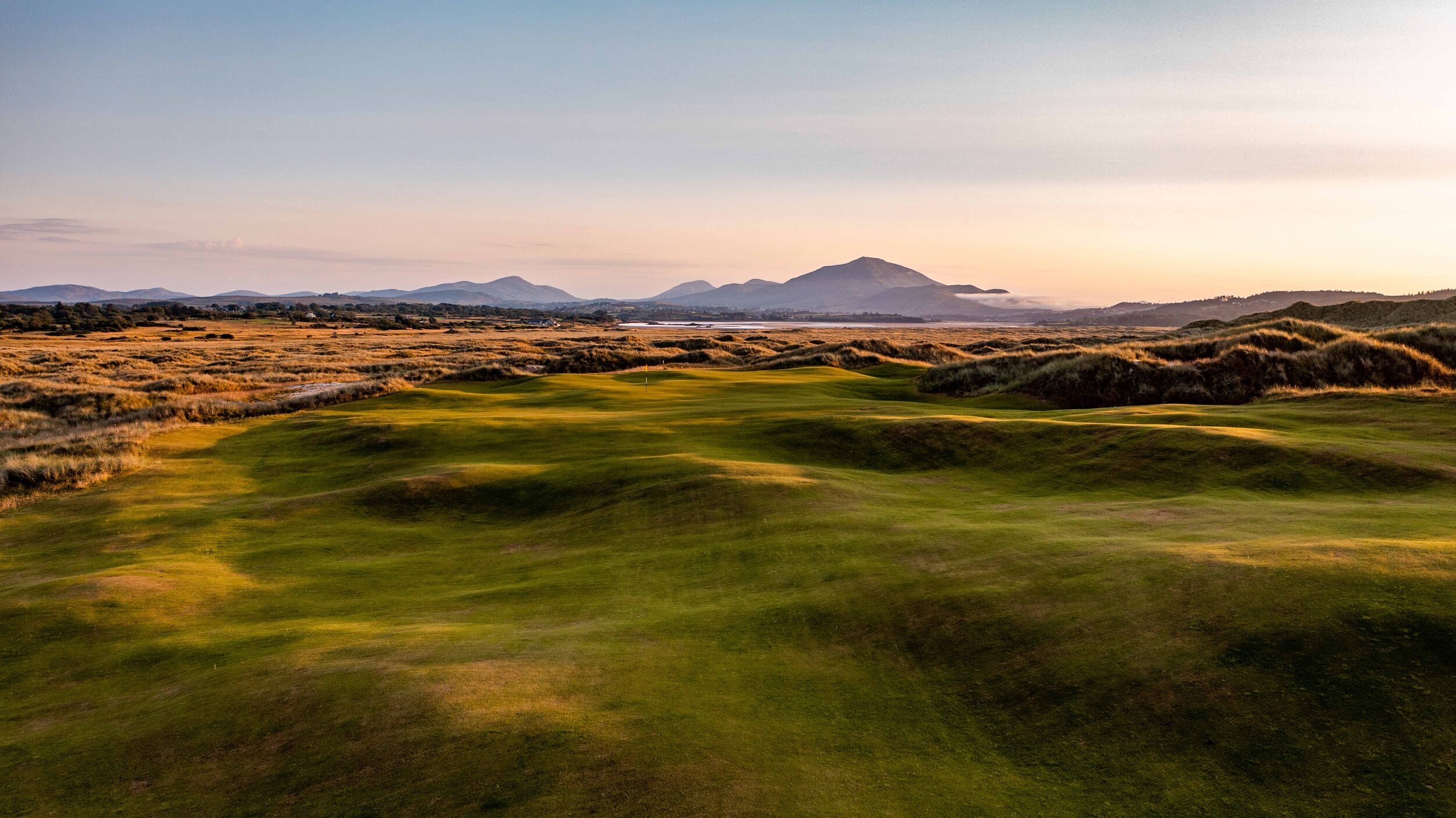
Using the mountain of Muckish as your guide, a strong second shot will leave you a view of this beautiful approach.

A short-3 transitions up the hillside, clinging to sandy chasm.

The ninth green tilts away at grade, beyond a deep bowl.
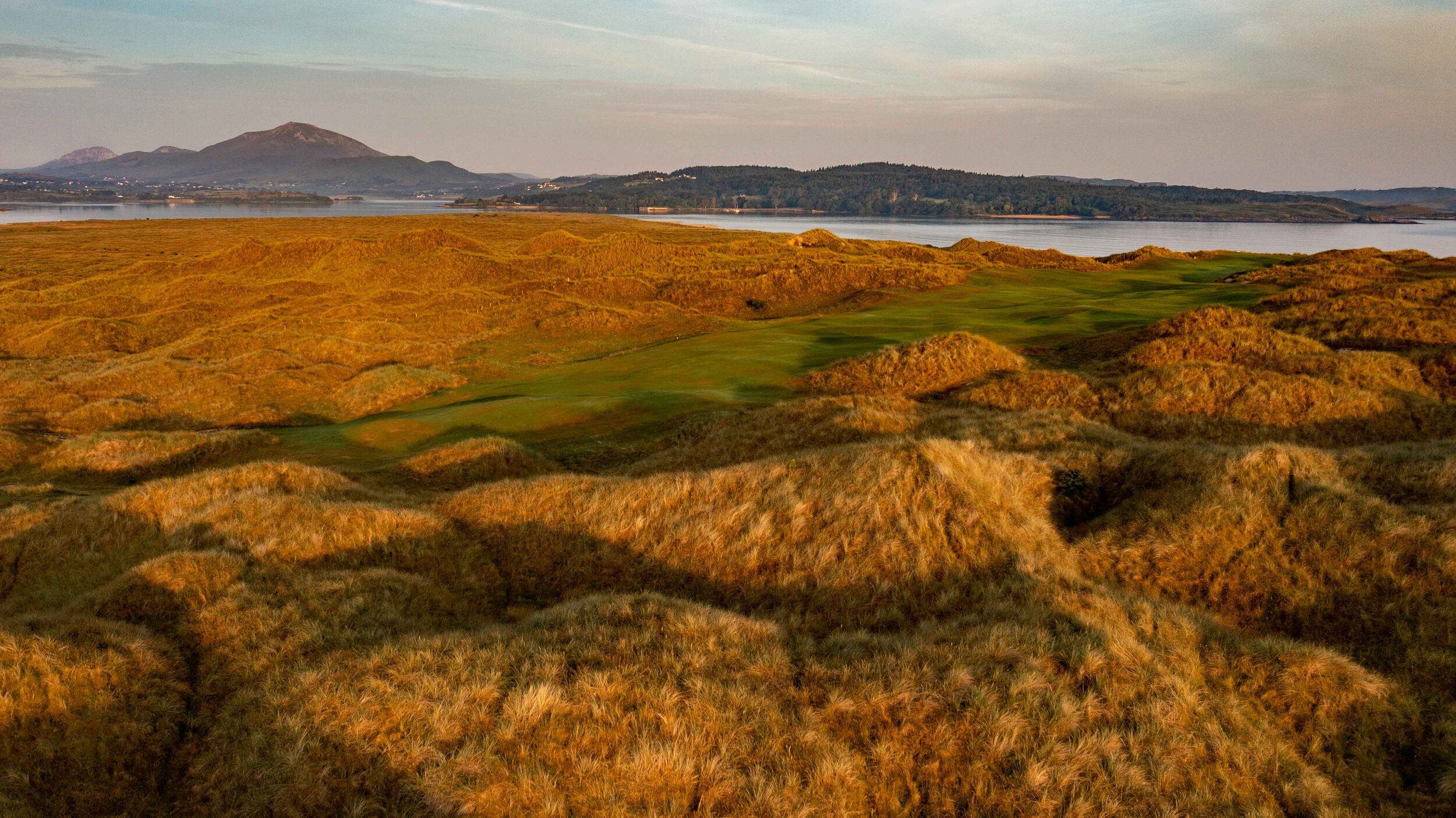
Seemingly out on it’s own, this mid length par-four crests through an expanse of the dunes to reveal a glimpse of the water.

Looking back on the finishing short-four, with its green nestled between a pocket short and long.

A short par-three tacks its way up Magheramagorgan dune, clinging to a huge sand scar.
The original 36-hole St Patrick’s Links has being converted into an enchanting18-hole journey over one of the most dramatic links sites in the world. Bold greens and brawny blow-out bunkers differentiate the course from the rest of the British Isles best.
[Construction Team: Eric Iverson; Angela Moser; (Blake Conant; Brian Schneider, Brian Slawnik.)]
Ranked #55 in 'GOLF's 2021-22 ranking of the Top 100 Courses in the World', on debut!
Woodhall Spa (Lincolnshire; England) - Tom Doak / Renaissance Golf Design - 2016 to … - Master Plan / Consulting / Shaping
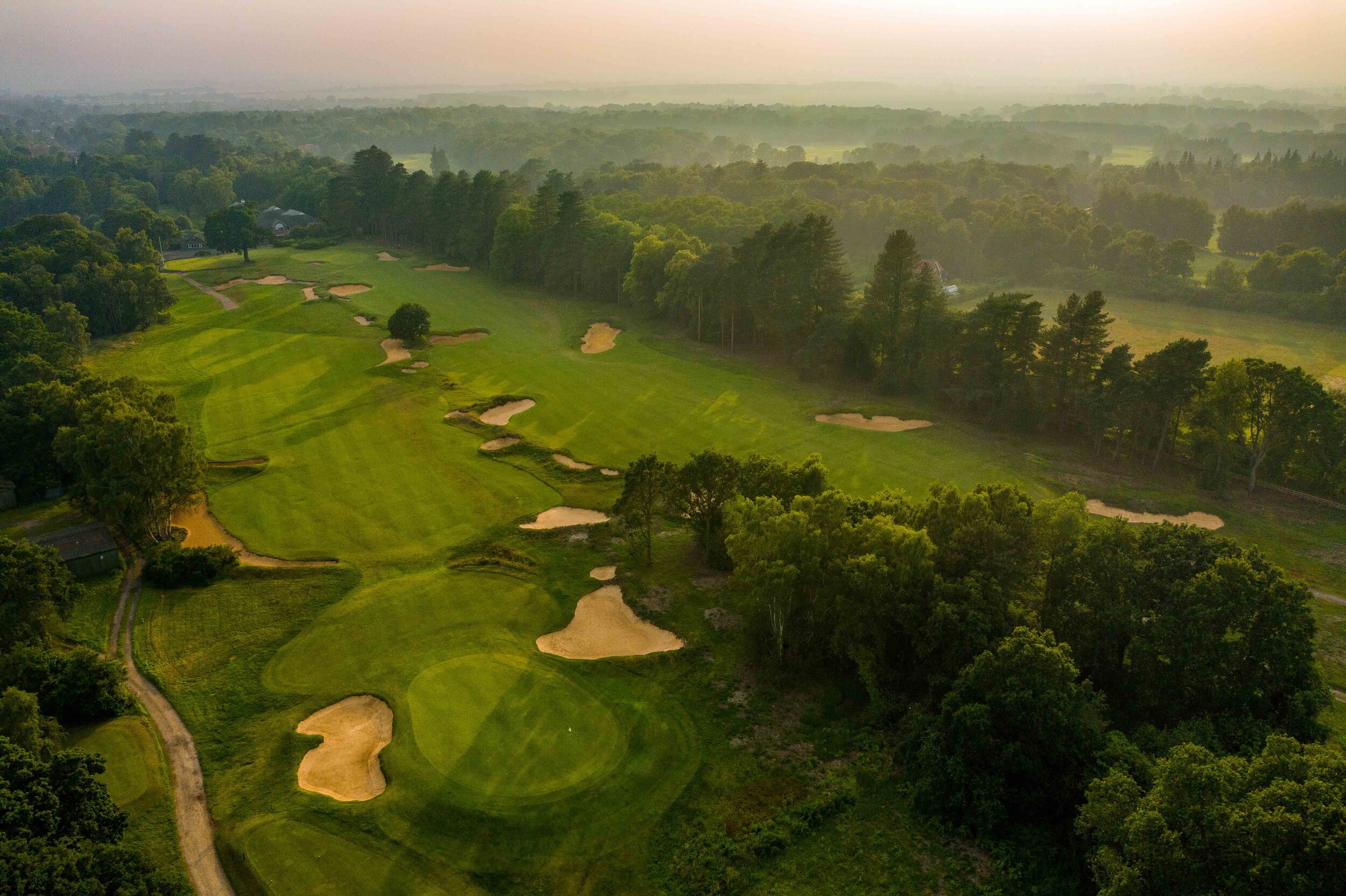
An eclectic collection of bunkers reinstated as per historical imagery and preserved landforms on the ground.
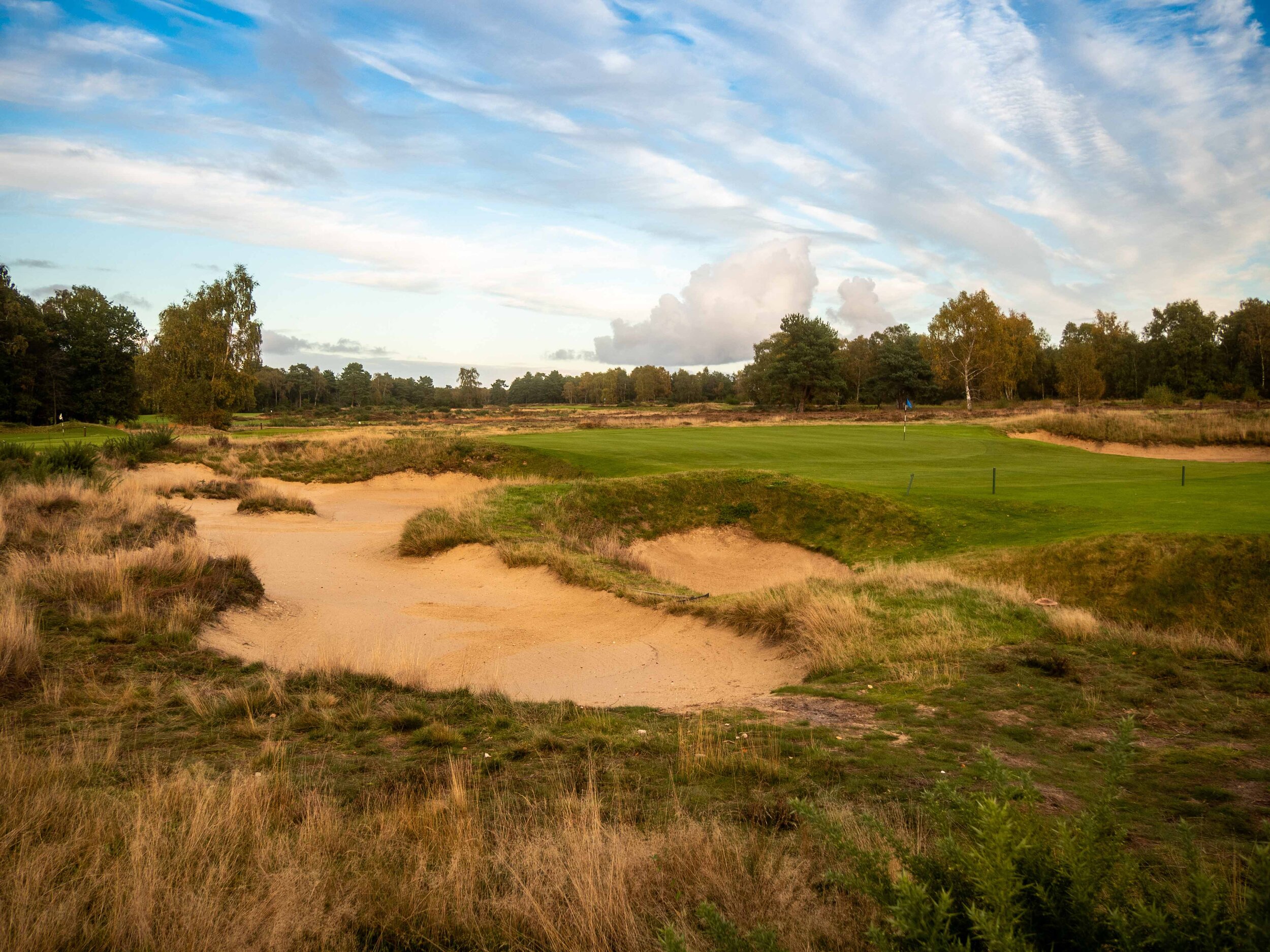
Two smaller bunkers are recaptured to their original scale; previously hiding amongst gorse, the huge left bunker is restored with heathery islands as per a historical aerial.
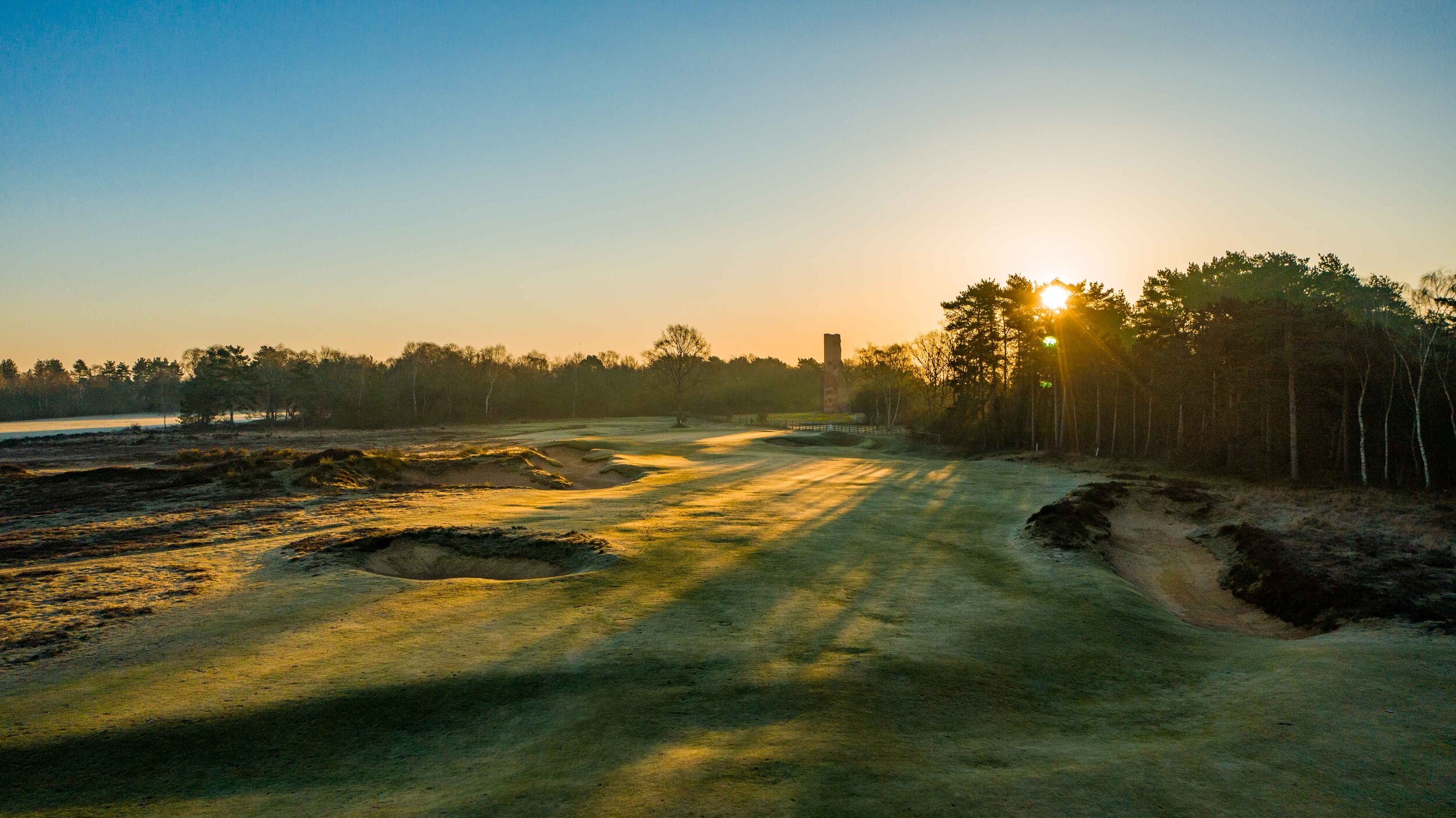
With arguably the best textures of any golf course in the world, the heath is looking it’s best!
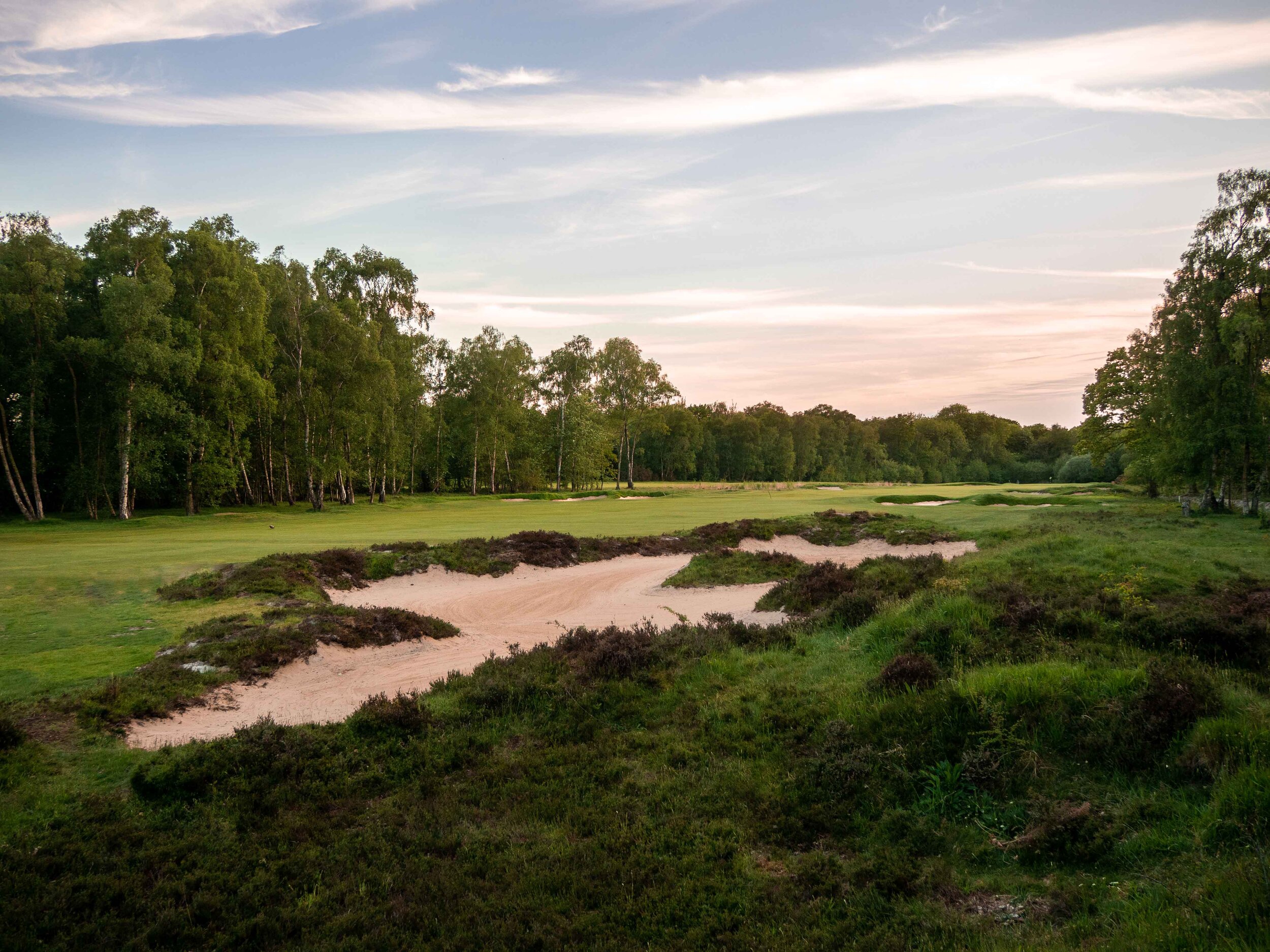
An out-of-chaarcter bunker - added in the 1990s - to test the stronger player - is vastly broadened into the form of the artificial berm encapsulated sand-scapes of the Hotchkin’s early years!
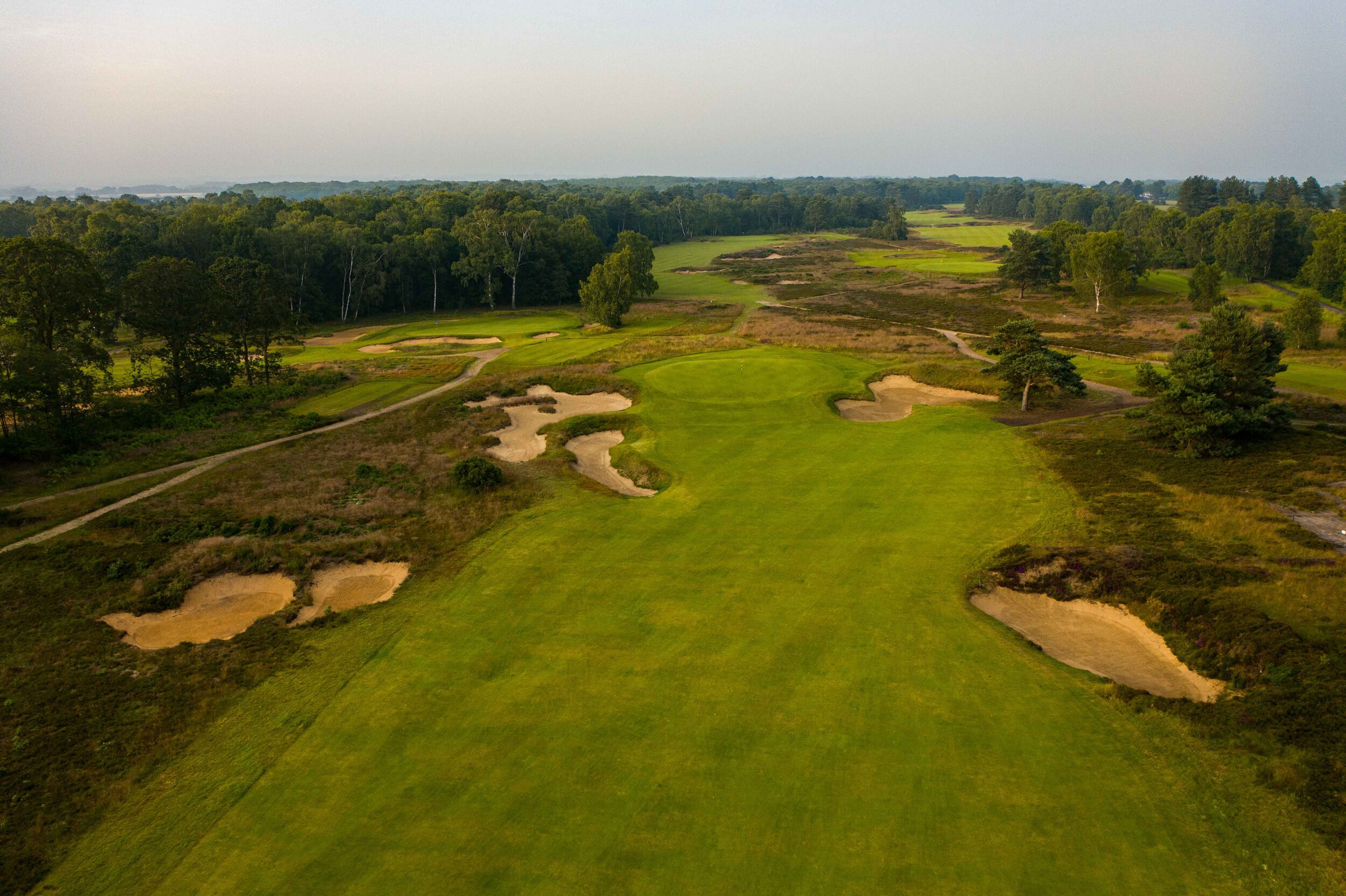
Extensive tree-work has helped recapture the heathland environment, showing-off the wonderful golfing features.

Restored to it’s original footprint, tree removal sees the front-left ‘green side’ bunker dominating the strategy of this great short par-four; sand is flashed up the far face to be seen from the tee.
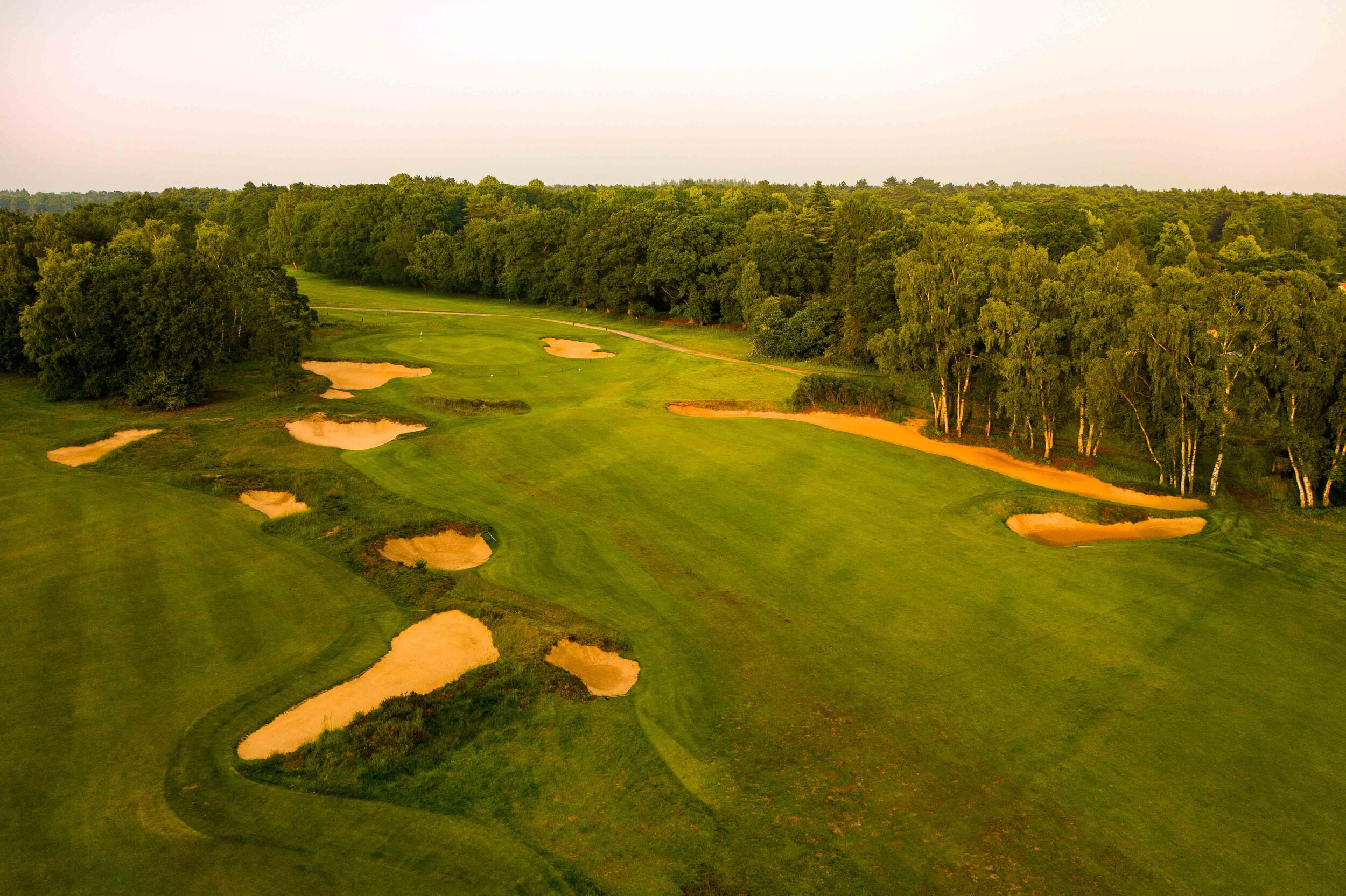
A variety of size and shape helps to set Woodhall Spa’s bunkers apart.
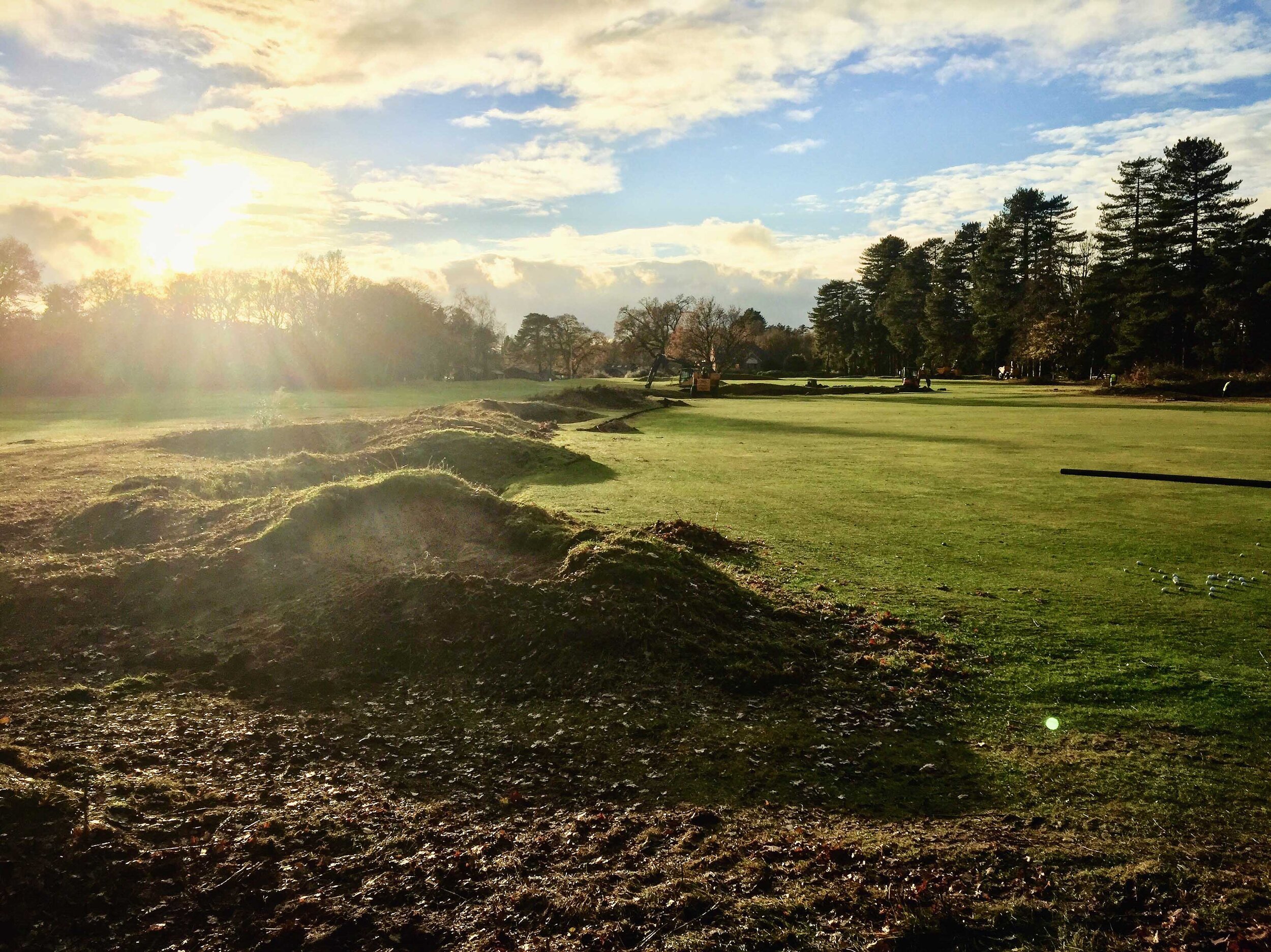
A contrast to the deep and brawny bunkers most associated with The Hotchkin…a tiny, raised pot is scratched back into the funky berm which separates the first hole.

The Hotchkin’s biggest bunker is restored to its former glory, with a view to improving golfer and maintenance access.
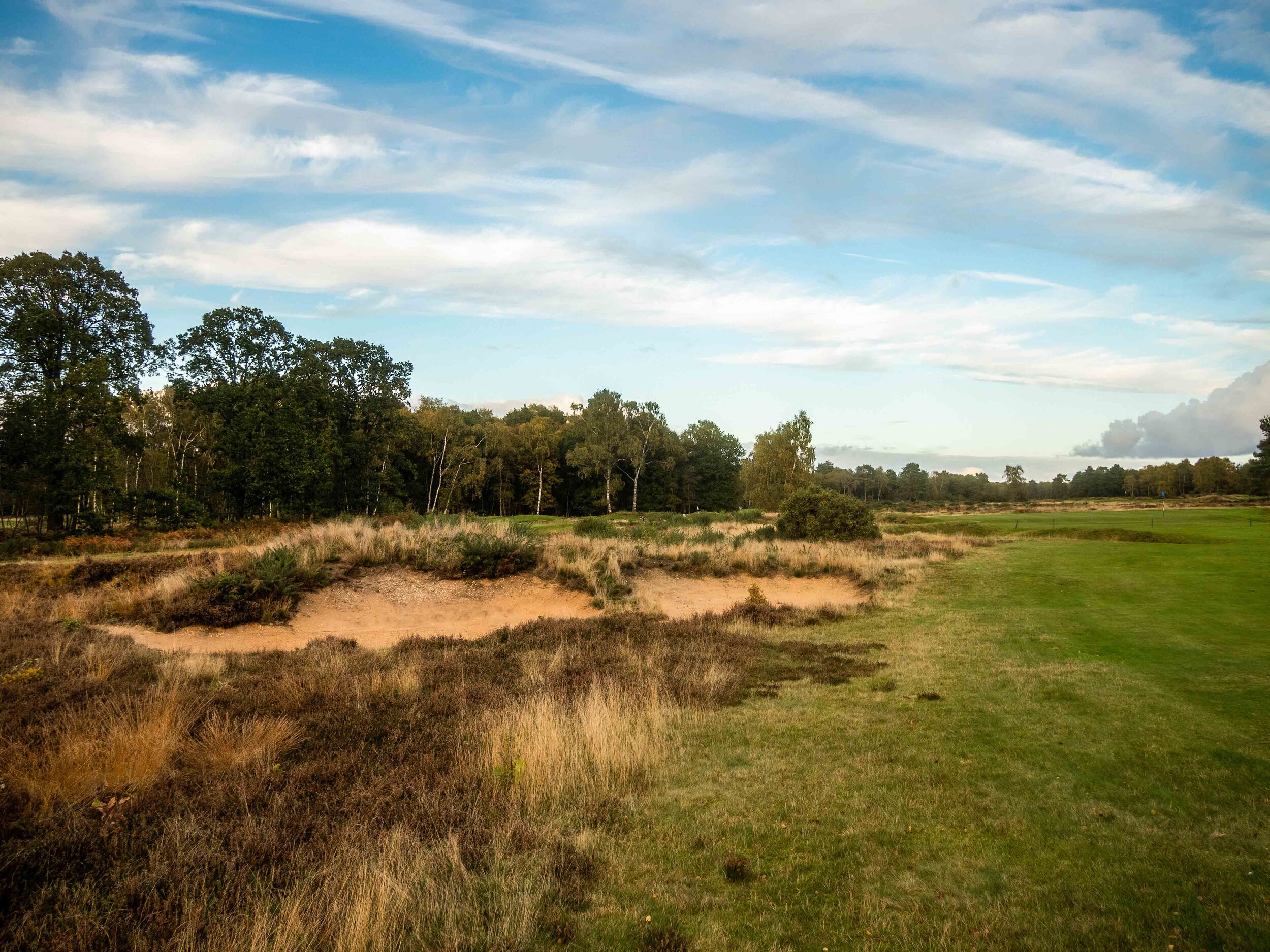
This bunker stands tall, flashing above grade…but still blends seamlessly into the surrounding textures.
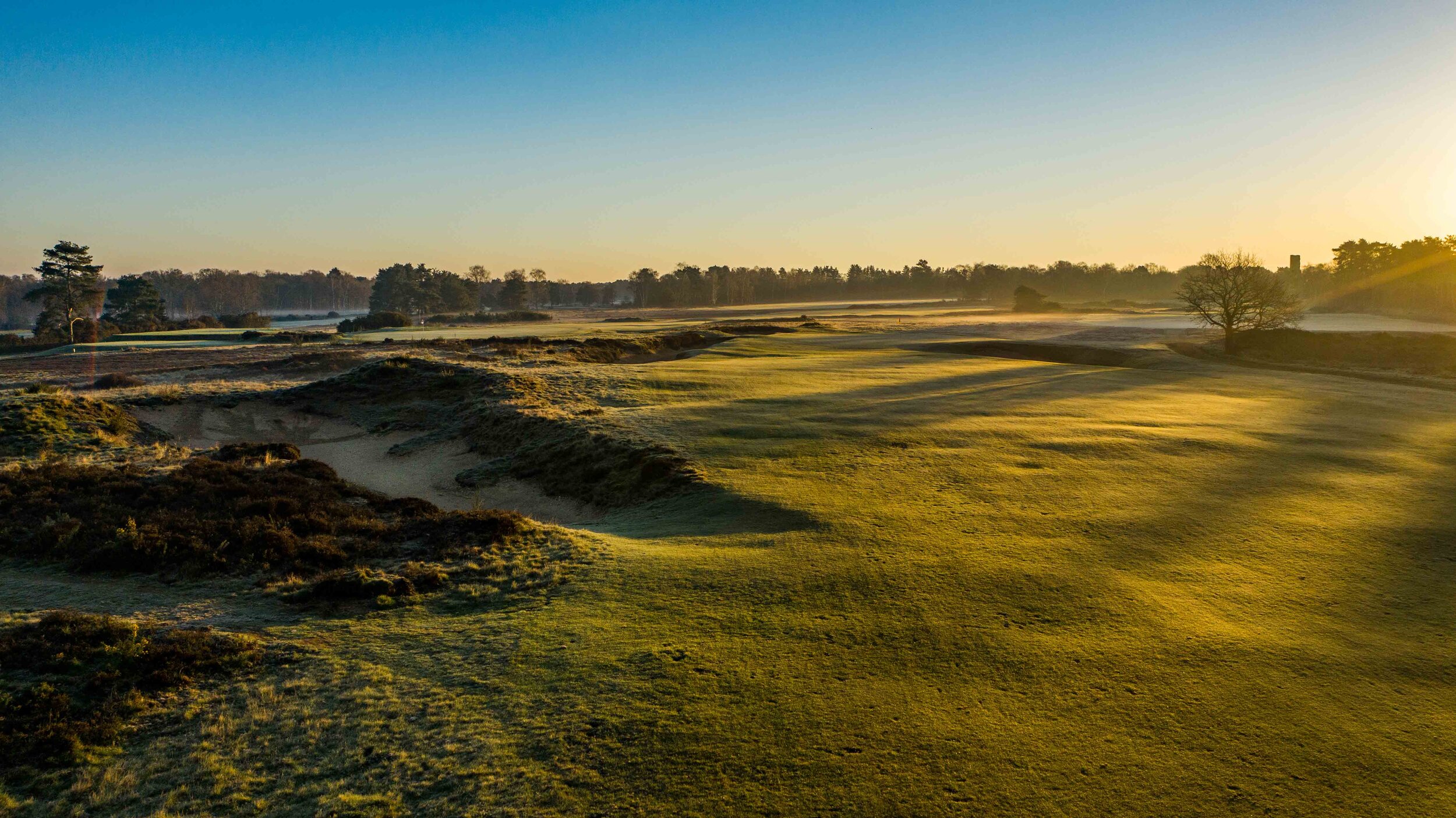
Tree removal behind the second green opened-up a deceptively distant vista.
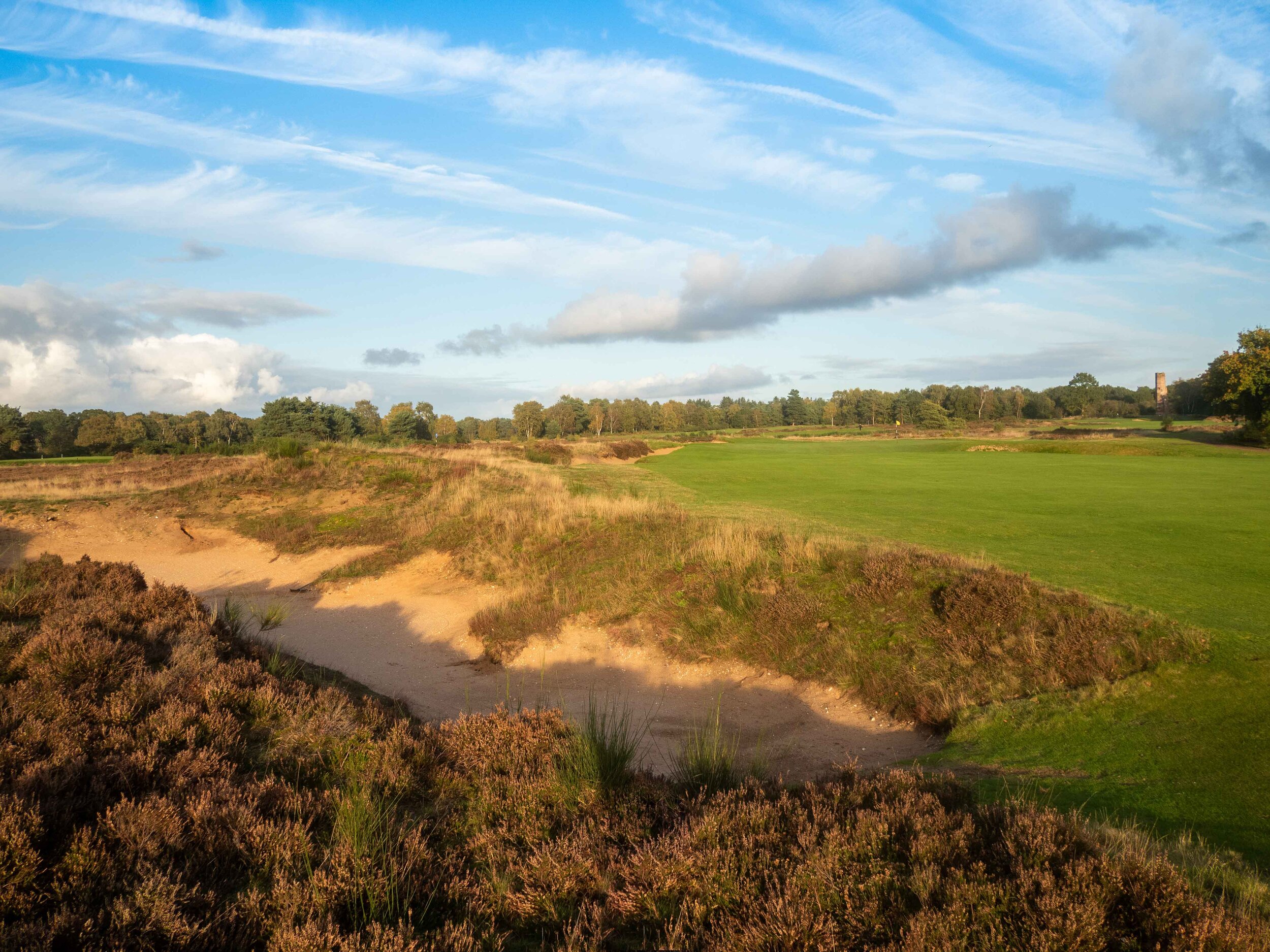
A heather-clad bunker, hiding left of the second fairway.
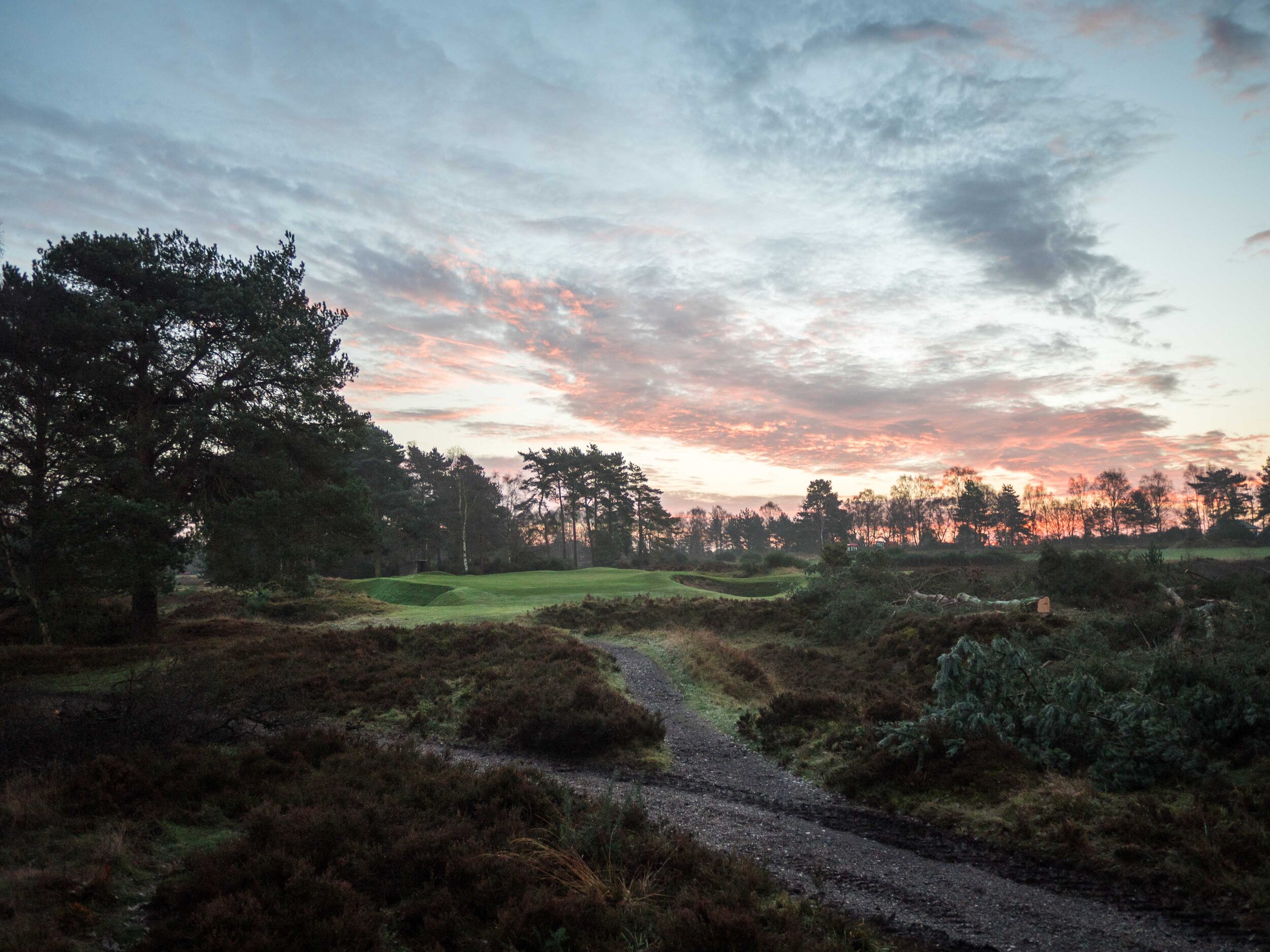
Tree management at sunrise!
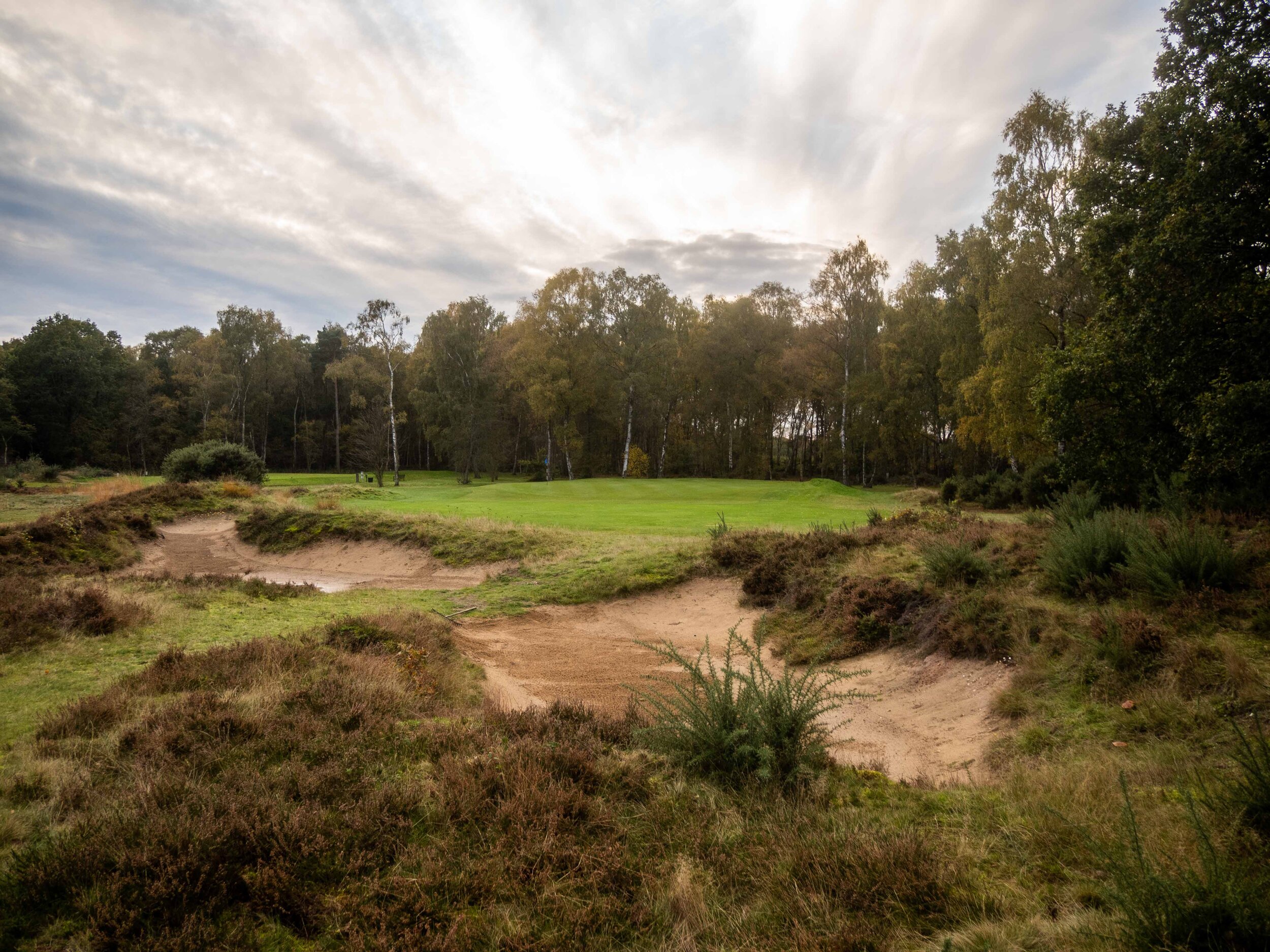
Cross-bunker with restored foot bridge.
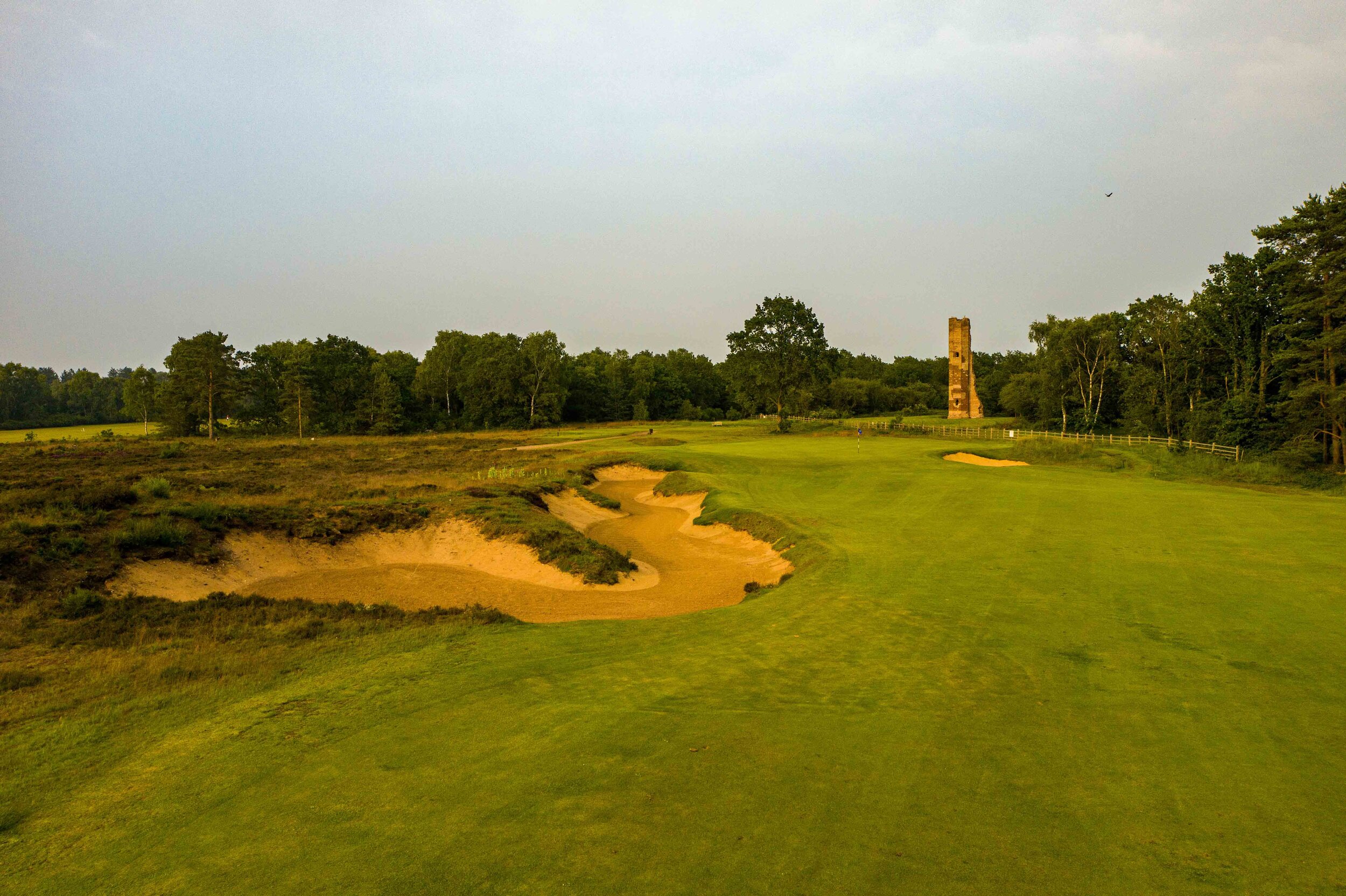
The original extents of this oft-photogographed bunker are recaptured, with the green-side tie-in reworked to reduce wear from green to tee foot-traffic.
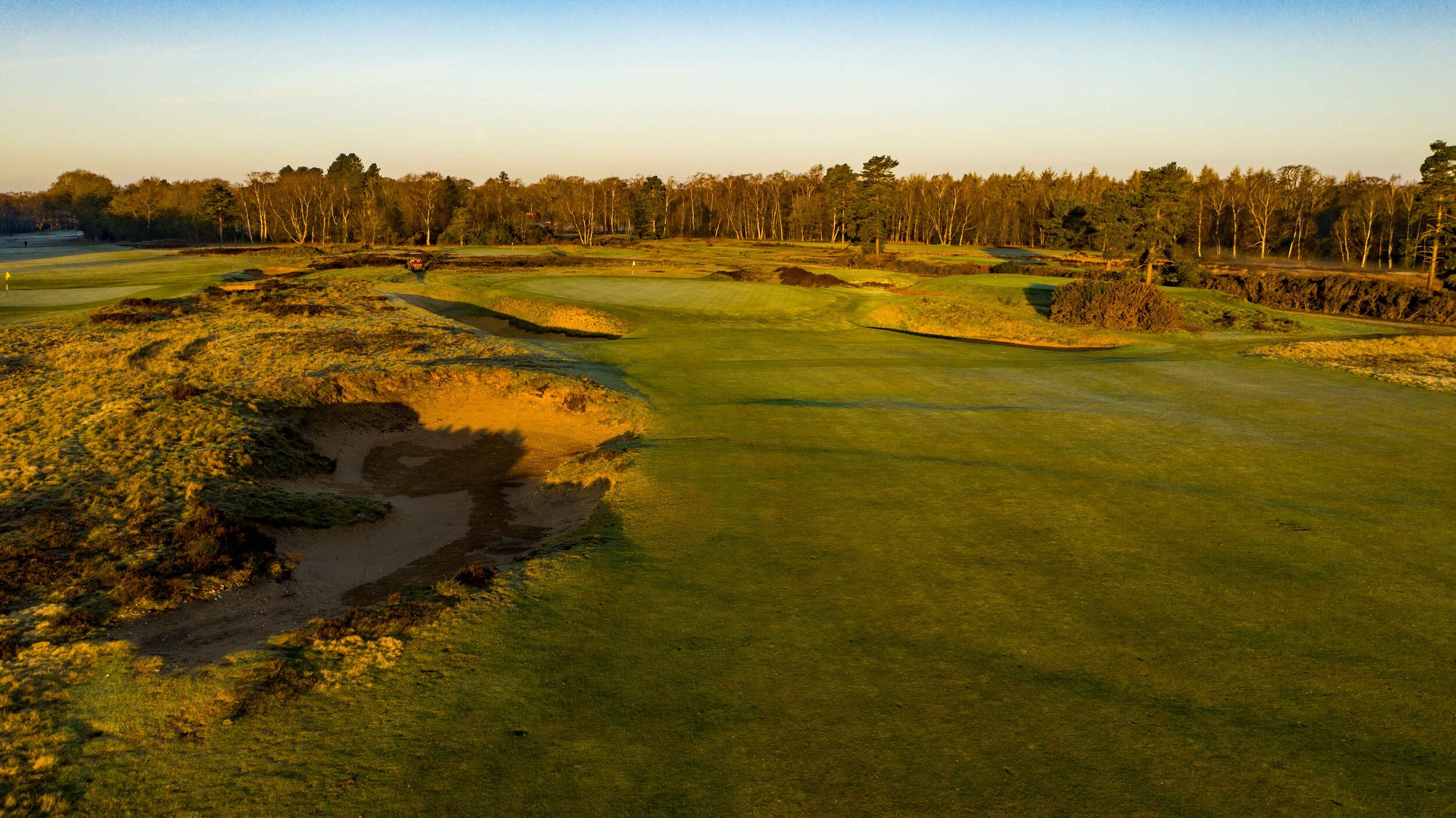
While restoring the beauty of the original bunker shapes, access was improved by artfully folding down the inside bunker edges.
Three-year (plus) phased restoration of the Hotchkin course, and its heathland environment, with a directive to improve the conditioning, maintainability, and accessibility of over 100 bunkers, while retaining their infamous boldness.
[Construction Team: Brian Schneider, Eric Iverson; Angela Moser.]
Ranked #66 on Golf Magazine’s world list.
Old Petty - Cabot Highlands (Inverness-shire; Scotland) - Tom Doak - 2022 to … - Lead Associate
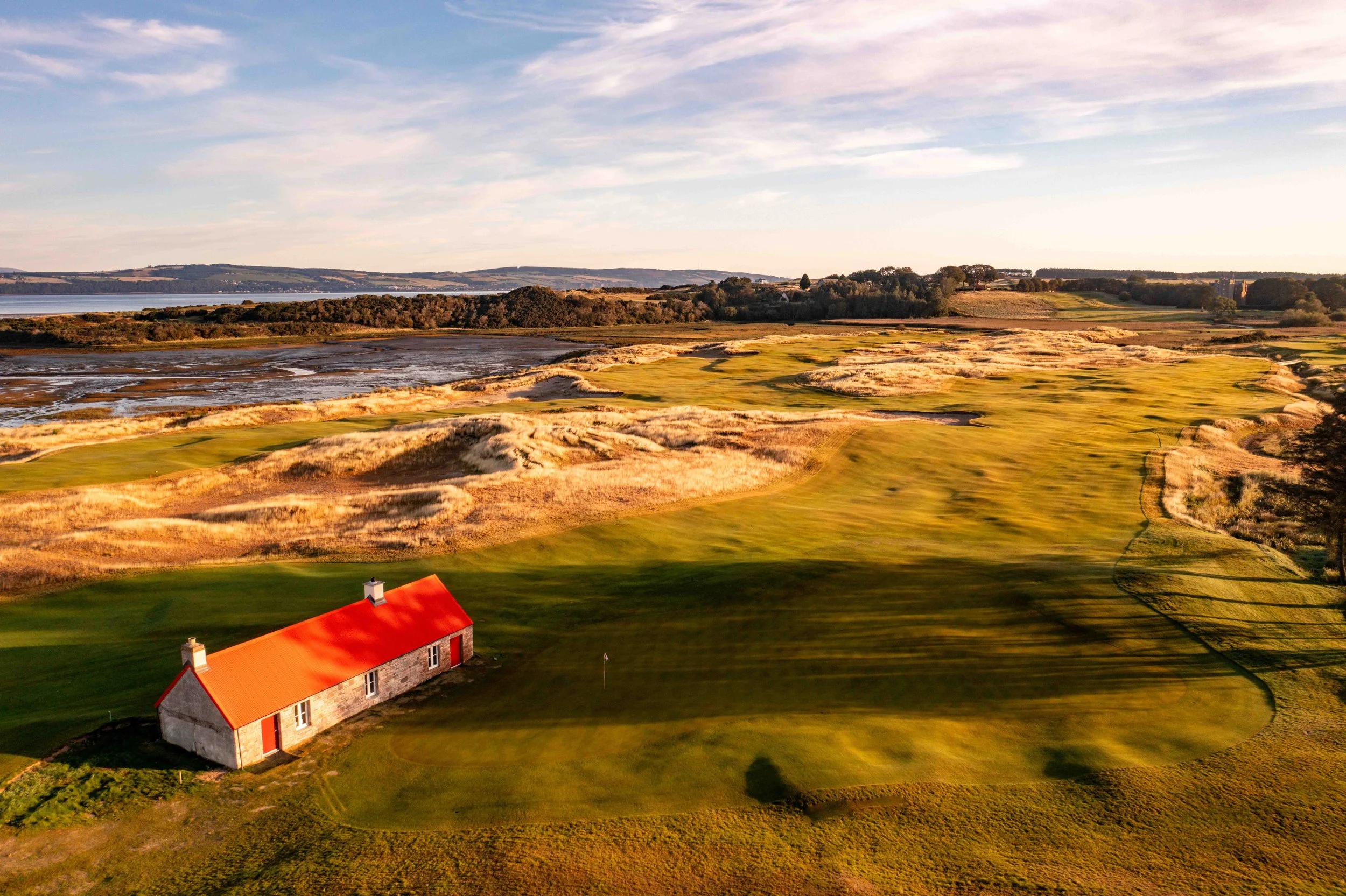
The green nestles by an old bothy.
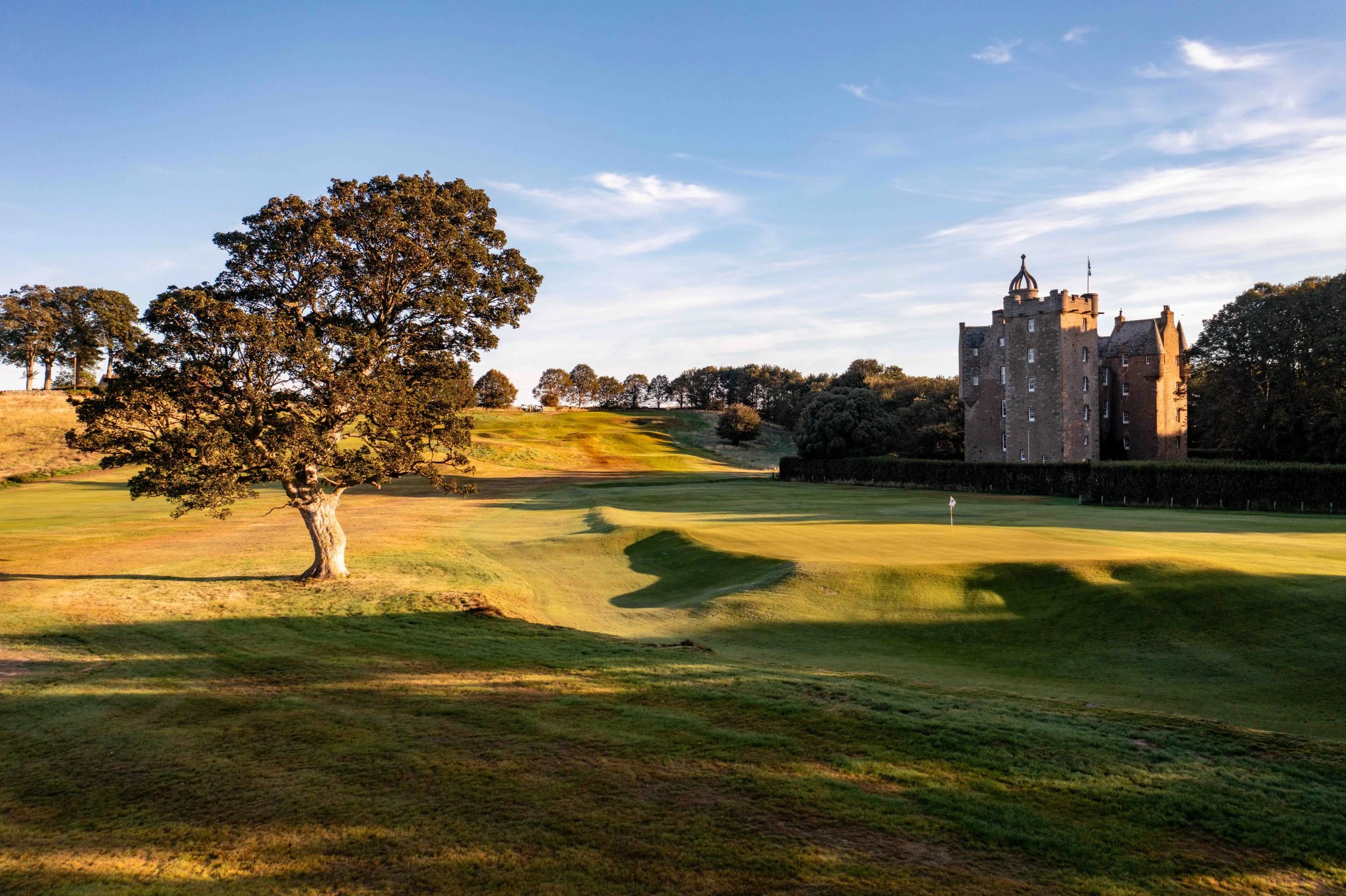
A long, downhill par three flirts with Castle Stuart.
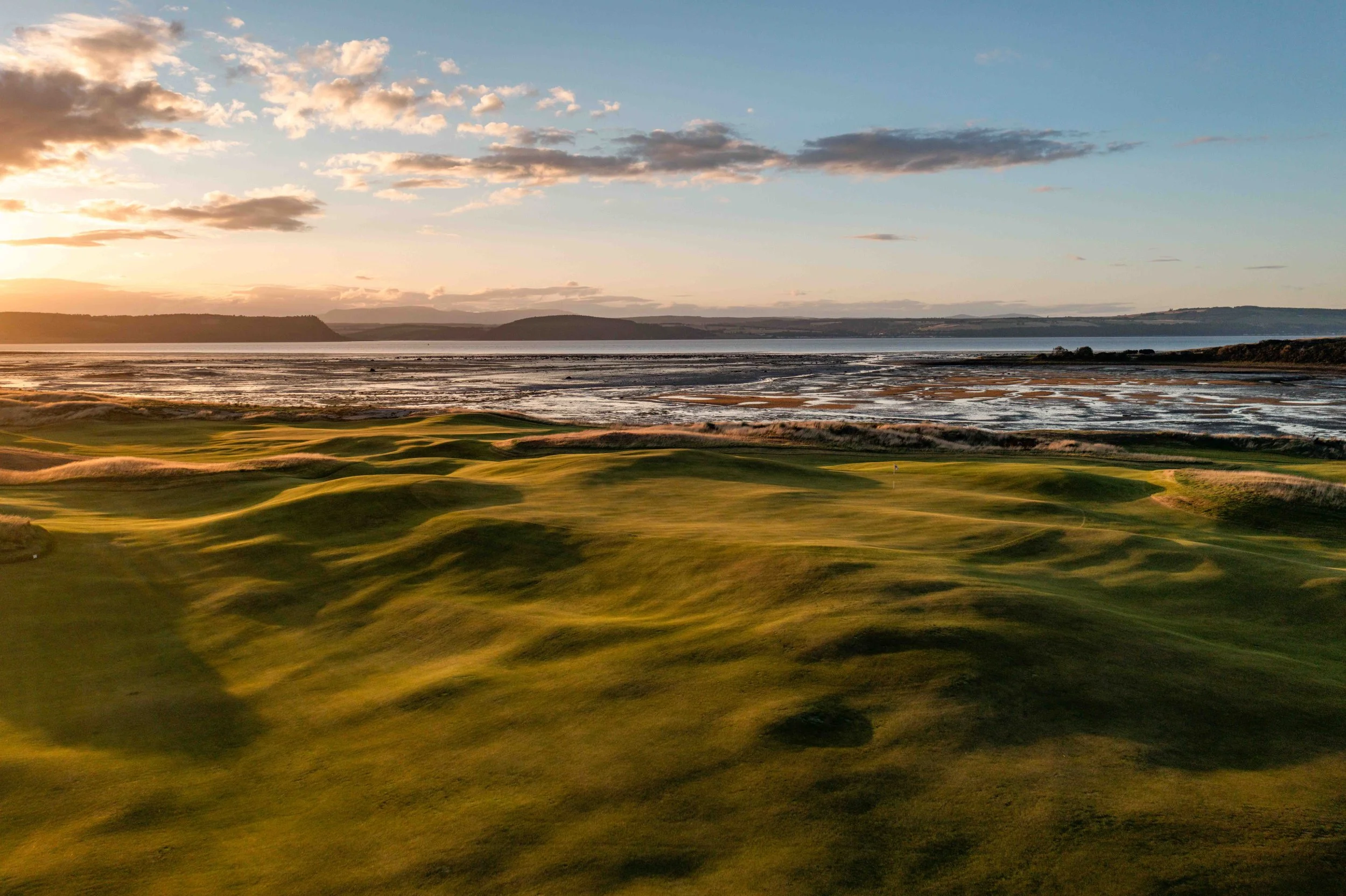
A bunker less short hole, the green is inspired by the second green at the Old Course.
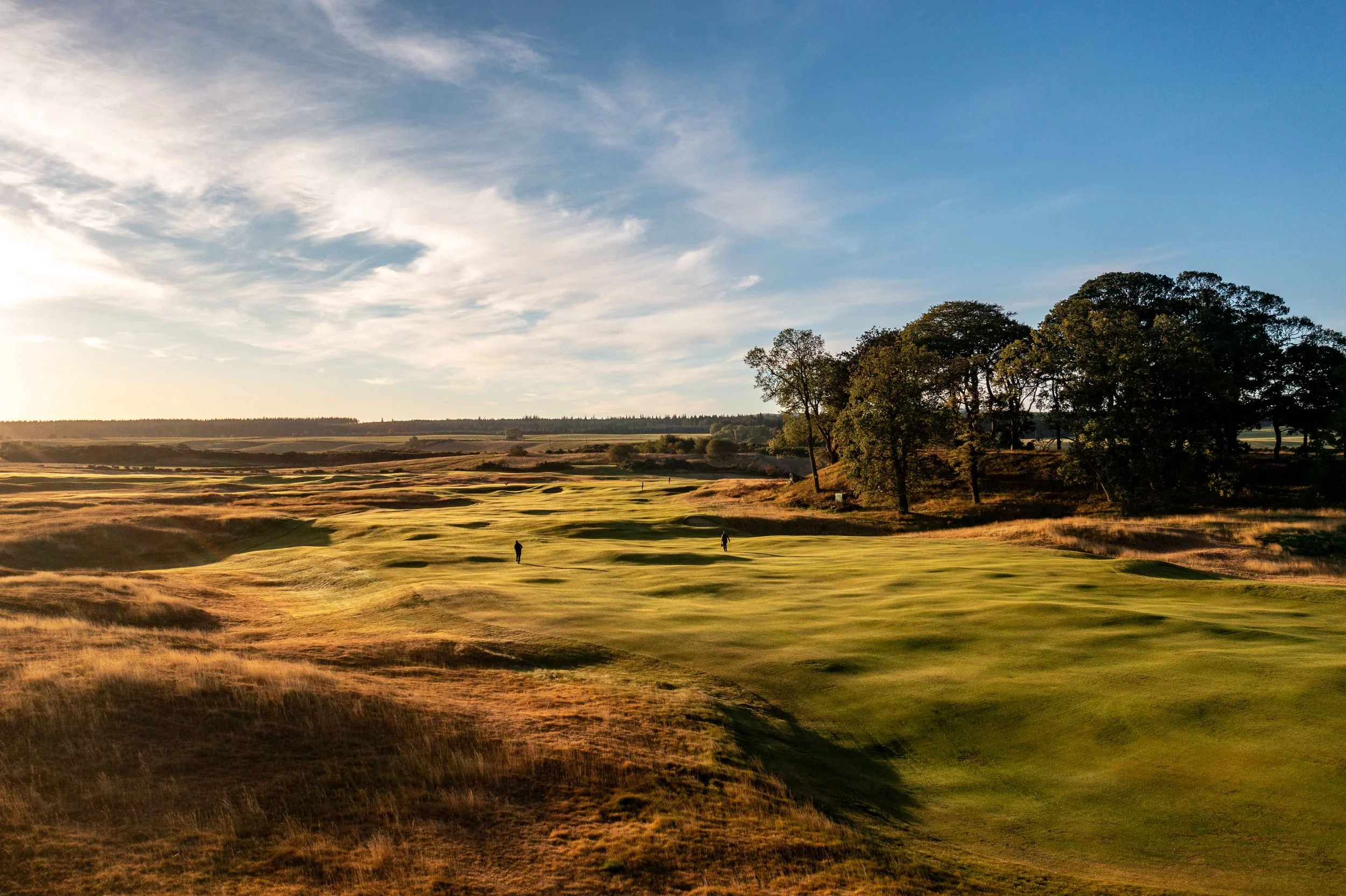
A strong four wraps around a copse of beech trees; the line of charm is guarded by a nasty pot and deep hollow.

The blind approach to this short par 5 is guided by the turret of Castle Stuart.
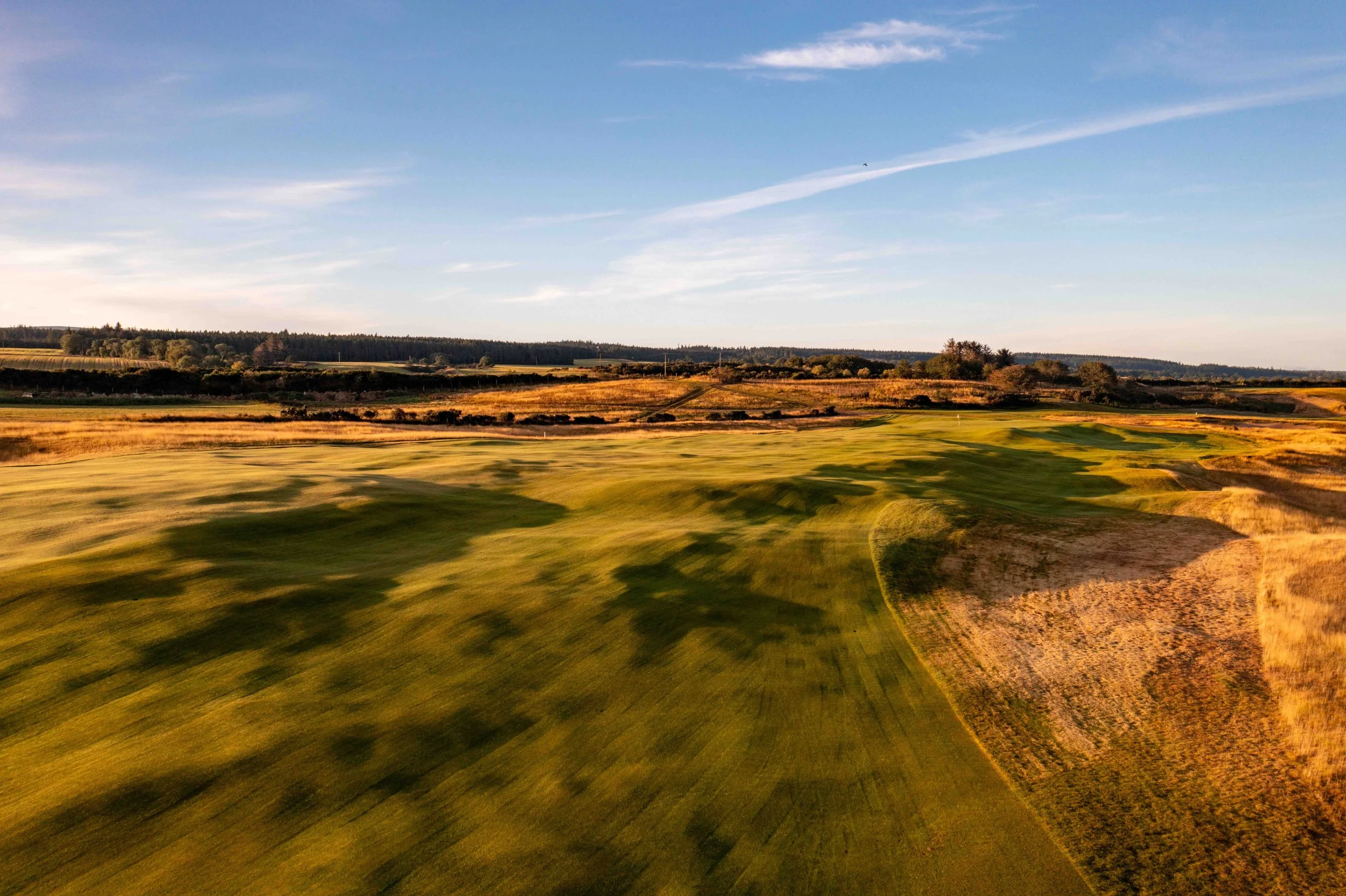
The drive angles onto a rumpled ridge.

A long four drapes over the hillside, with the small green suiting a cut approach from a hanging lie.
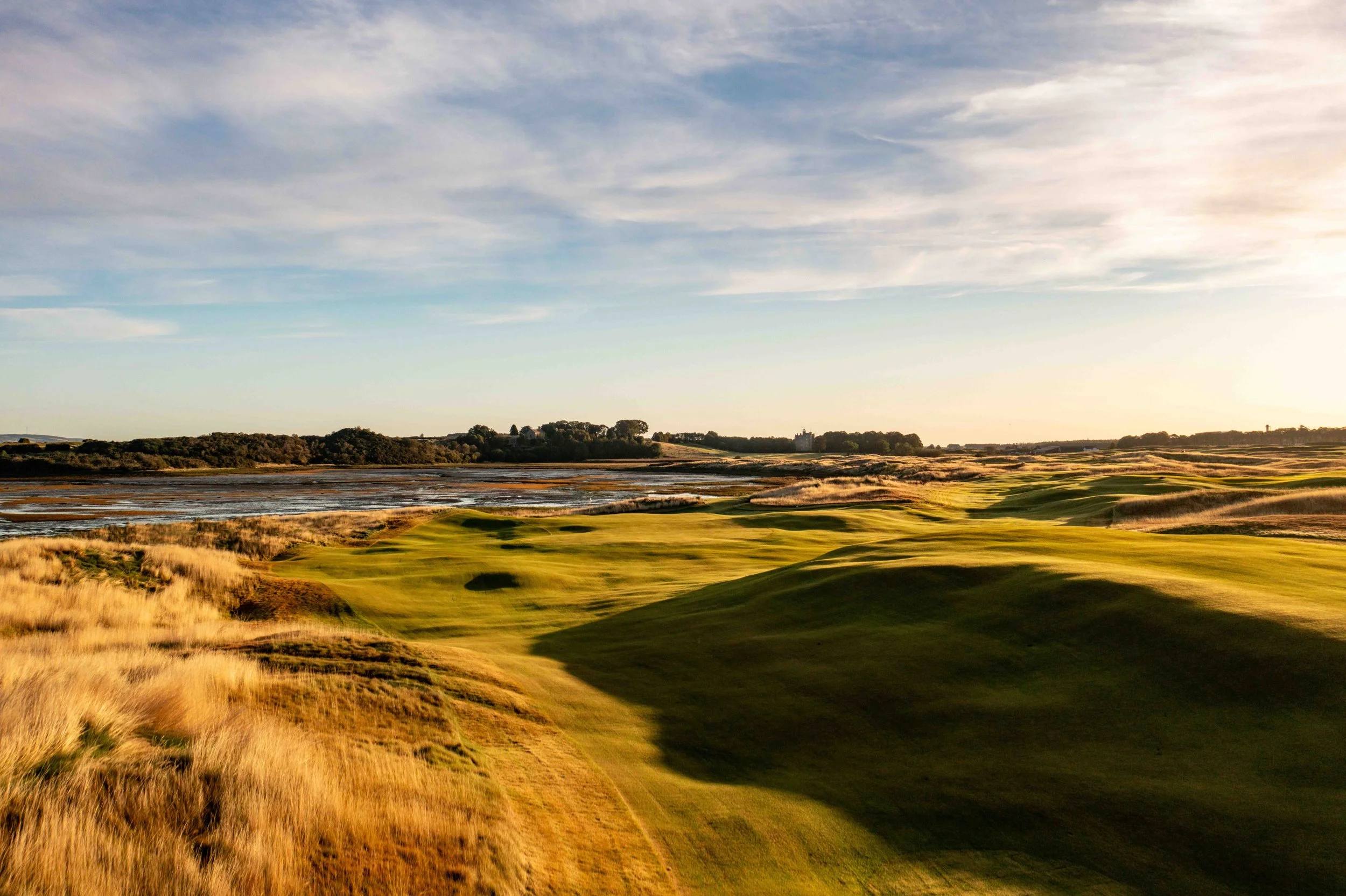
On the banks of the bay, the green of this long par 3 sits deceptively beyond the hogged approach.

A long Par 5 tracks the bay, heading towards Castle Stuart.
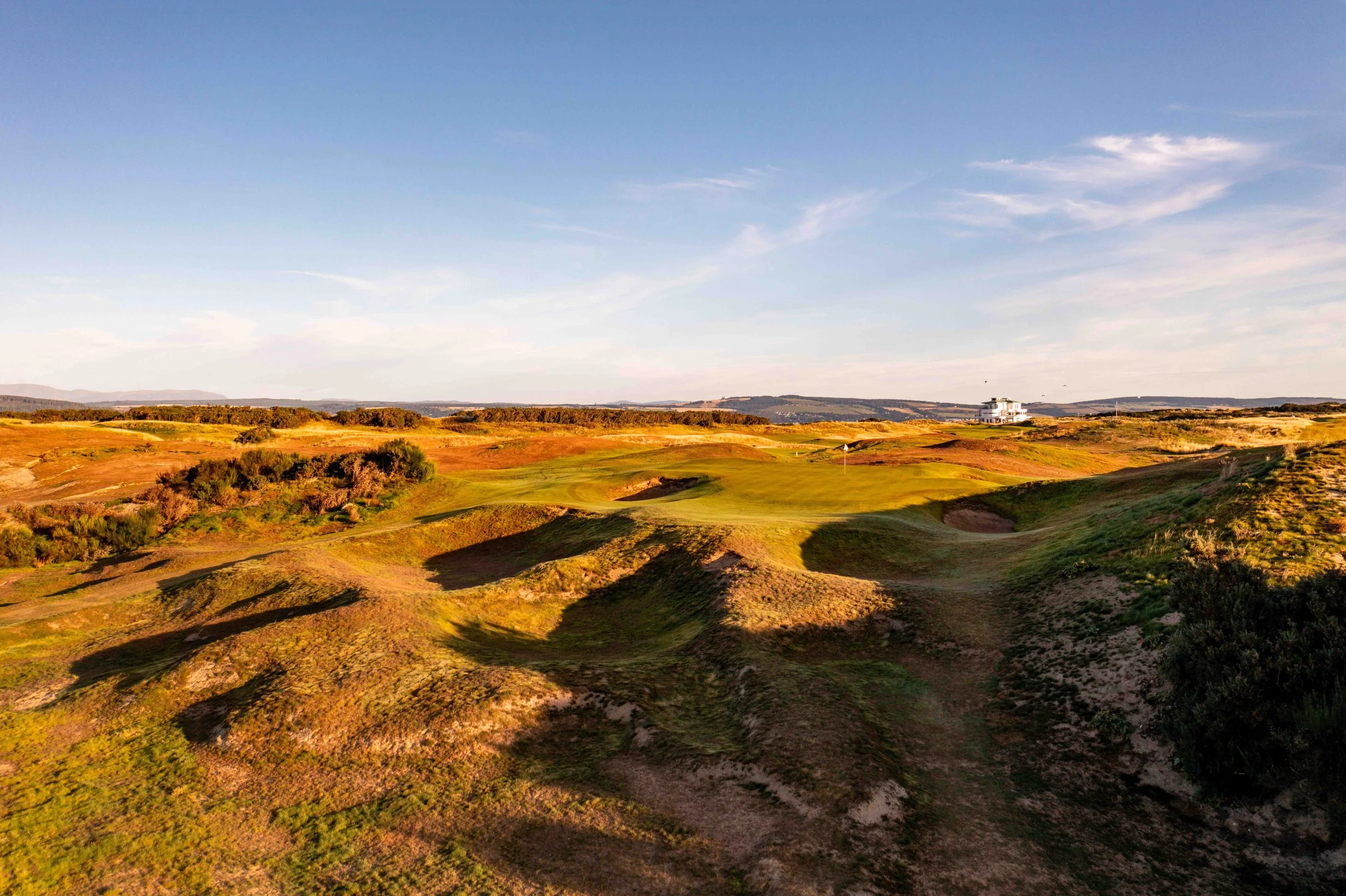
A treacherous three plays over an old quarry and across the prevailing wind.
A second courses journeys towards Old Petty, and then down past Castle Stuart towards the Moray Firth. Contouring on approach and around the greens dictates playing strategy.
Alwoodley (Yorkshire; England) - 2019 to ... - Consulting / Shaping
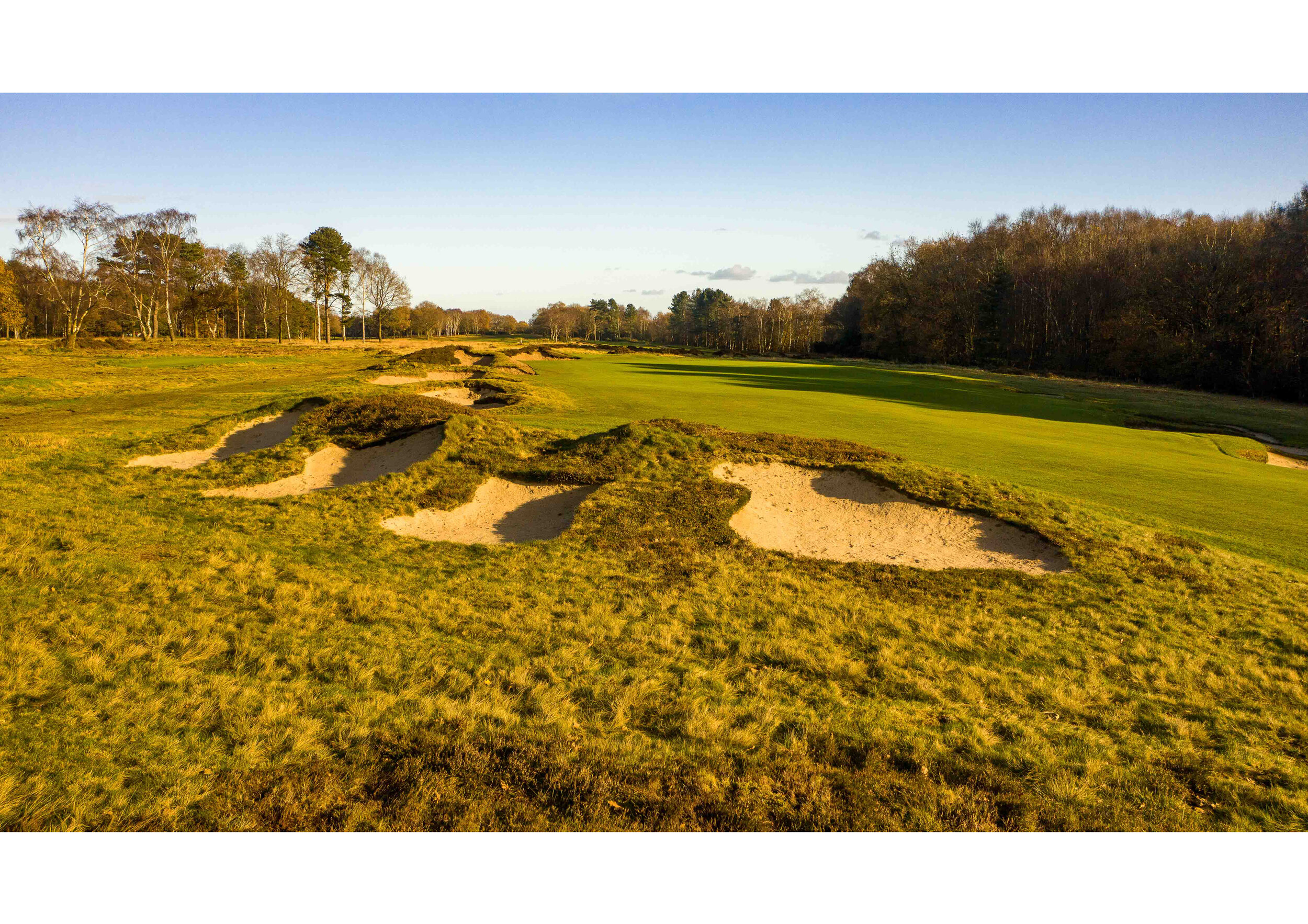
The funky back-left bunkers have been restored, to complete the iconic picture from MacKenzie’s Golf Architecture book. Clad in heather, they have an instant age.
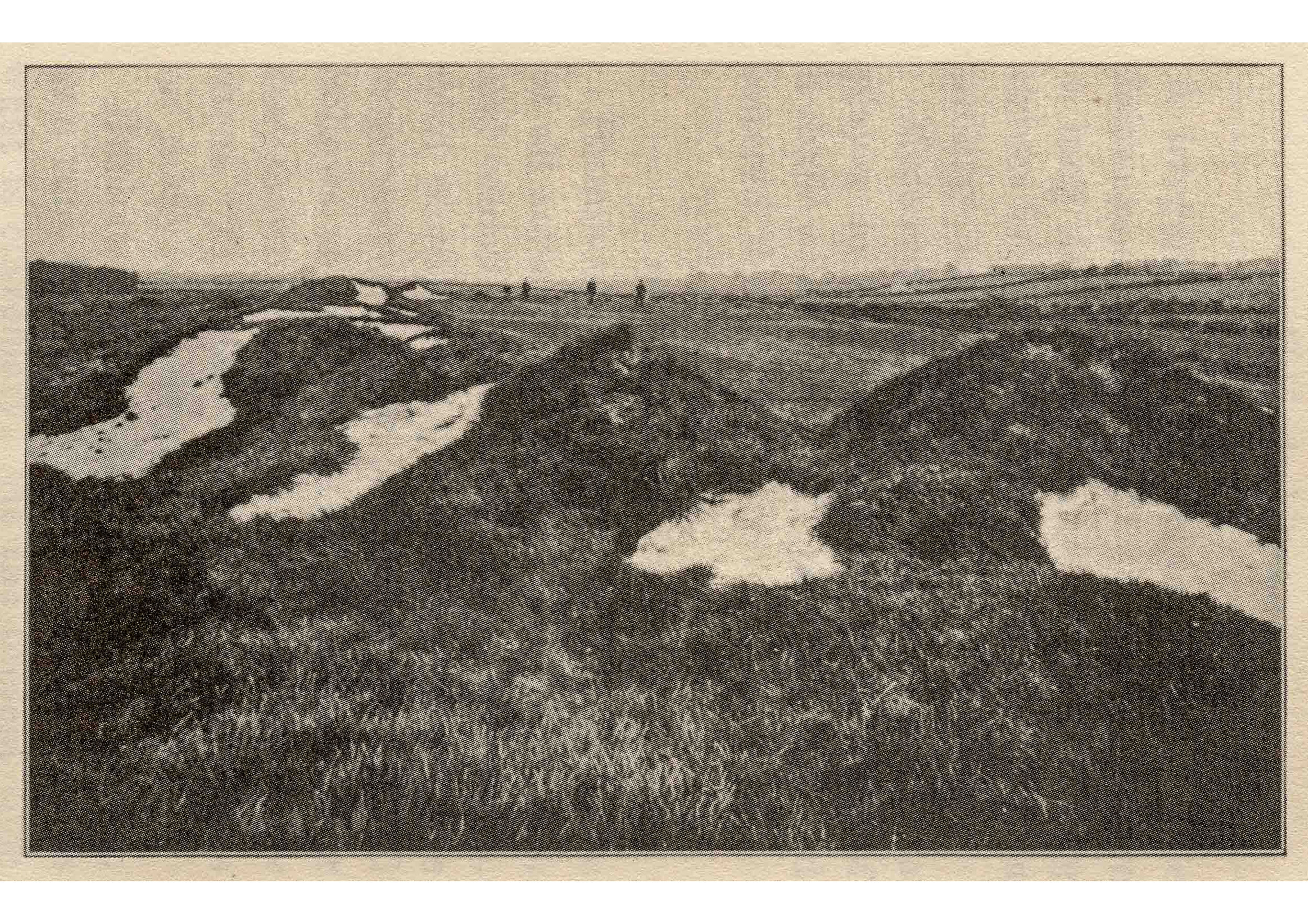
…the iconic picture!
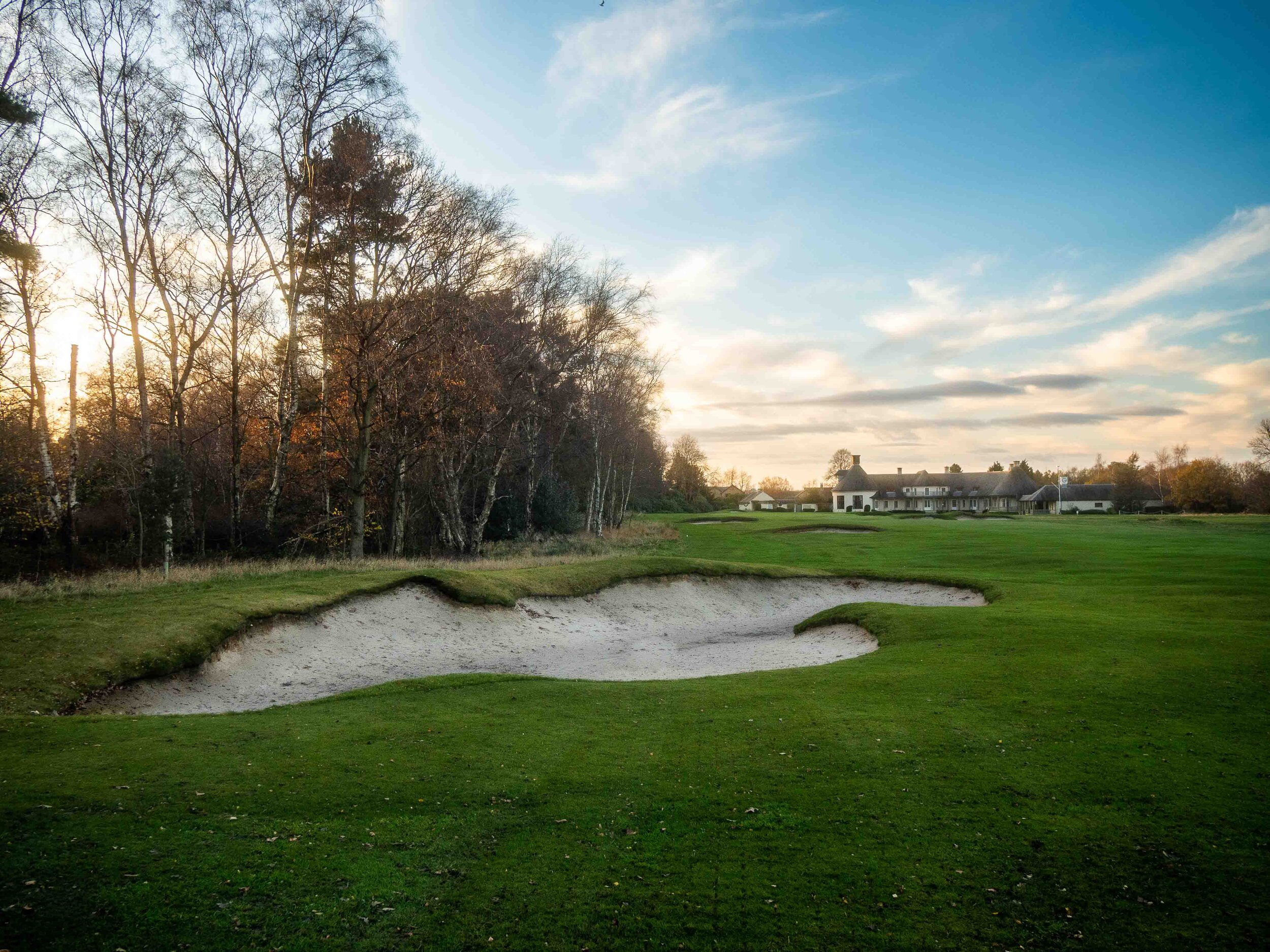
Two contemporary bunkers stifled the original strategy of the hole, especially for the average golfer. Filling in the first, and flipping back/twisting the second bunker has replicated the strategy of a bank of heather that dates to MacKenzie’s original layout.
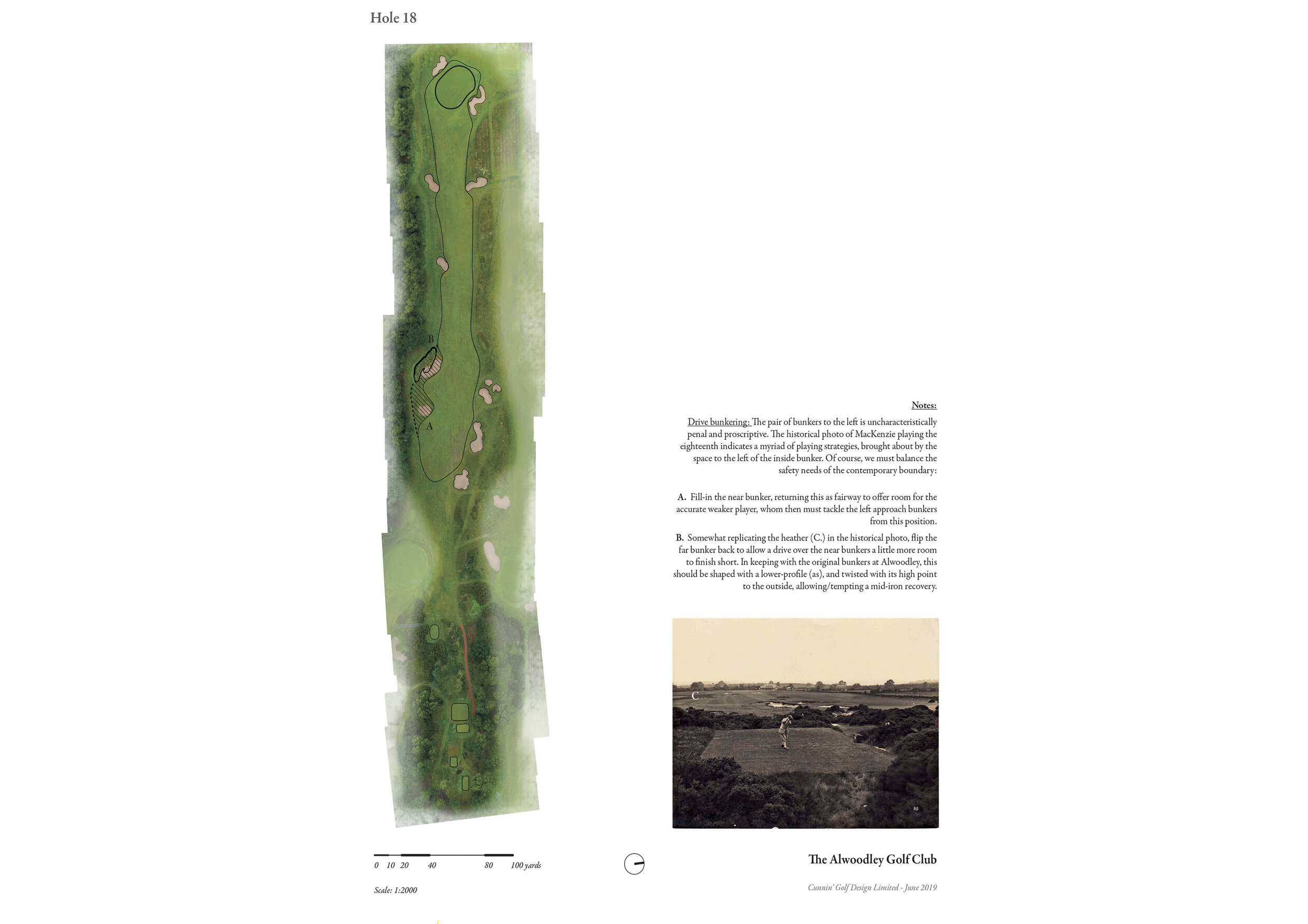
Plan.
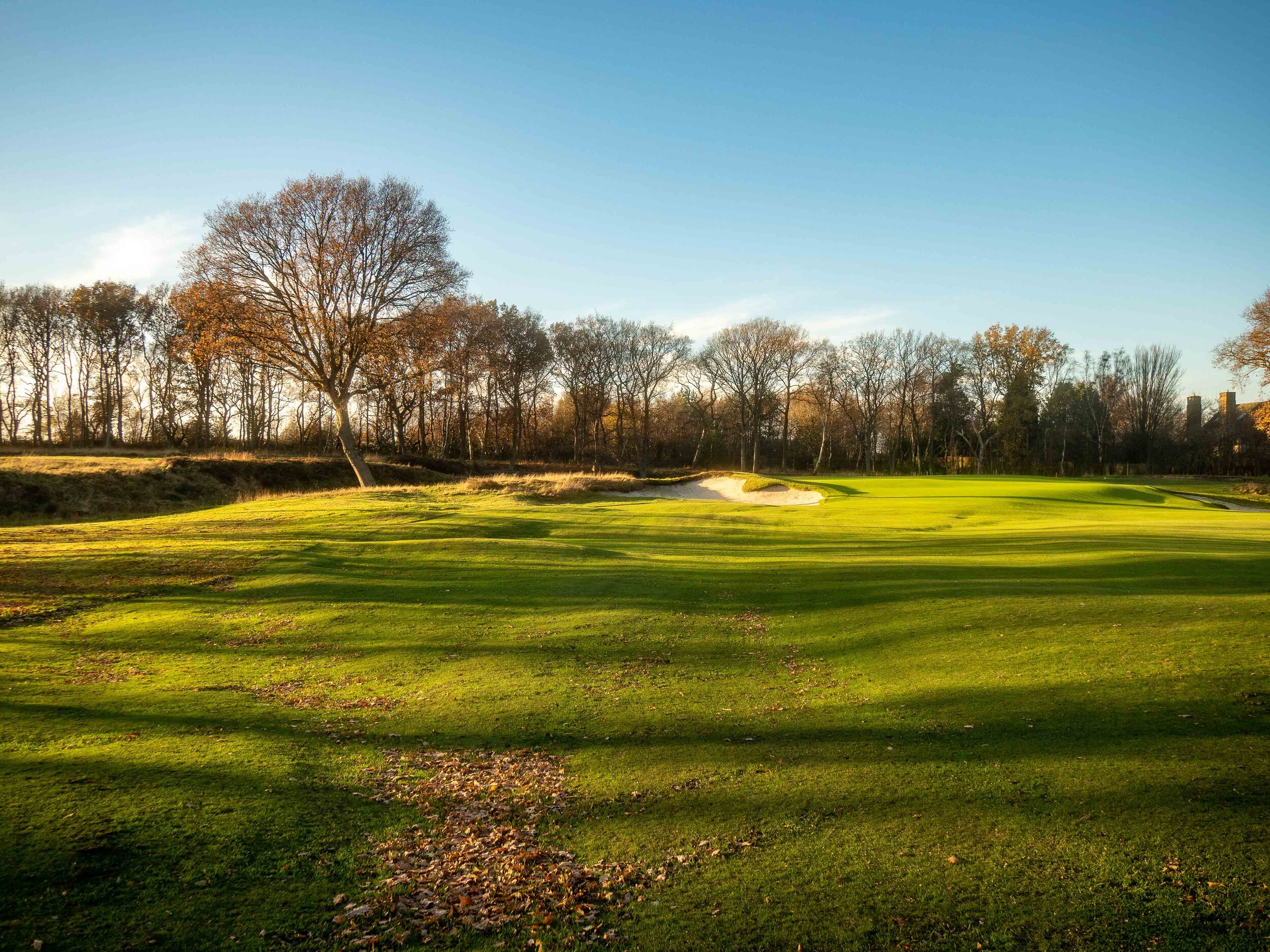
The left-green side bunker is extended into the full extent of its landform. Light-reshaping allows the left fairway line to migrate, as to appear to disappear into the natural pond.
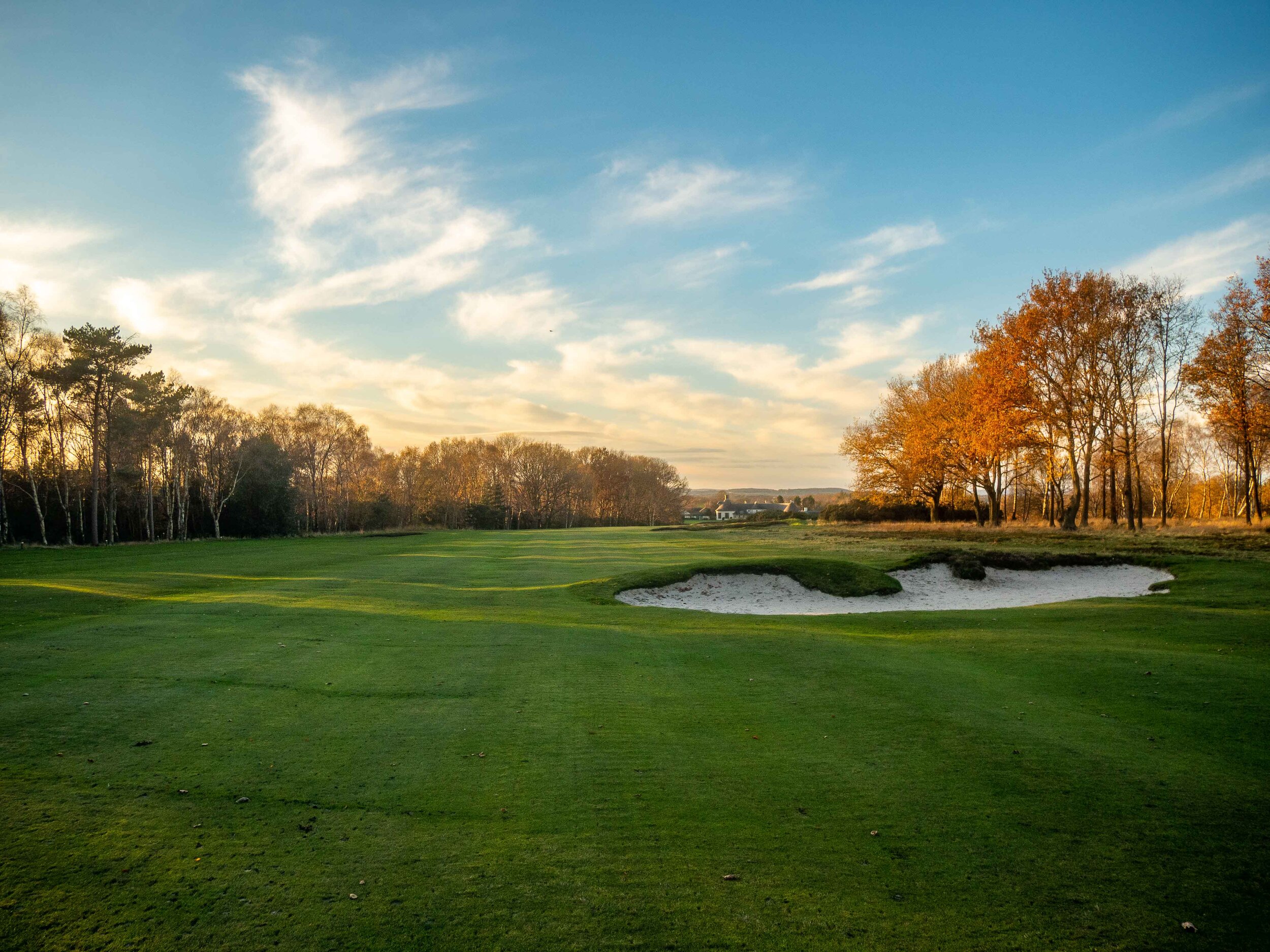
Artistry has been introduced to this bunker right of the fairway, while the floor has been brought back towards the tee to aid the recovery of the weaker golfer whom invariably finds it.
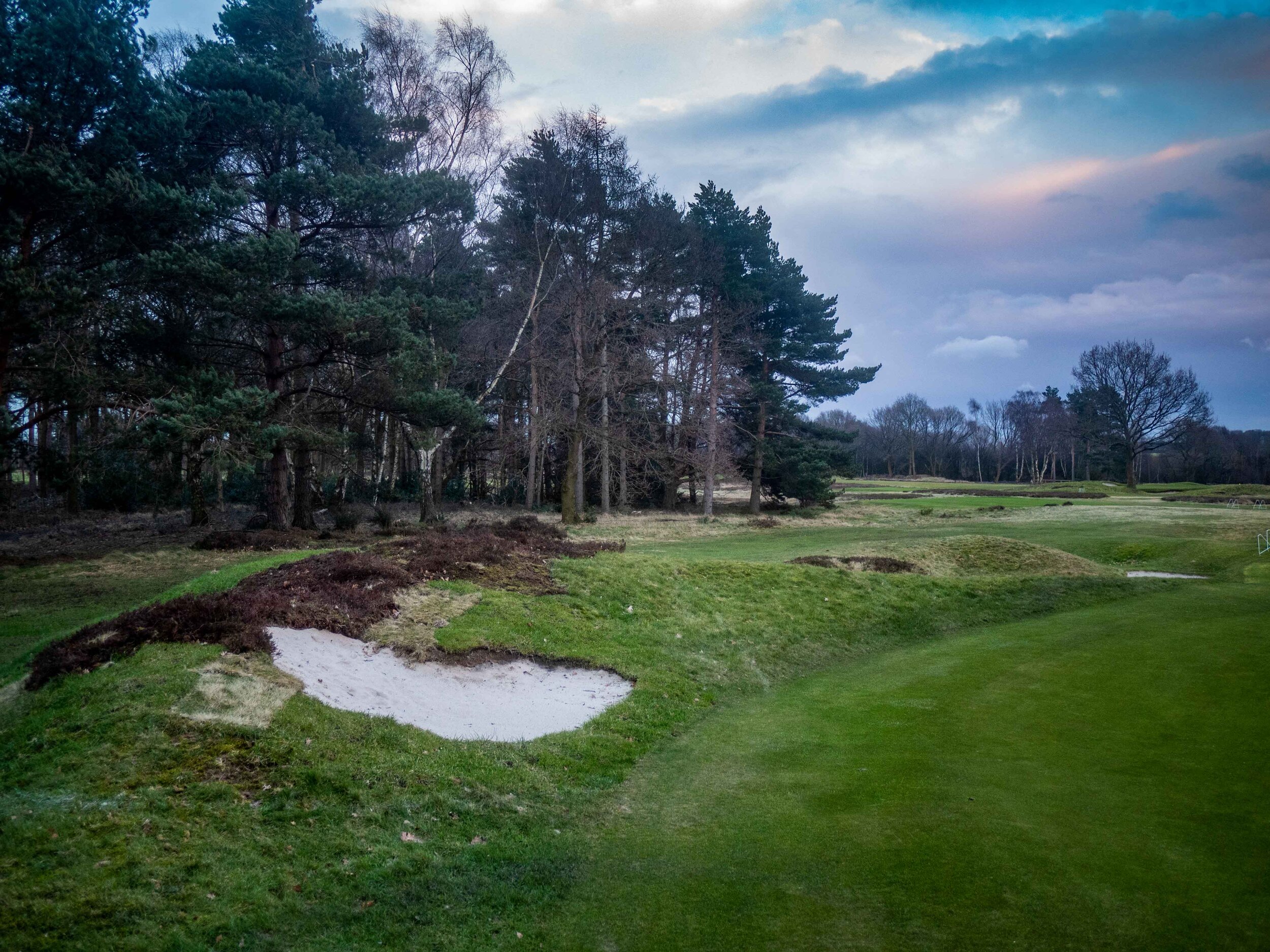
Helping to tidy-up an awkward to maintain landform, this tiny rear bunker was reinstated as per a photo from the club’s Centenary book.
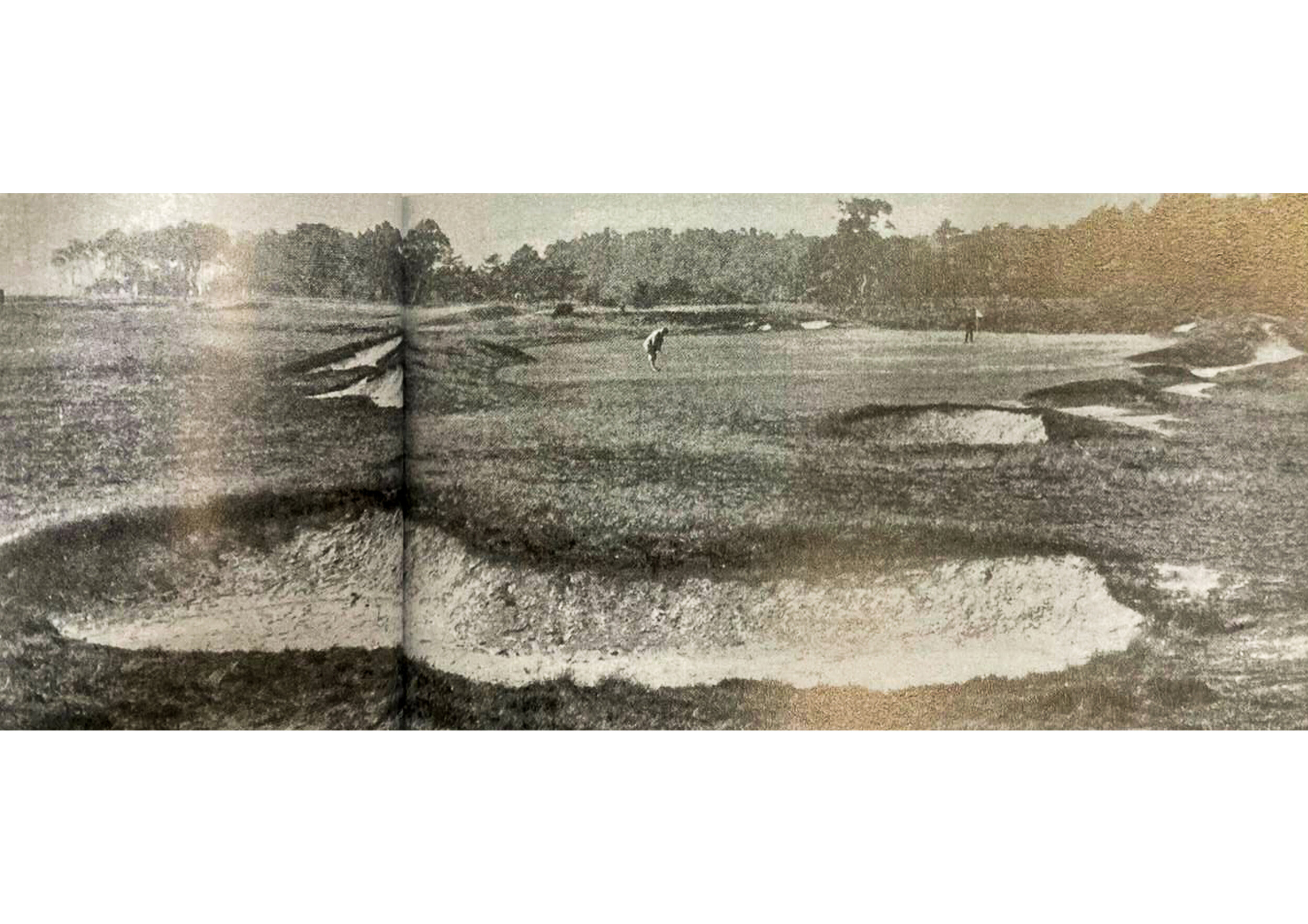
The cross-bunker short of the green has also been restored, as per this photo - note the composition and variety in scale of the original bunkering.
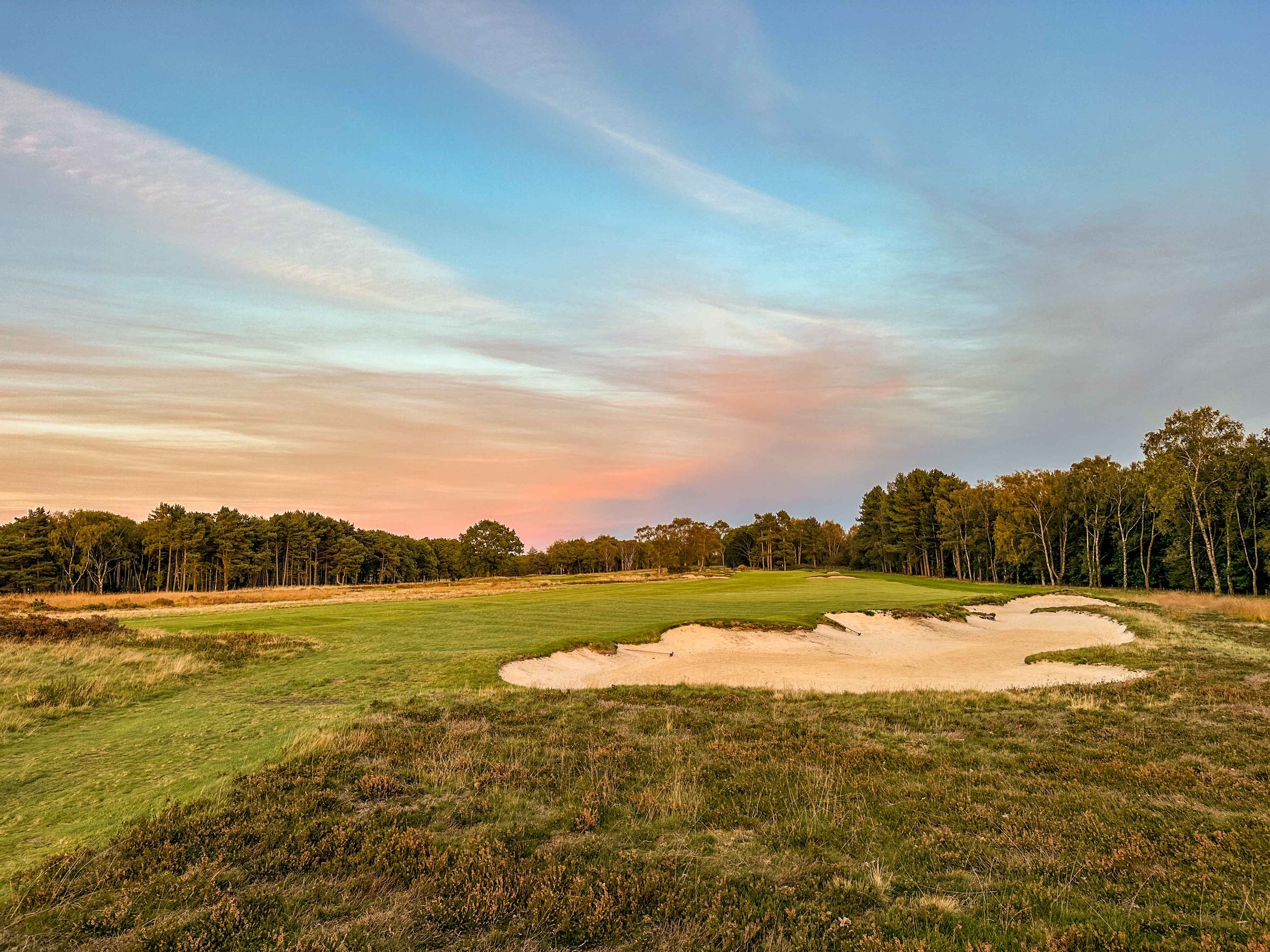
The restored carry bunker brings a scale of feature in keeping with the expansive heath.
A fresh set of eyes, aimed at honing-in the final details of MacKenzie’s first course. Subtle tweaks to mowing lines, the artistry of bunker edges and textures, and strategic restoration of the eighteenth have been addressed initially.
Positioned 40th in Golf World Magazine’s Top100 Golf Courses in Britain & Ireland.
Tara'Iti (Mangawhai; New Zealand) - Tom Doak / Renaissance Golf Design - 2013 to 2014 - Finish Shaping / Shaping
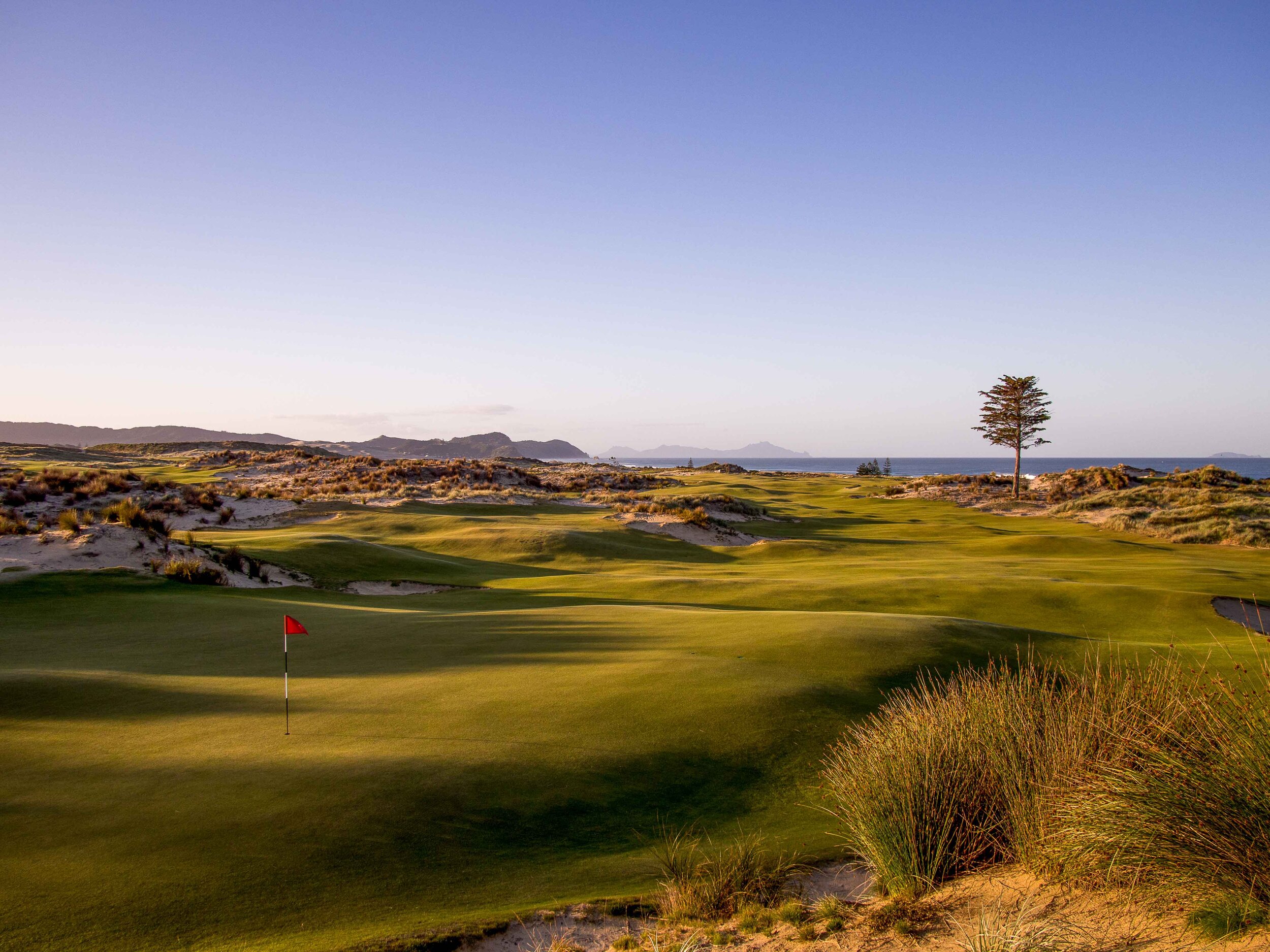
The final fairway is draped over rollicking small-to-medium scaled links contour.
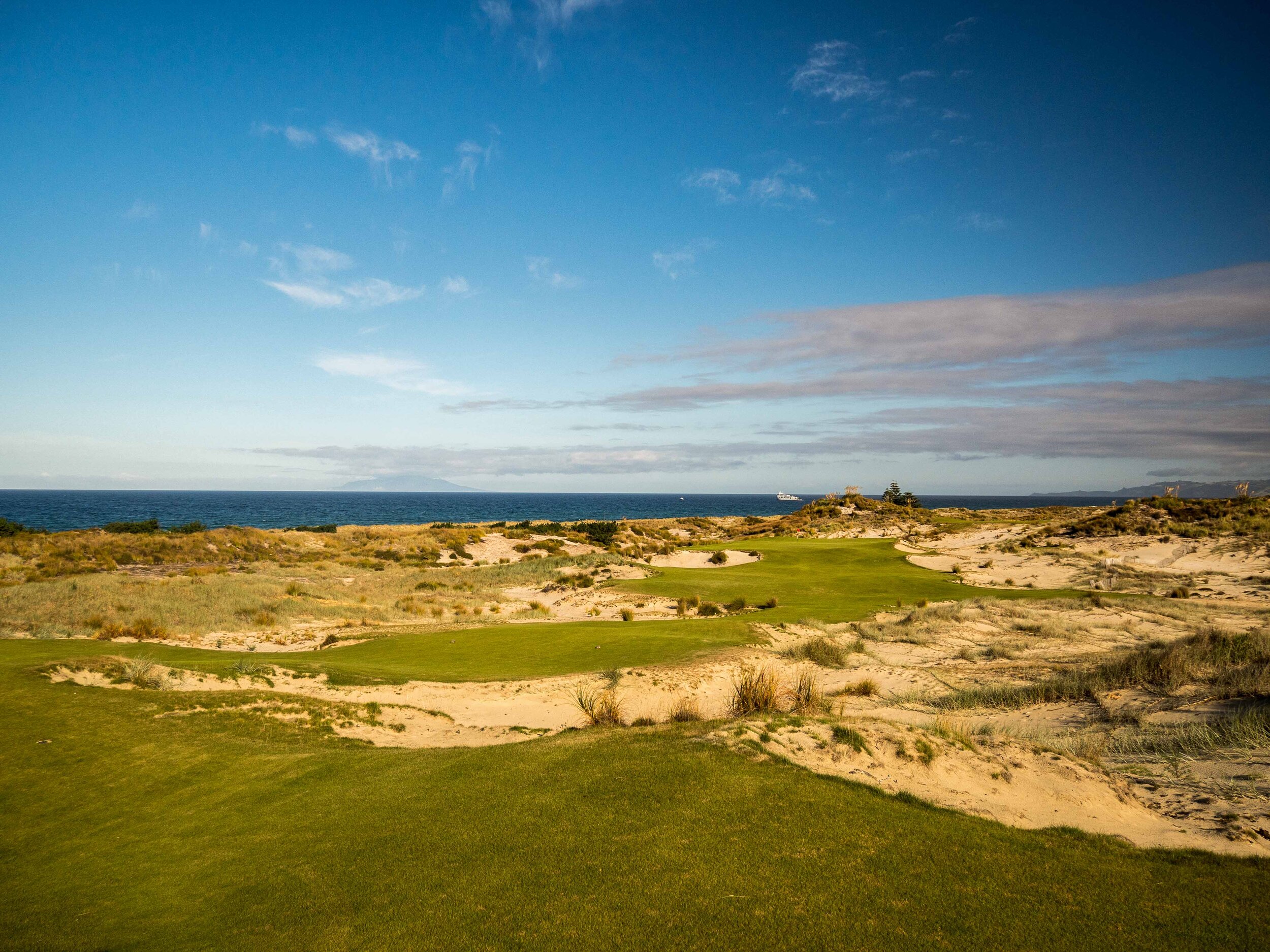
A beautifully composed par-the drops along the Pacific Coast.
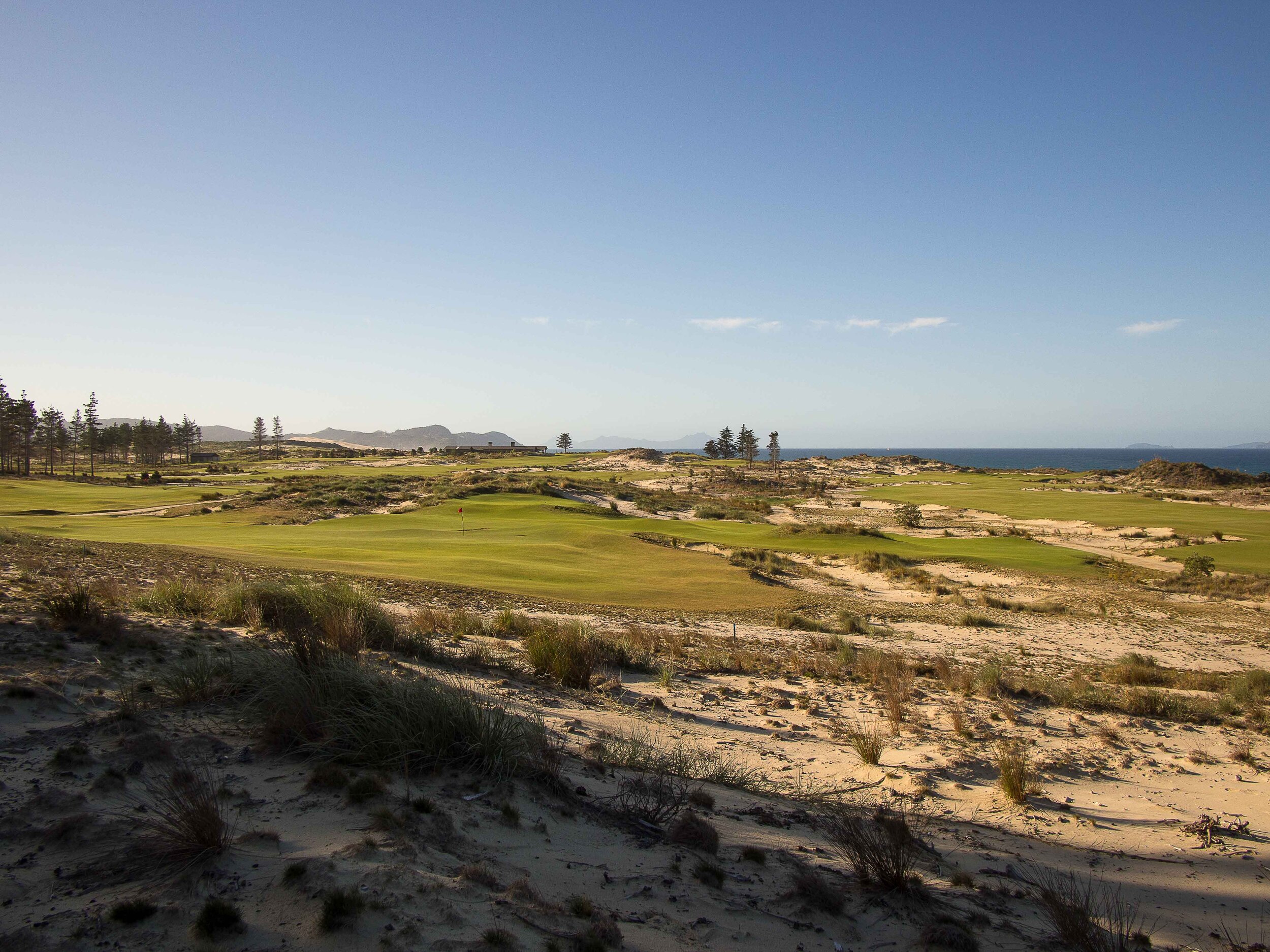
Reclaimed pine-forest; native landscape is re-established.
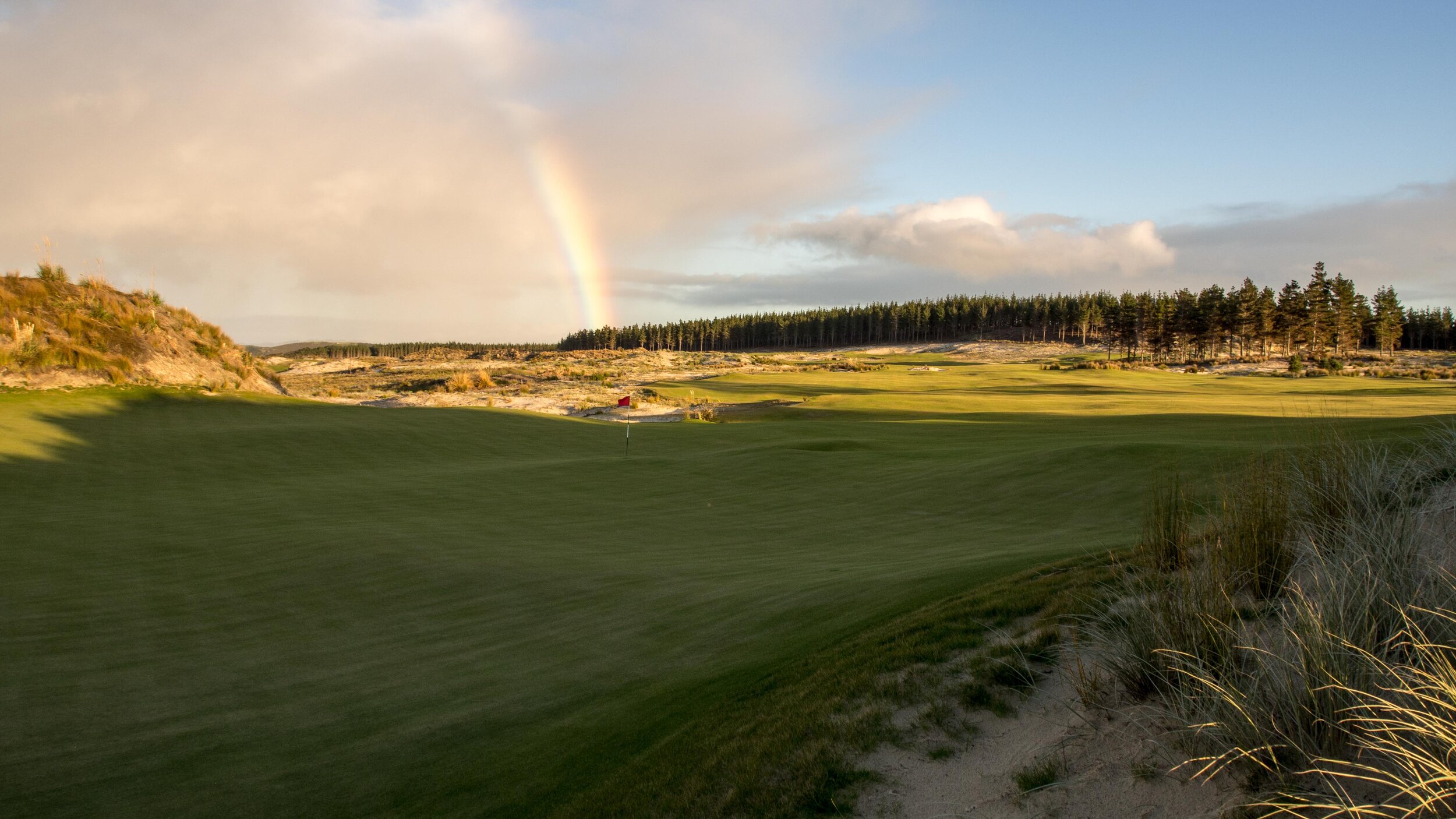
Fairway ripples are manipulated during the finish-shaping process.
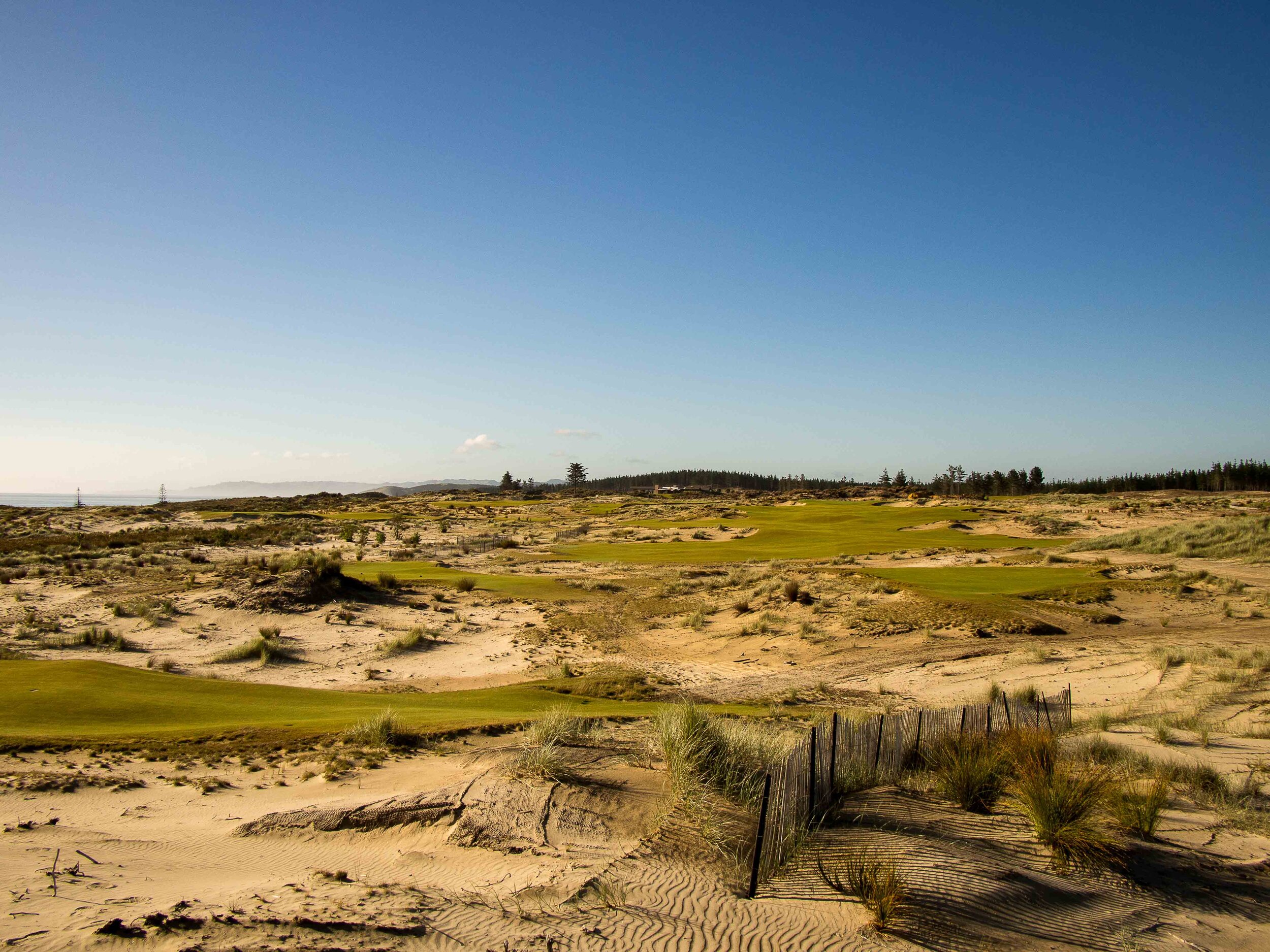
Created out of an expansive, feature-light rise - a drive close to the Principal’s Nose bunkering on the left will open up most hole locations.
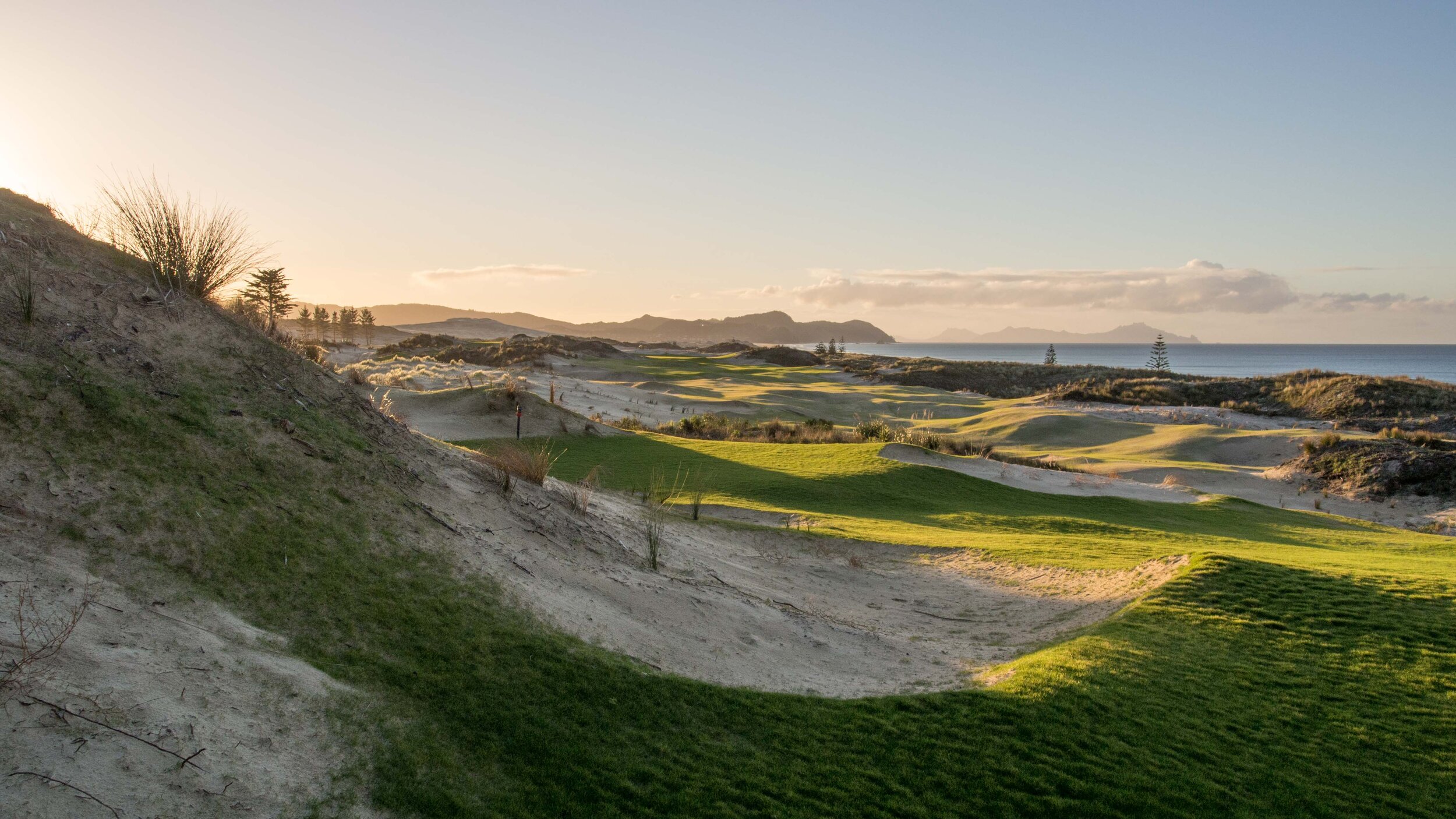
Tee decks are disguised to blend as green complexes; the heavily worked fairway has been detailed by trap-rake and hand-rake.
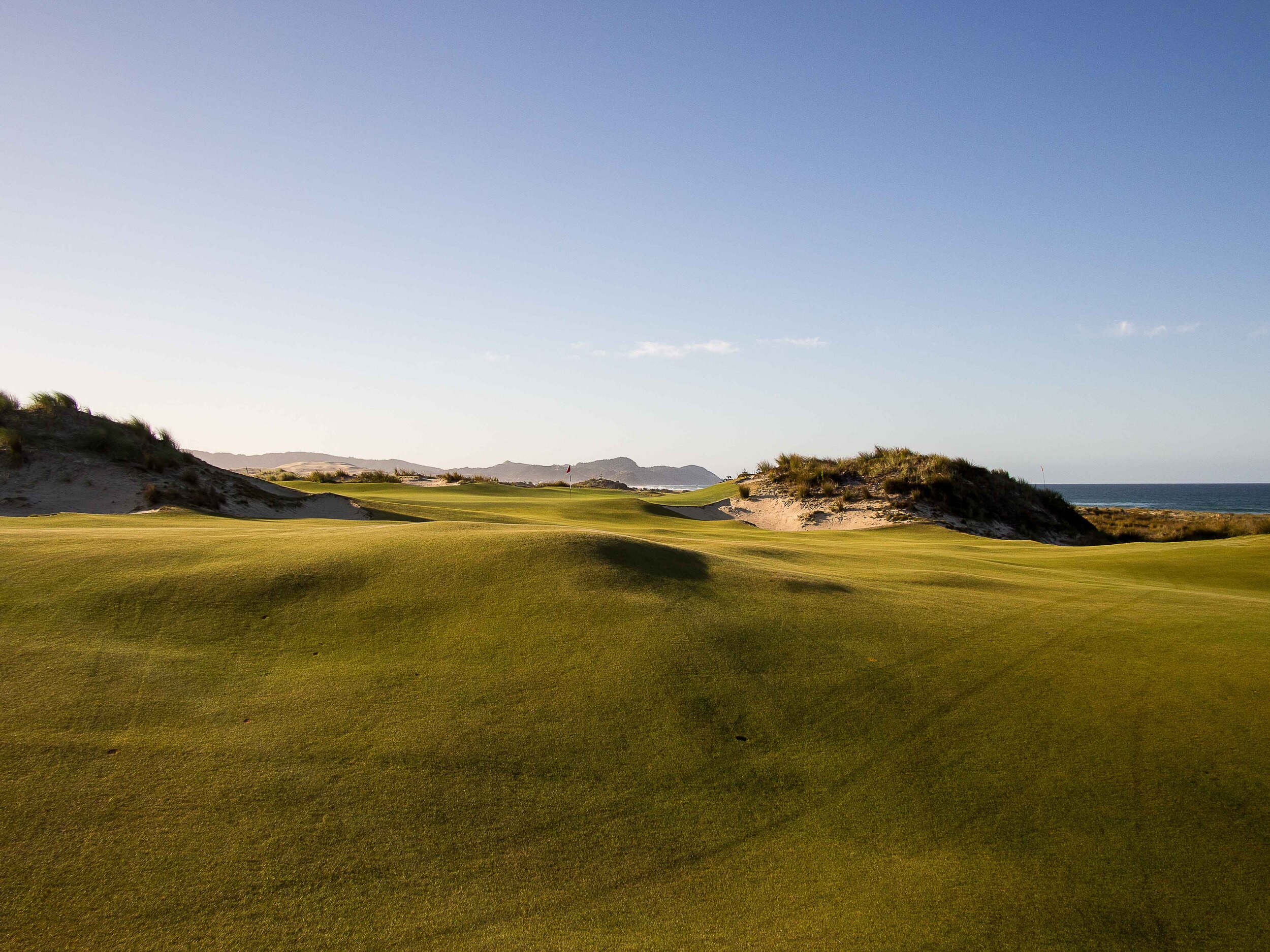
Detailed shaping work brings out shadow.
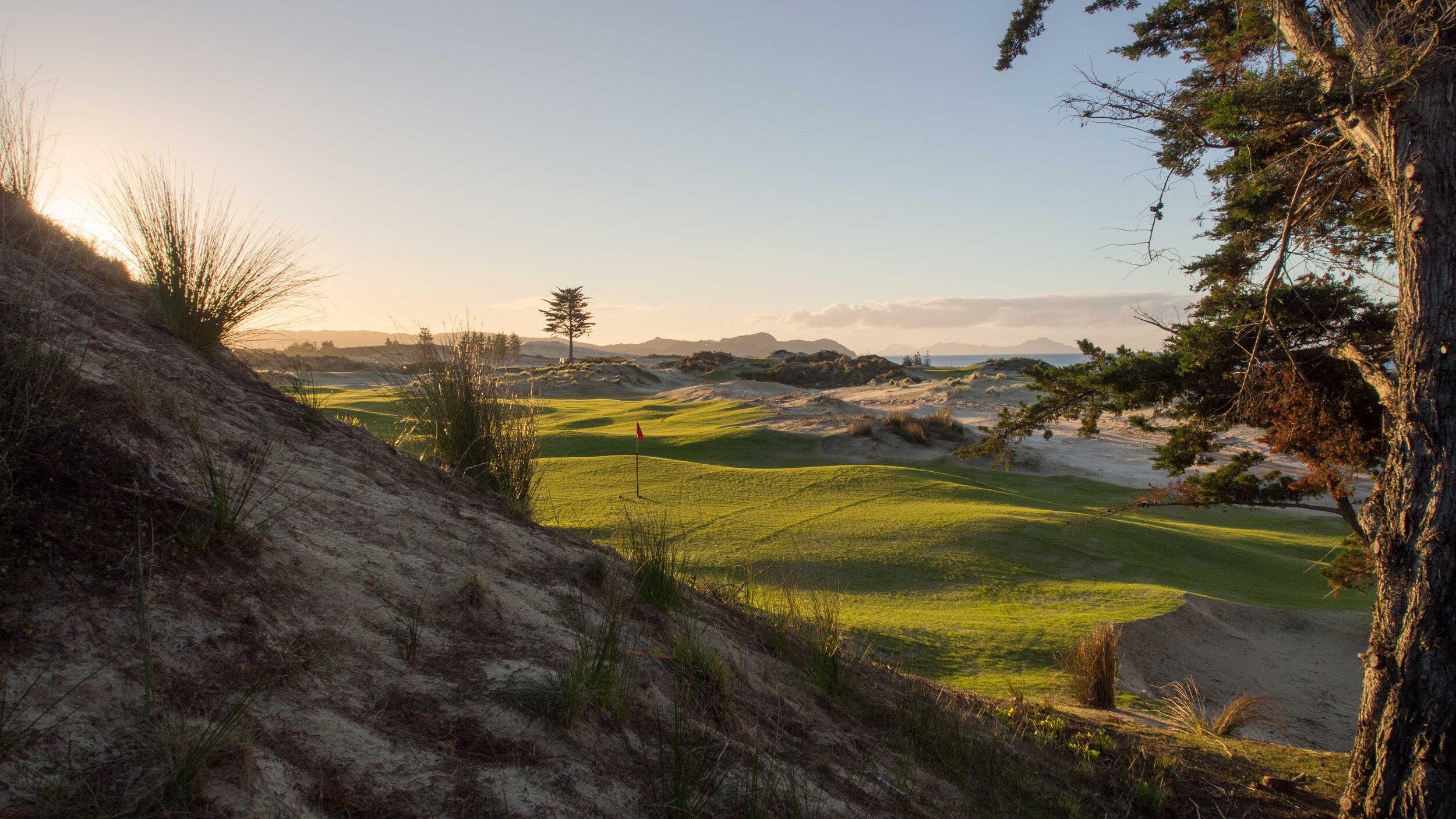
Details abound; green-to-tee transition transfers between differing landscapes.

Elegant bunker lines cut out of the rise, blending naturally away into the restored dunescape.
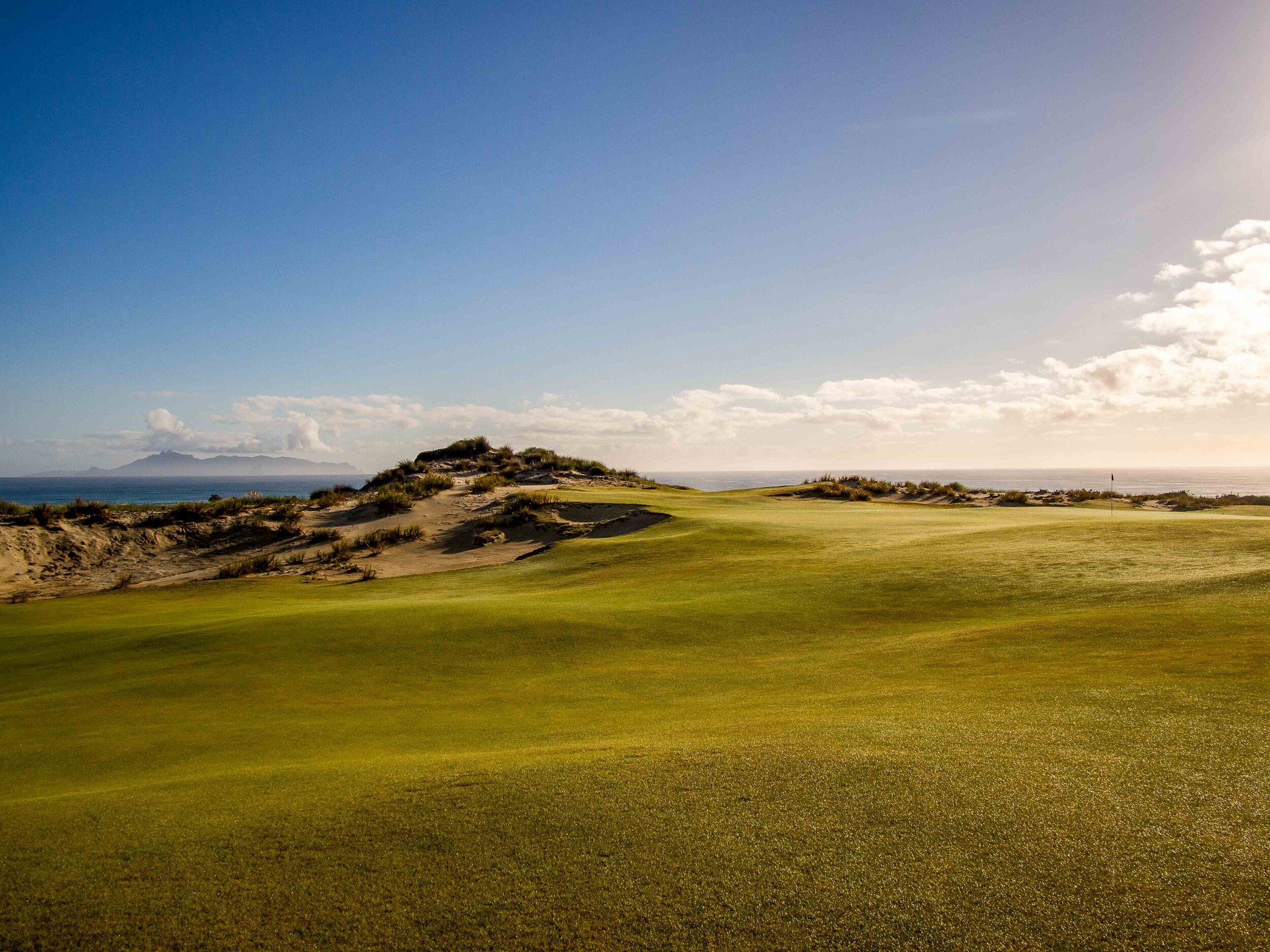
The green is held-up above a sandy bowl.

Lead Associate Brian Slawnik's fierce pot-bunkers, finished.
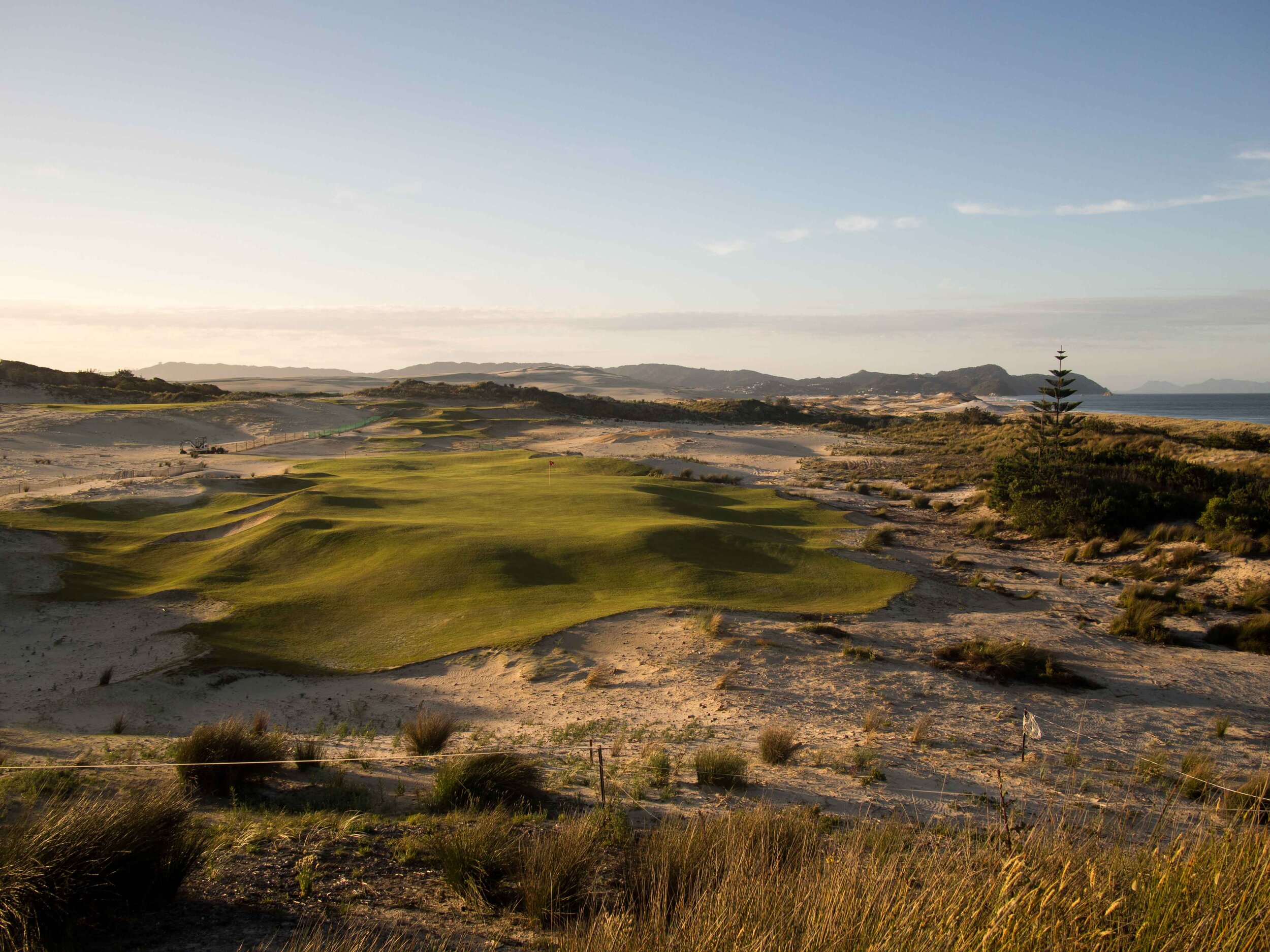
Steep slopes are refined by hand, to give natural ripple.
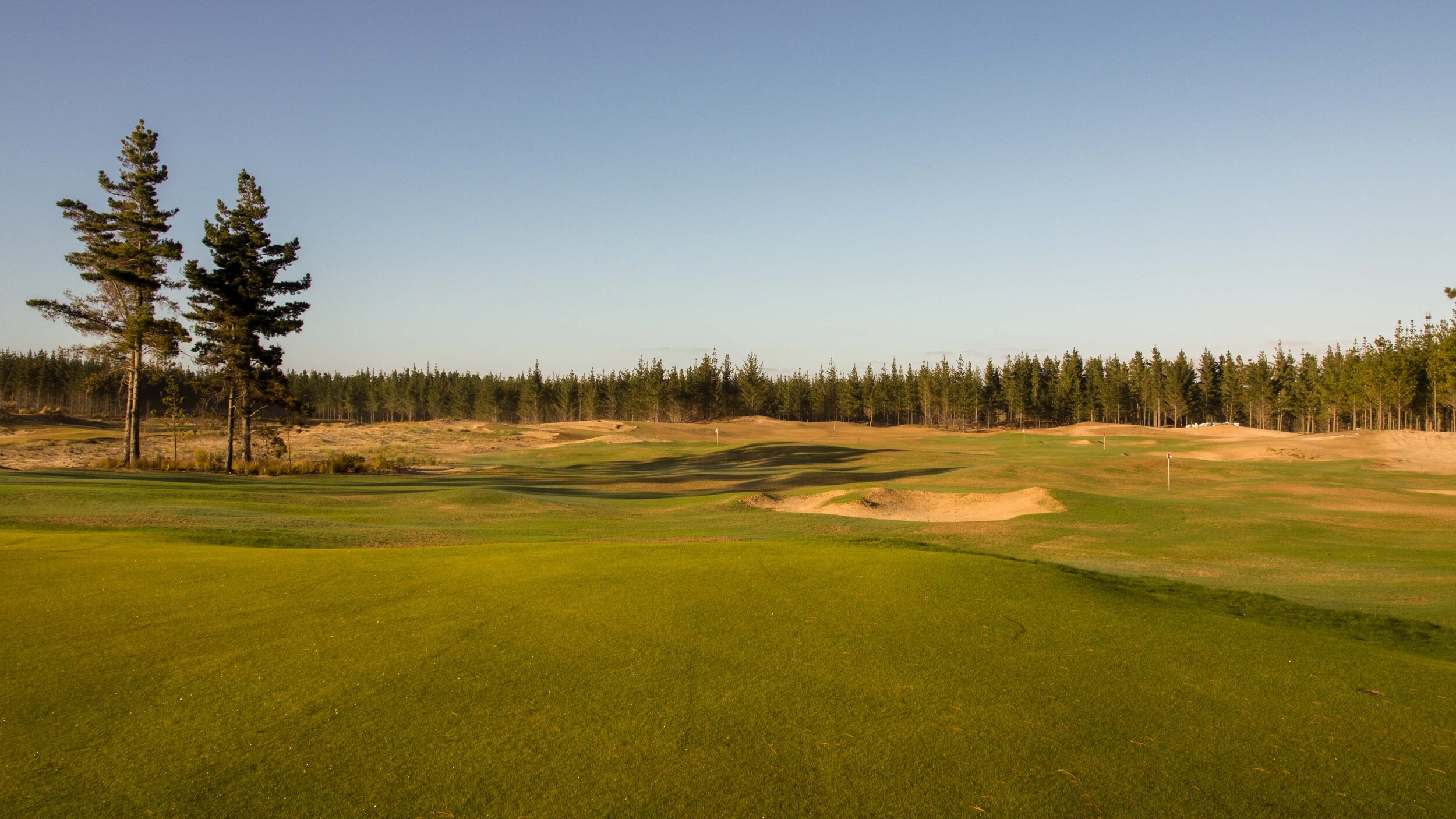
Growing-in: Manipulated out of a flat expanse to create five, fun-filled target greens. First tee to practice green to practice range tee interaction is compact and considered.
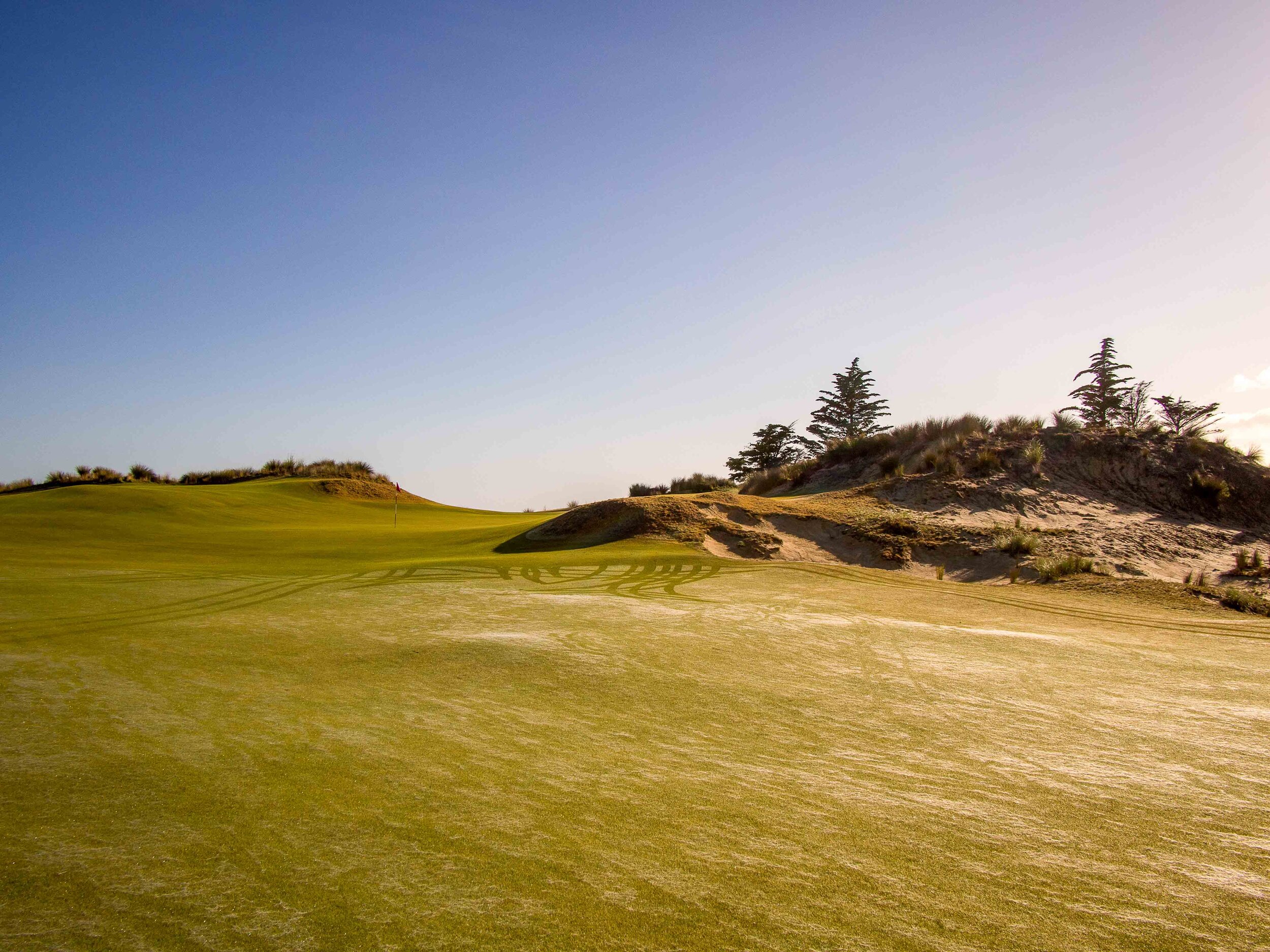
At times playing as par 4.5, a long approach must use the back dune to slide around the corner!
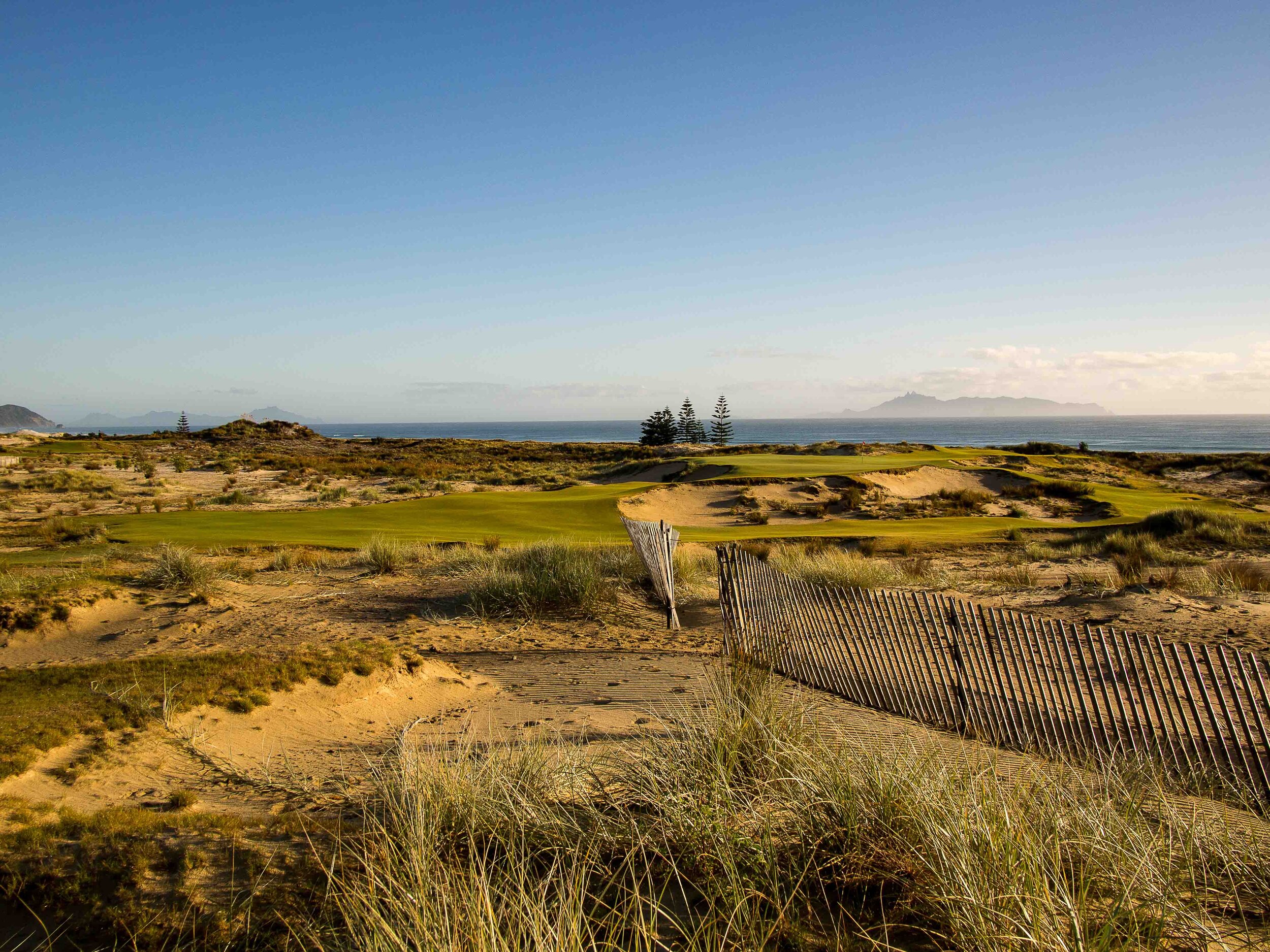
Nature/the weather is allowed to do its thing at this spectacularly composed short-three.
Reclaimed from pine forest into an explorative links - artistic and playing subtleties contrast an enormously scaled, open-sanded dunescape above the Pacific. Tara Iti has been received as the greatest course of the past decade.
[Construction Team: Brian Slawnik, Eric Iverson, Brian Schneider; Kye Goalby; Michael Henderson, Peter Zarlengo.]
Ranked #29 in 'GOLF's 2017-18 ranking of the Top 100 Courses in the World', on debut!
North Berwick (West Links) (East Lothian; Scotland) - 2022 to ... - Consulting / Shaping

Image Credit: Scottish Golf Course Photography.
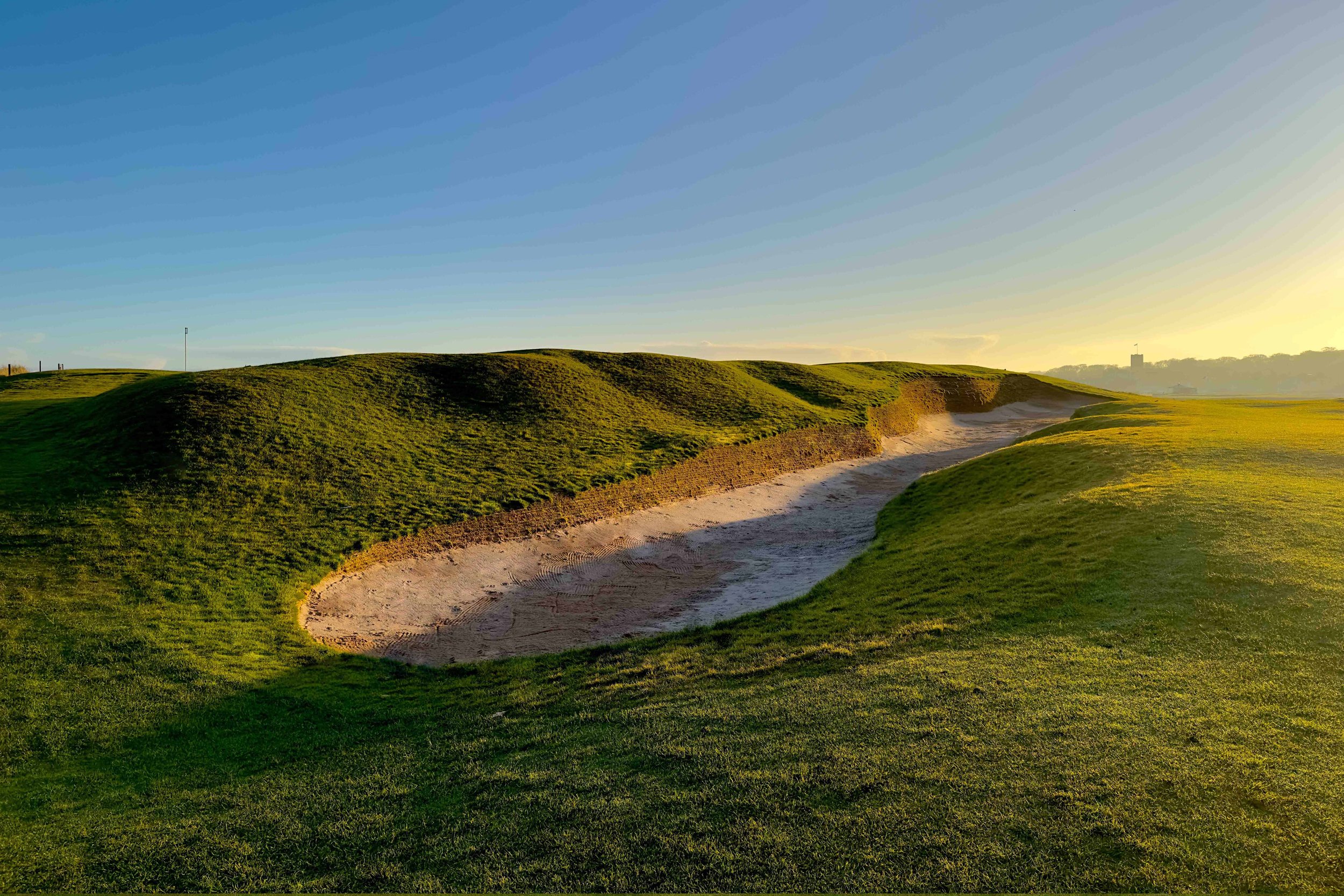
Reno-restoration of a cross-bunker which suffered from poor playability.
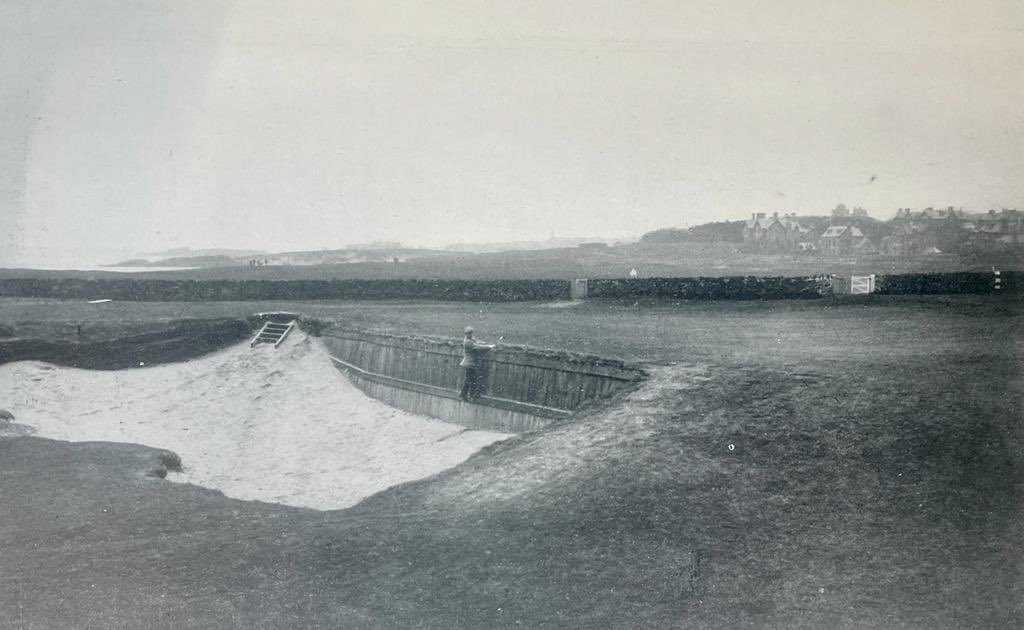
Inspiration for restoration of the famous Redan bunker.
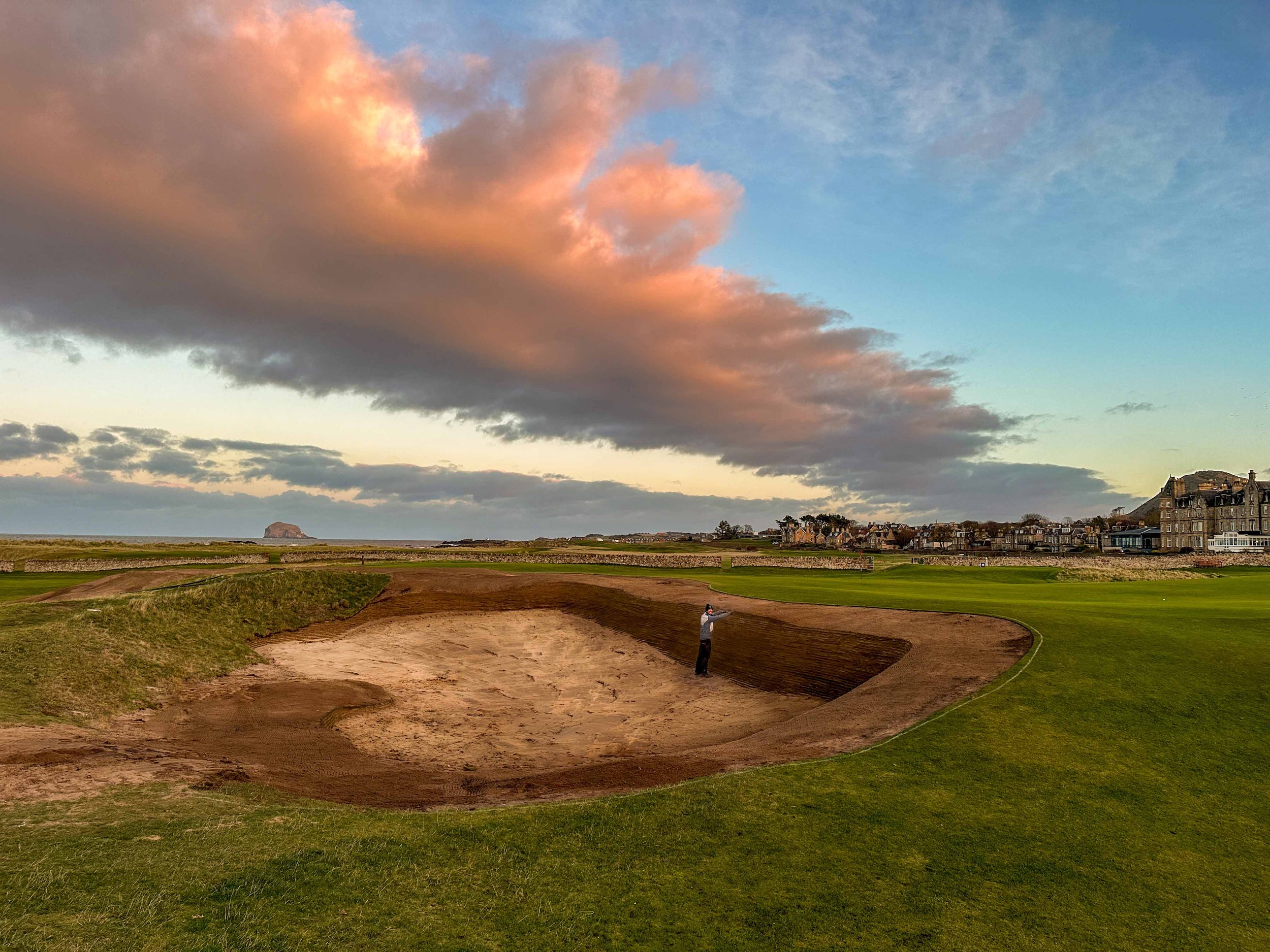
A handful of historical images provided reference for restoring the Redan bunker.


Image Credit: Scottish Golf Course Photography. Once a bridal way to the beach, the 17th’s fronting bunker has recaptured its original scale, with an improvement in playability.
A privilege to be guiding one of my favourite courses!
Ranked #30 in GOLF's 2023-24 ranking of the Top 100 Courses in the World''.
Te Arai Links - North Course (Te Arai; New Zealand) - Tom Doak / Renaissance Golf Design - 2022 - Shaping
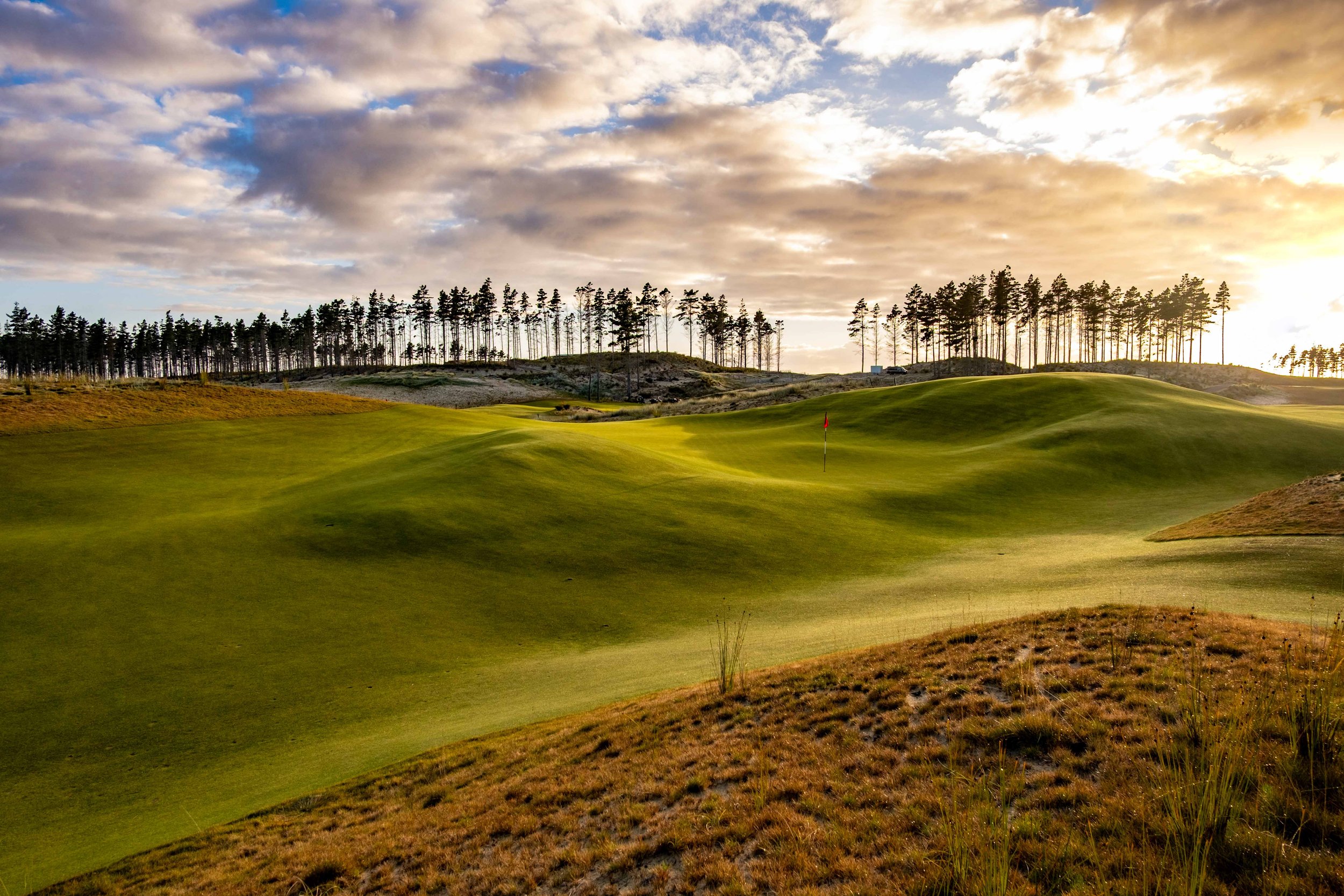
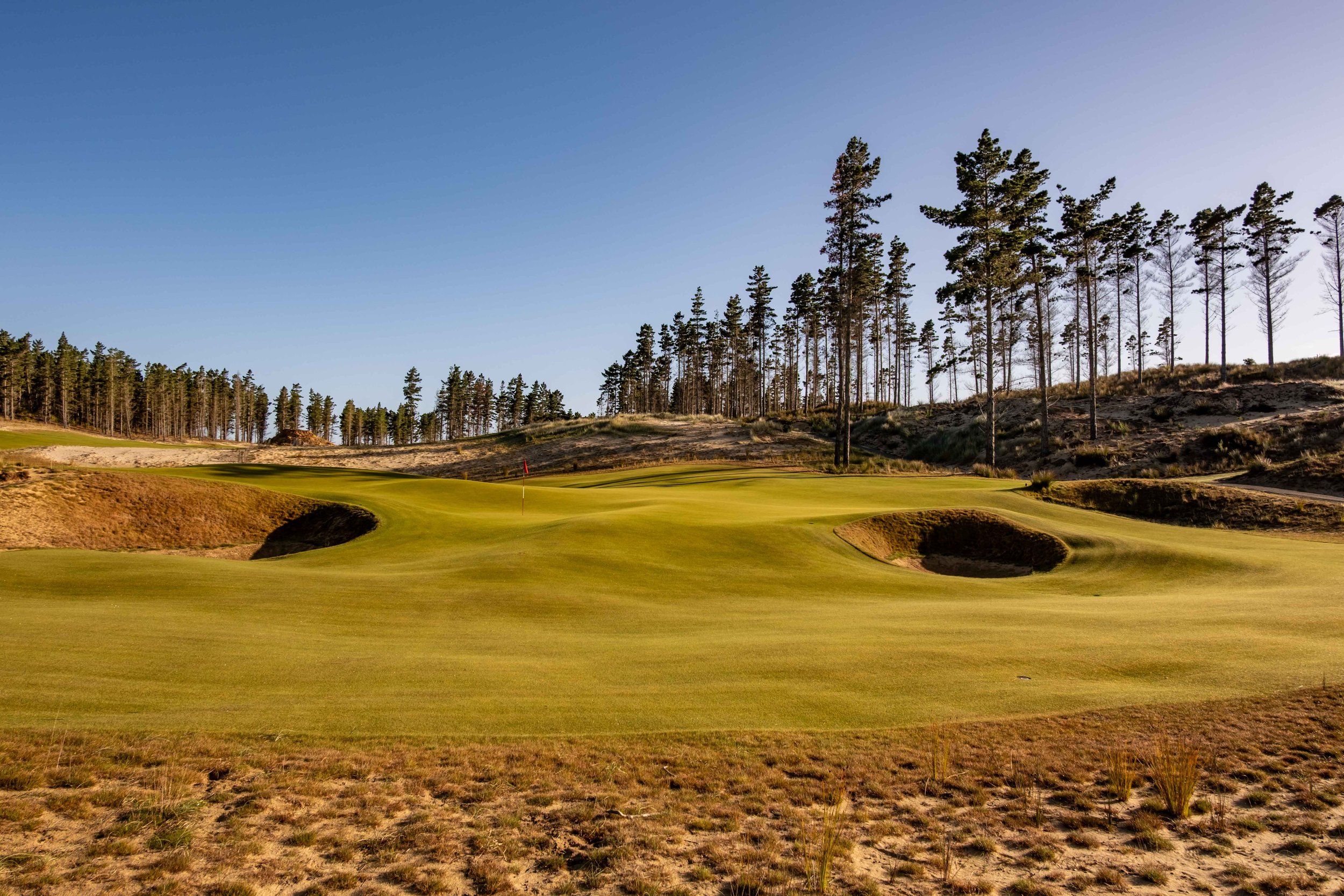
A wild par-three green, shaped by course architect Tom Doak.

A mid-four over rumpled ground, the green sits at grade climbing from half-pipe to platform.

Looking back on the green towards a tee by the Pacific Ocean.

A brawny par-five culminates in a high green, perched above a sandy chasm!
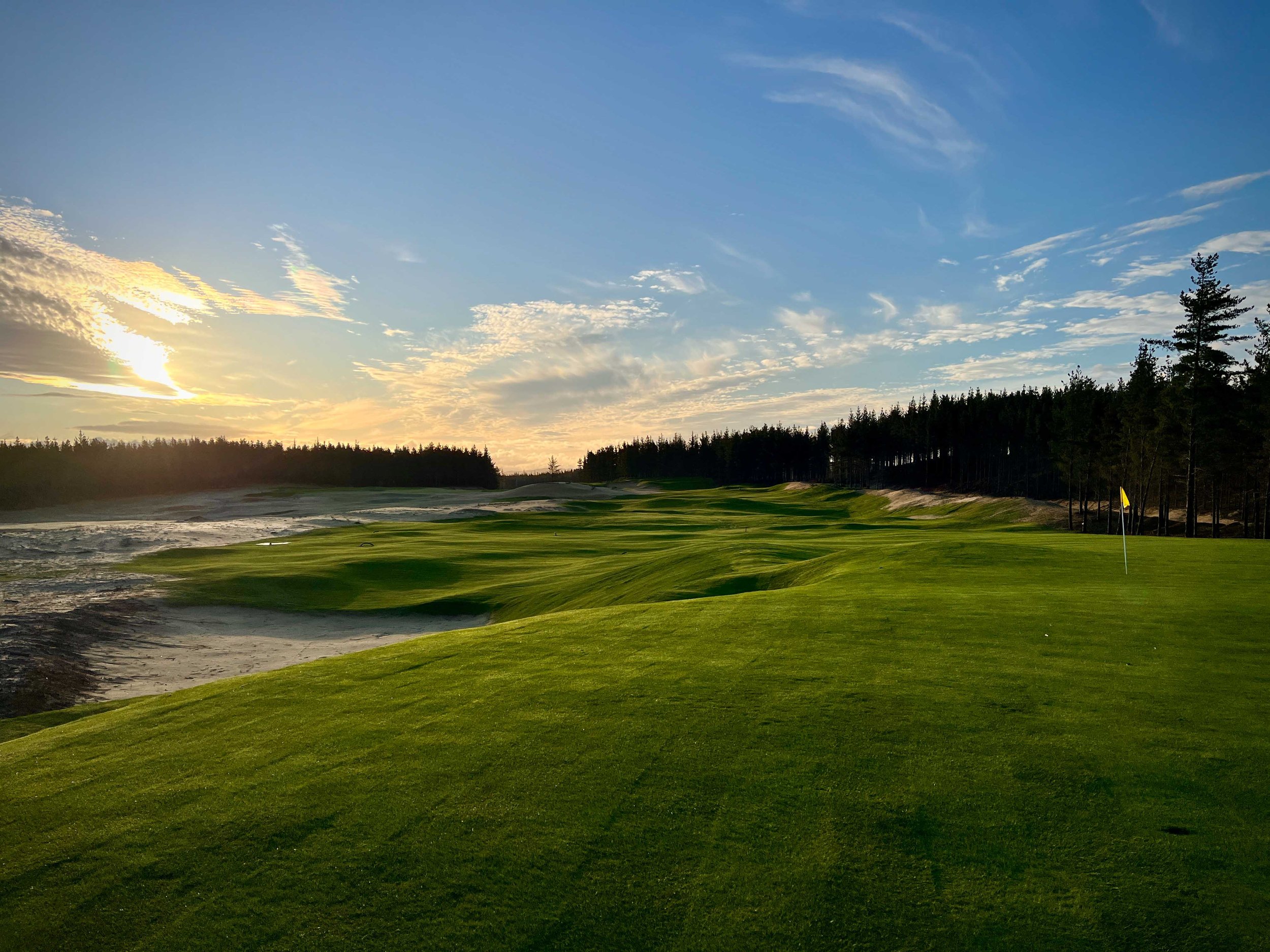
Looking back from the high eleventh green perch.

This downhill par-3 plays into a pocket in the duneside. The front bunker obscures the steep drop to the front of the green.

This short-four has an exacting green which wraps down and around to a rear section tucked behind a knoll.

A grand par-four which climbs to a green that transitions through three levels.
A journey from a spectacular coastline to an inland sandscape full of character and hazard!
[Construction Team: Brian Slawnik; Angela Moser.]
Denham (Buckinghamshire; England) - 2021 to ... - Masterplan / Shaping
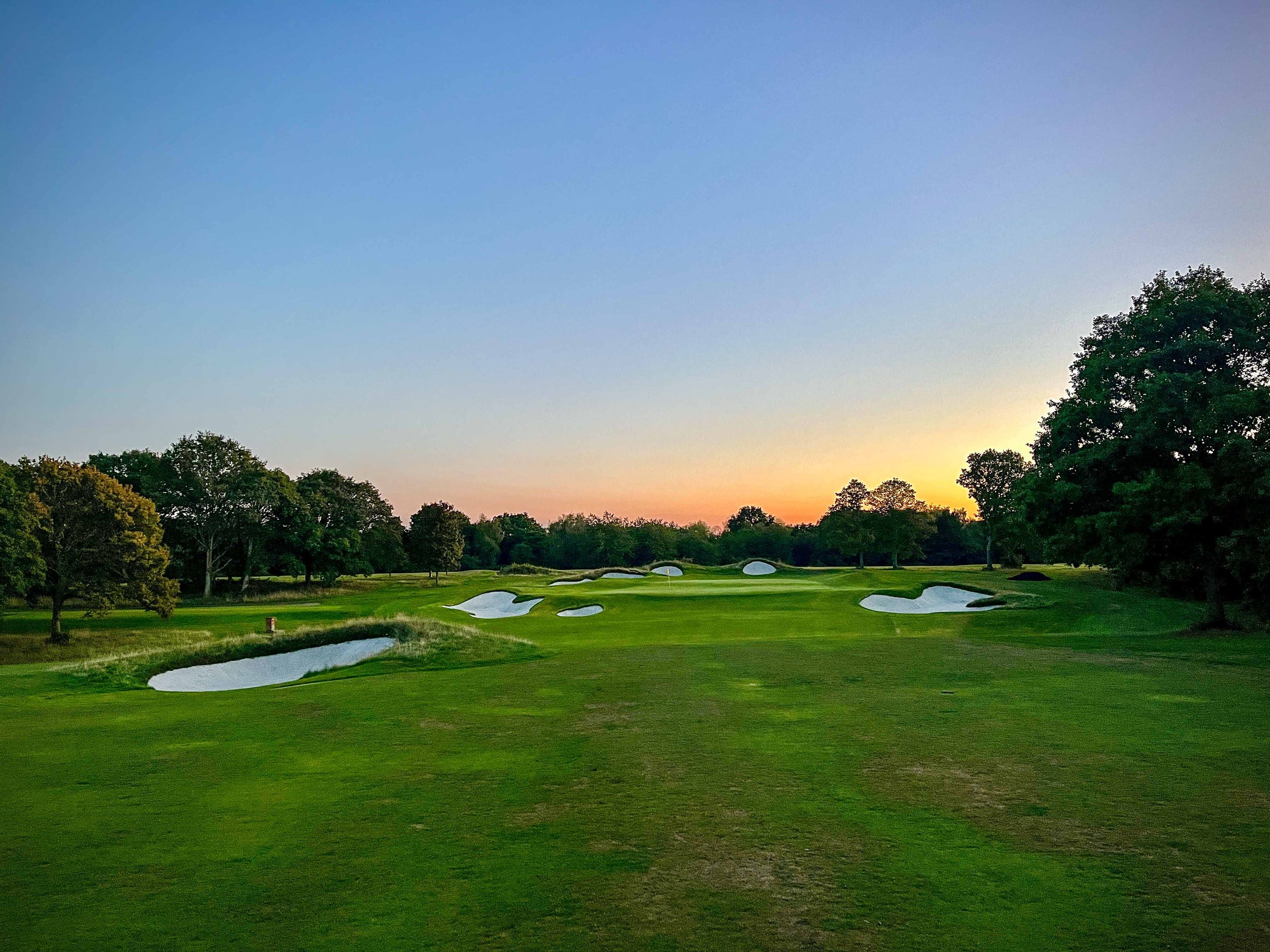
The visually dramatic 15th green complex, restored with Braid’s original in mind!
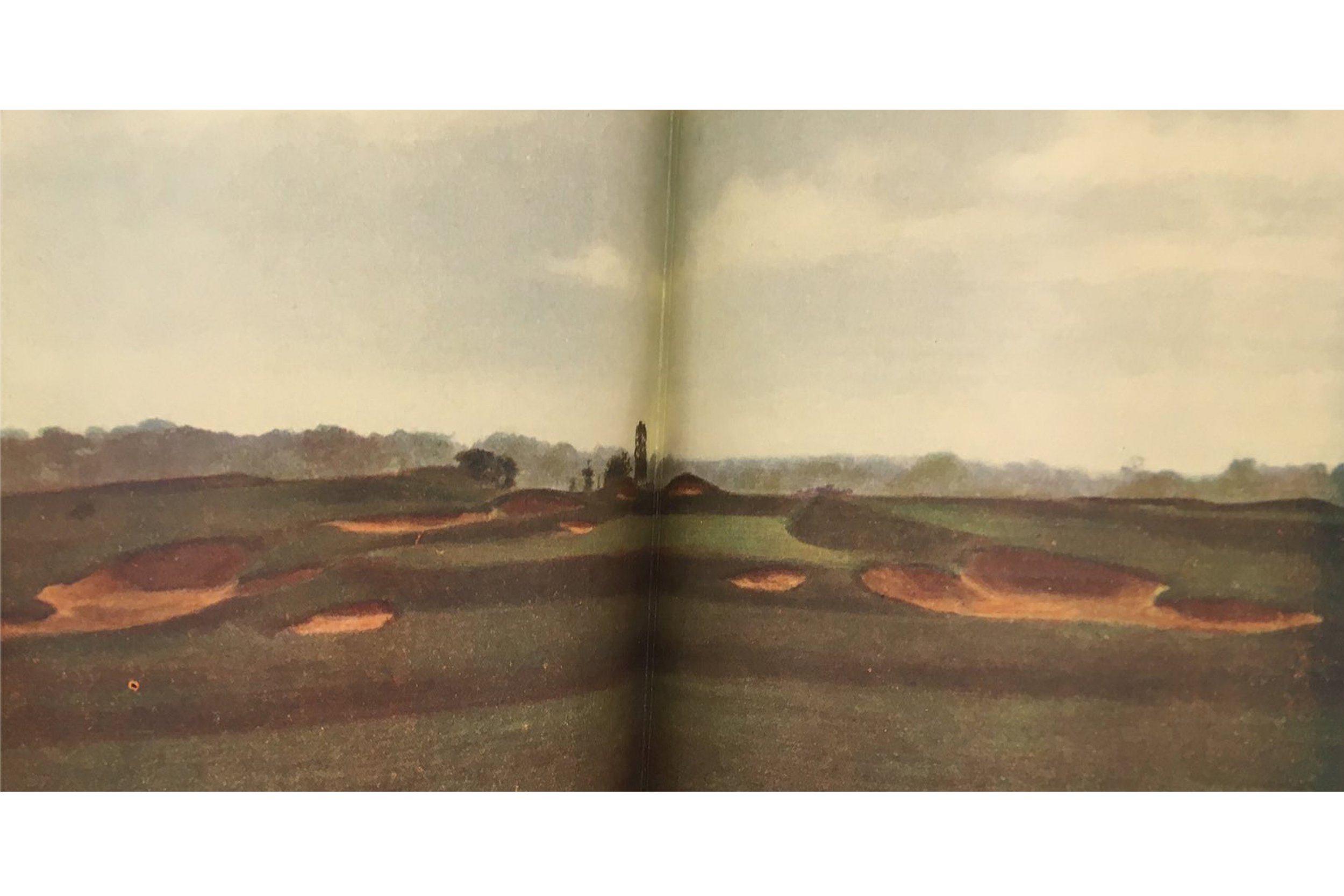
The artists impression (and a historical photo from shortly after construction) provided a reference for restoration.

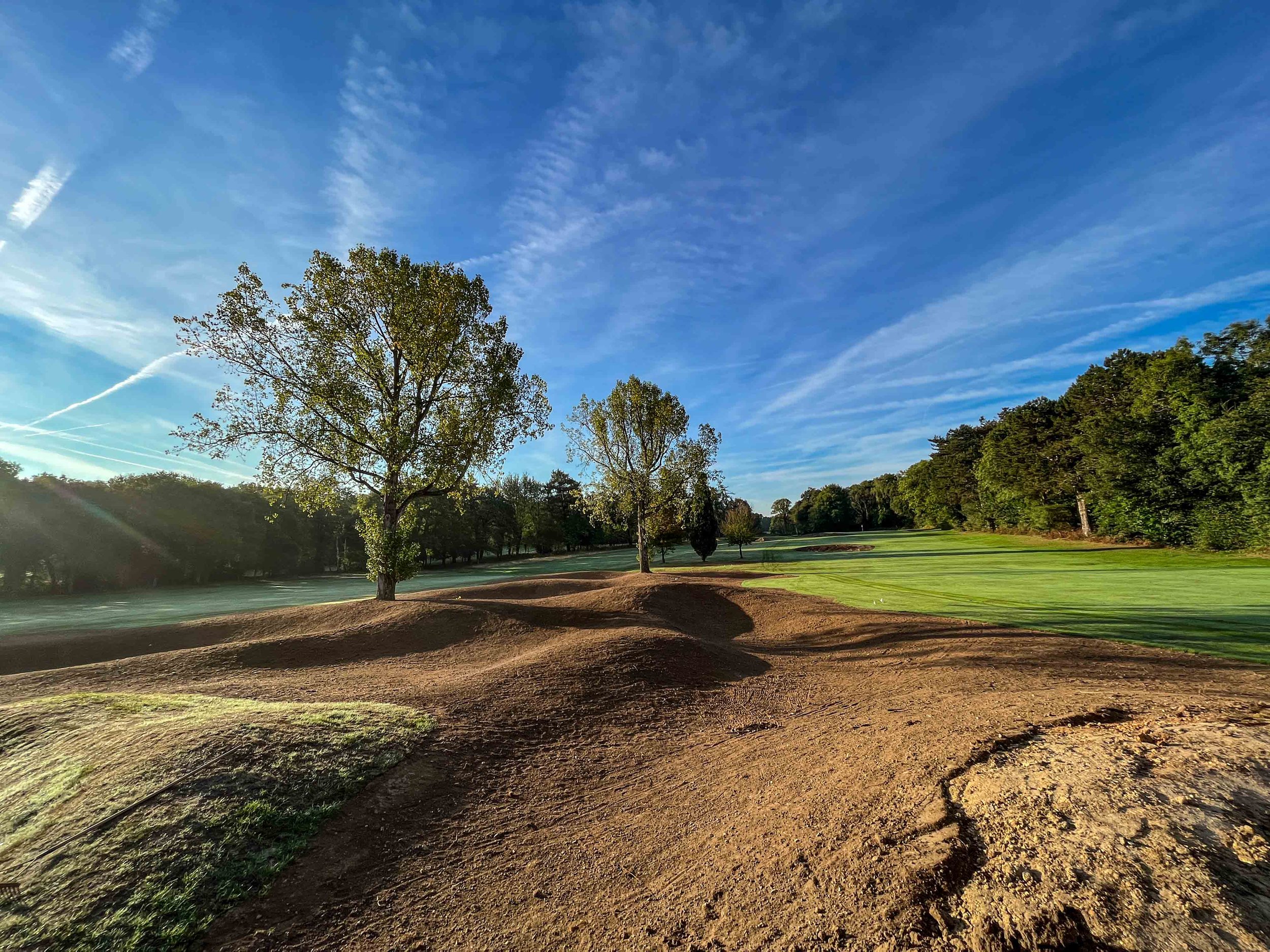
Grassy humps and hollows, tying into existing bunkering, aim to solve a blind safety issue between playing corridors.

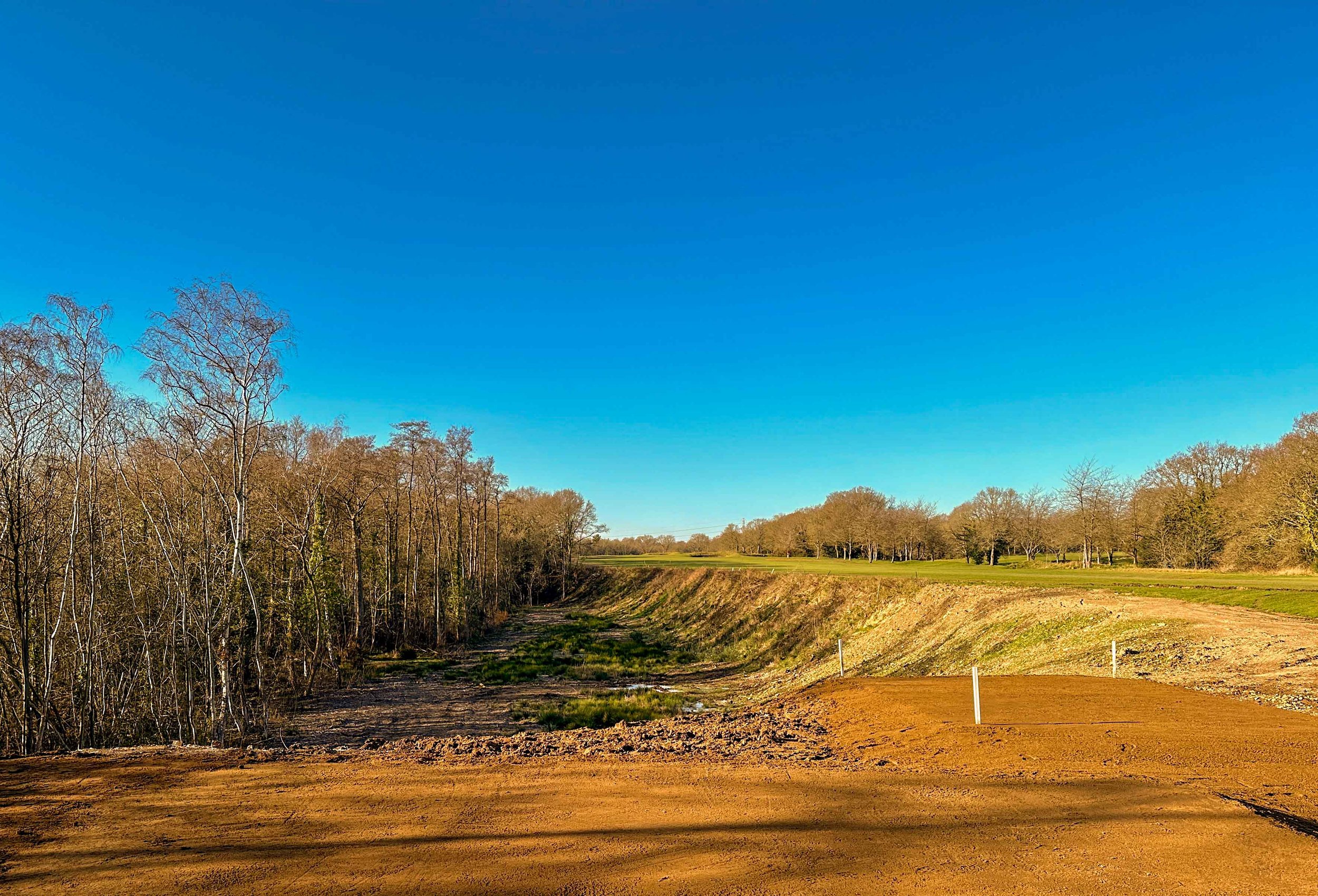
An under-the-radar Harry Colt course just waiting to be polished! With stone migration through the bunker faces and floors a perpetual issue (due to gravelly soils), the club have opted to line their bunkers with ‘Blinder’ liner. Green expansions and tree management are also high on the agenda.
[Agronomy Consultant / Shaping: Chris Haspell; Guest Shaping: Reece Haspell. Contractor: Profusion Environmental Limited.]
The National - Gunamatta Course (Cape Schanck; Australia) - Tom Doak / Renaissance Golf Design - 2018 - Shaping
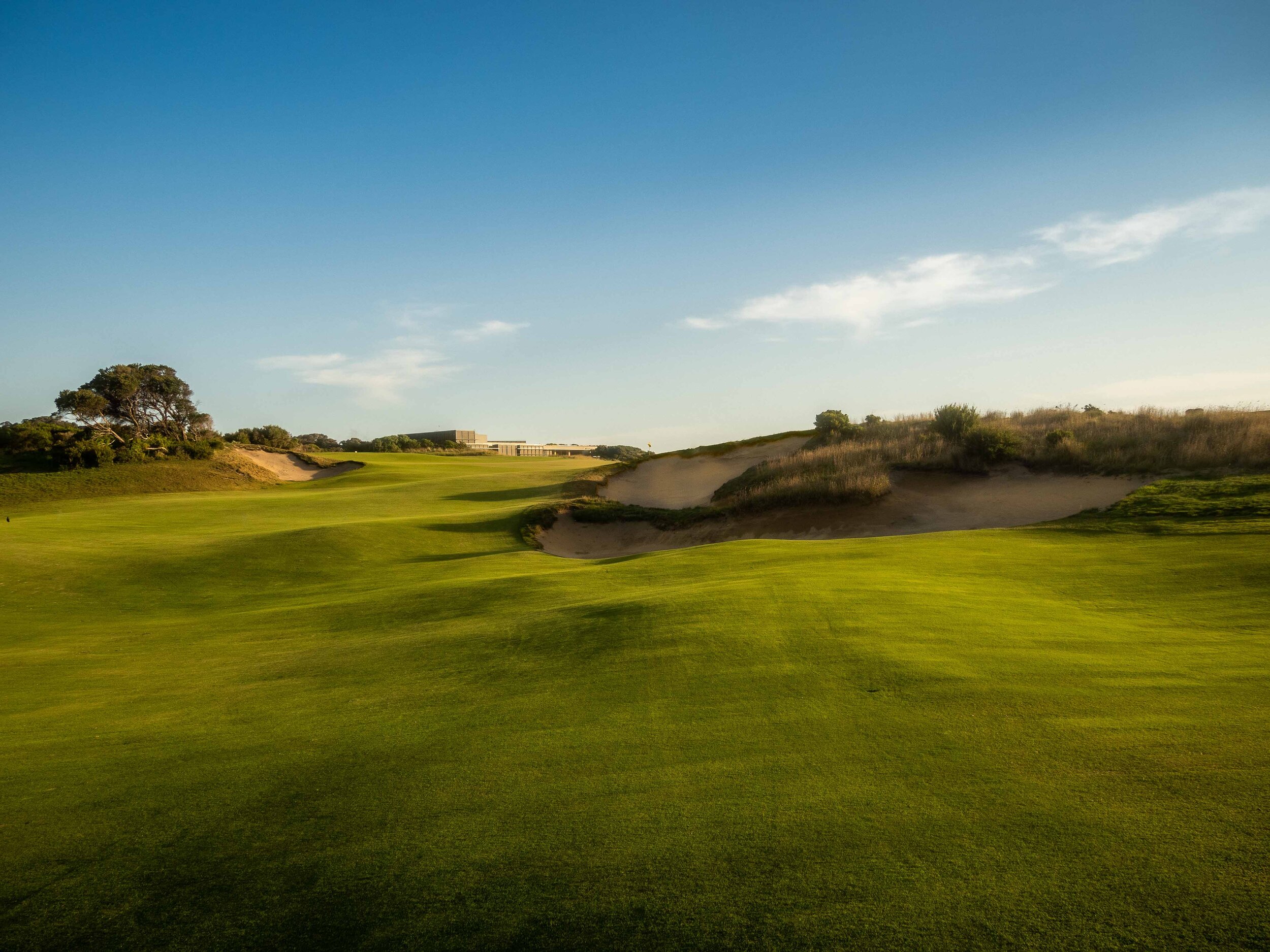
A long three is transformed into a short-four; play to a shelf on the fairways right flank to open up the green’s left shelf!
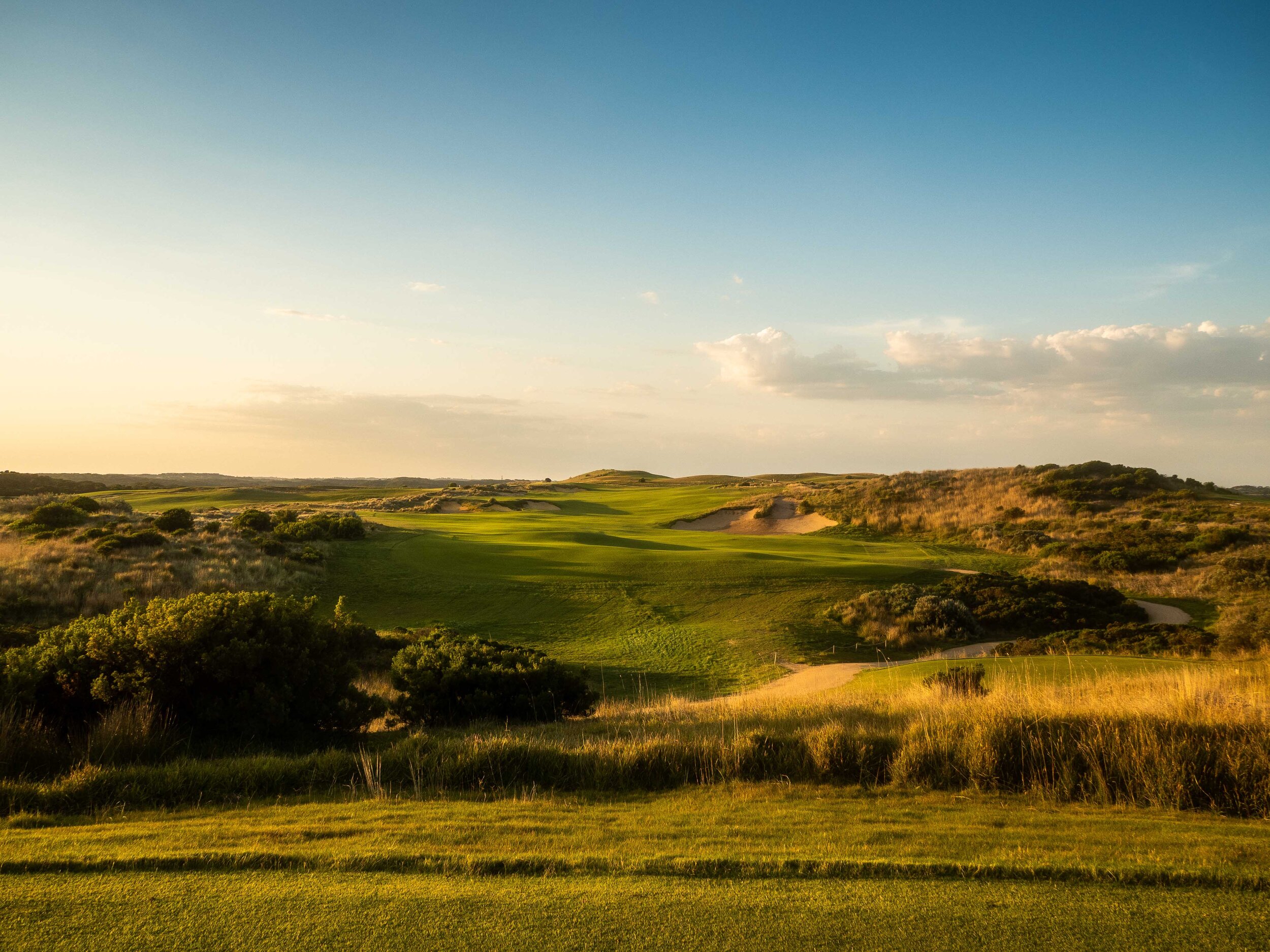
The drive is squeezed by a huge (!) bunker on the right, and a trio eating in from a naturalised sandy area on the left.

An elegant pair angle across the front of the raised opening green.

A sprawling bunker, sat into the face of a rise, guards the ideal inside-line of this long, downhill four.

A high, three-tiered punchbowl green sits alongside four climbing/stacked bunkers.

The punchbowl green is within reach at this short-four, but only if a drive squeezes past a cute pair of pits sat into the foreground.

With it’s right flare blending into a pair of greenside pits, this drive bunker shields the ideal line to a saddled green.
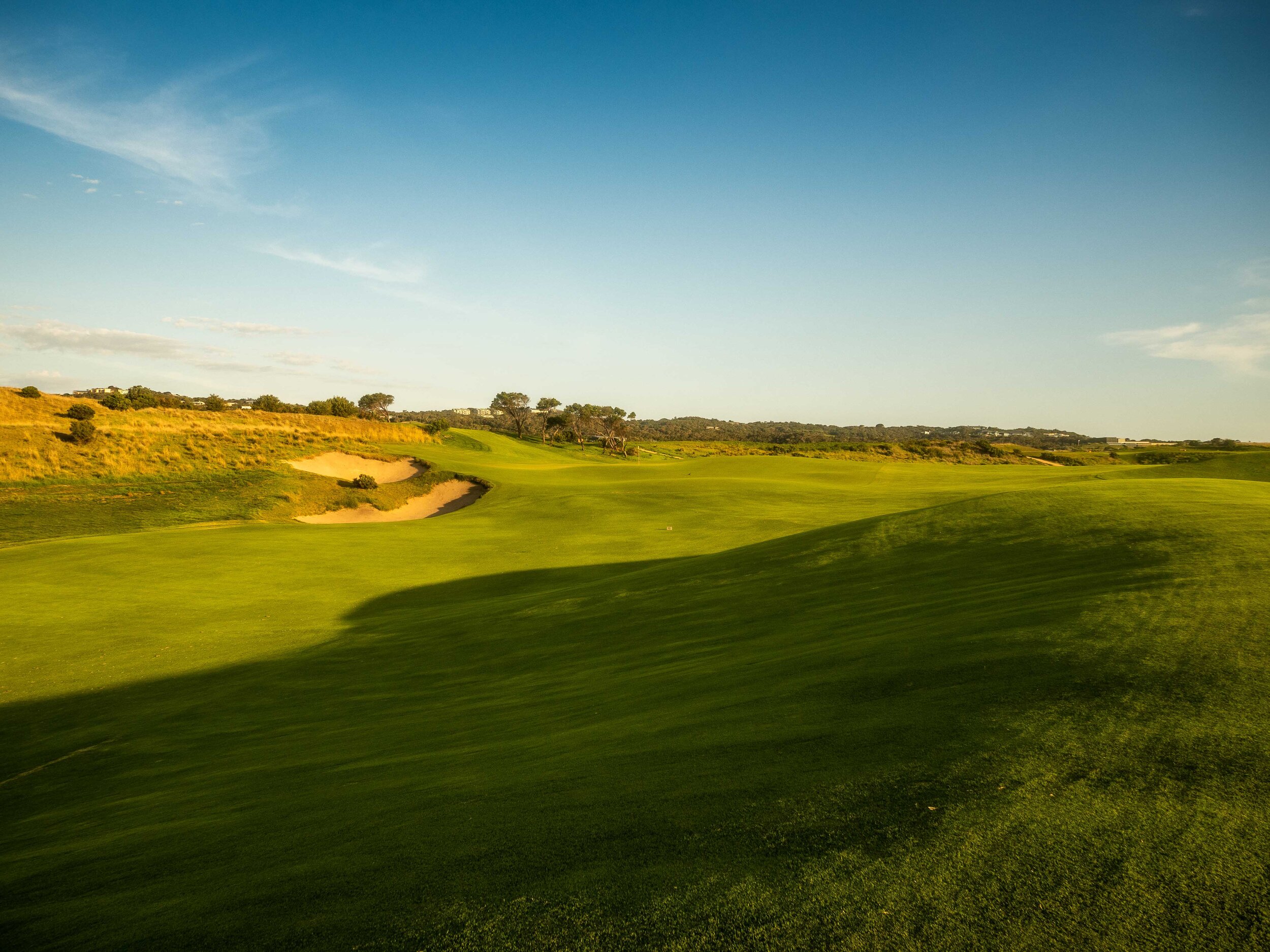
Sat into the hill face, this stacked pair of bunkers will swallow a short approach from the fairway’s low left.

Against the prevailing wind, this long three might play as a four. A drive will have to chase past this bunker if it is to feed back towards the precariously perched green site.
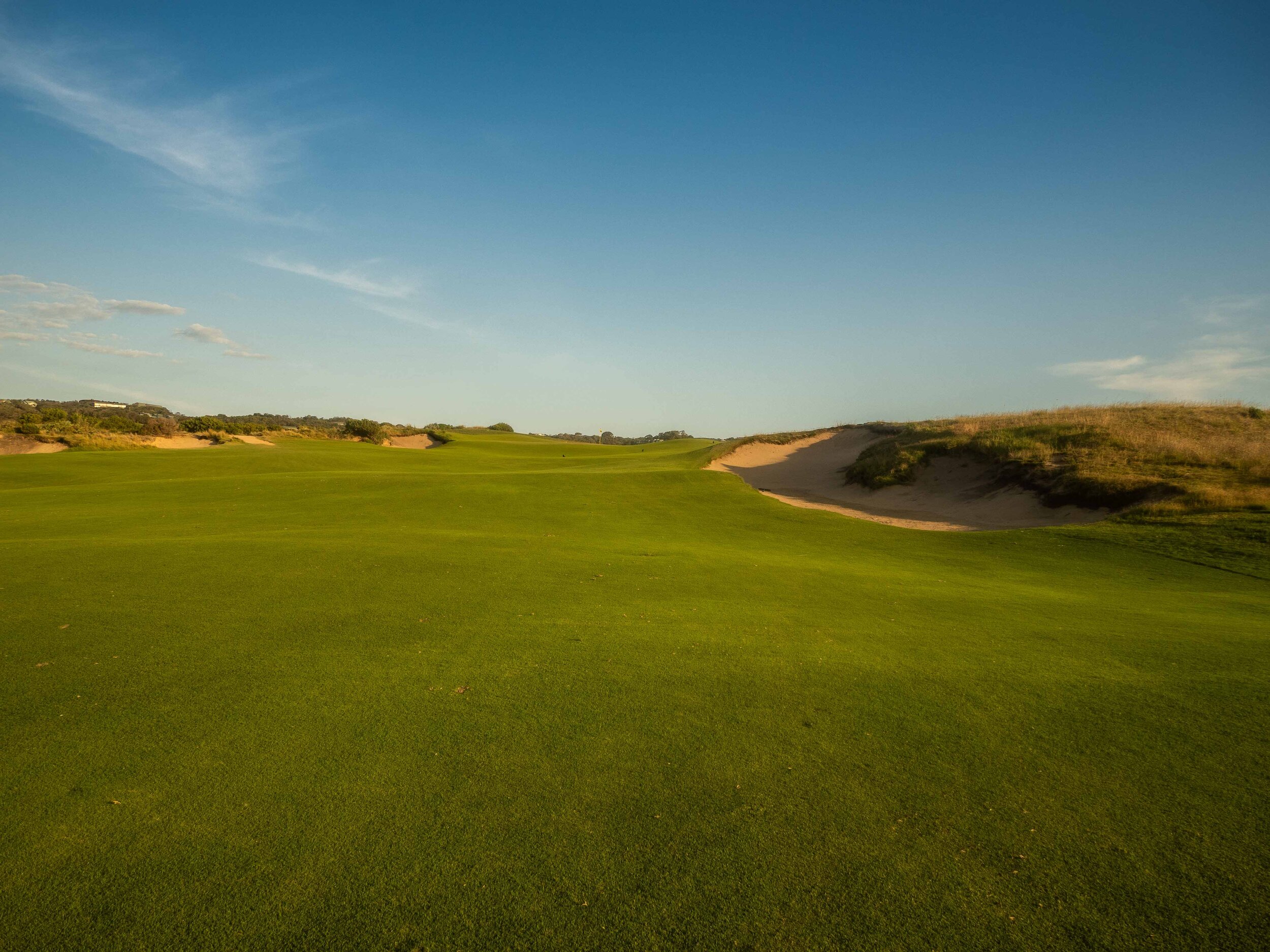
Two funky capes splay into the dune on differing angles; the preferred angle of approach will typically be from the fairway’s left.
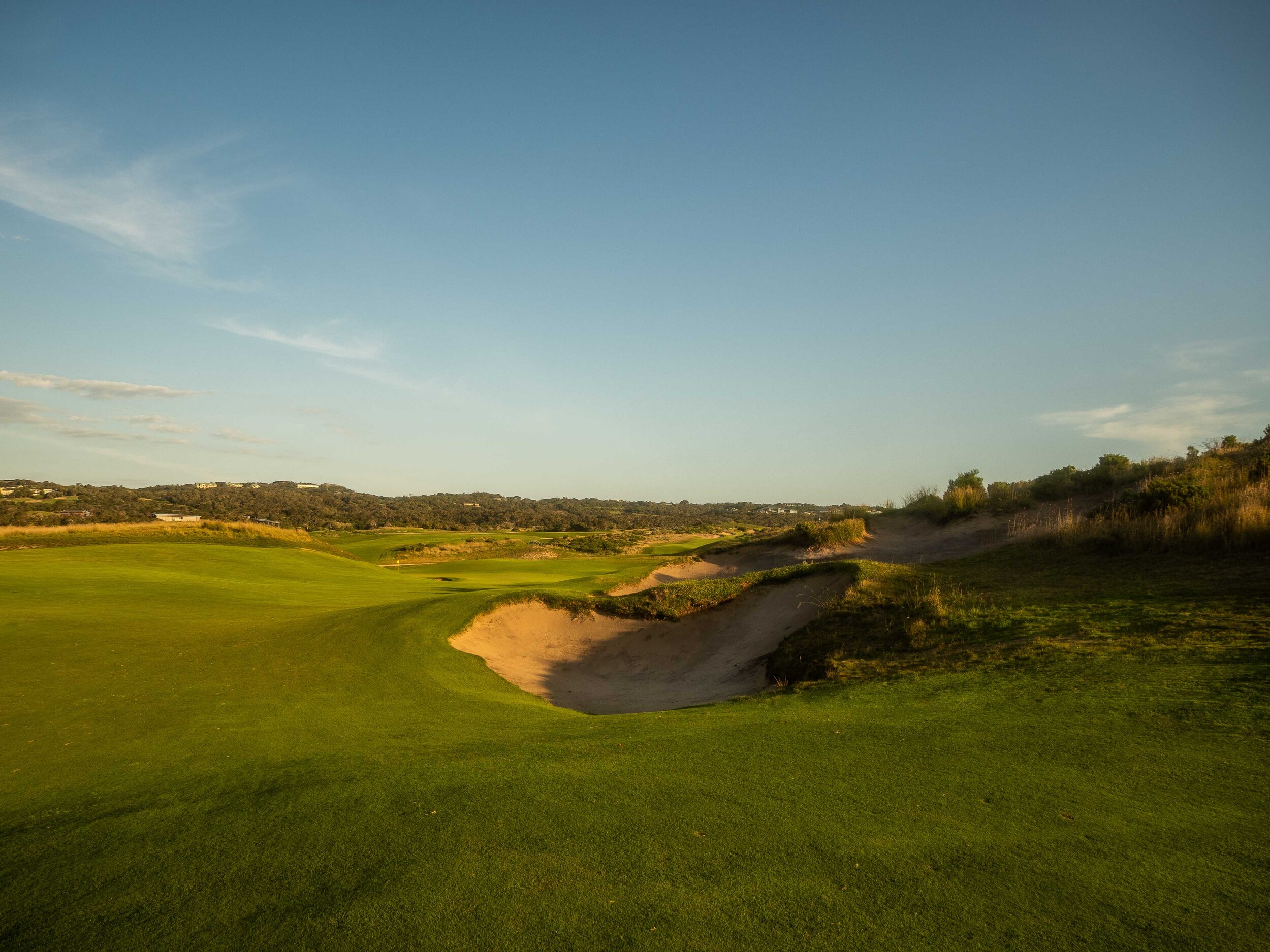
From the tee, these two bunkers - sat into a dune face - blend with a right greenside bunker. Driving alongside, or to a shelf just short, of this pair will yield the ideal angle to a hole cut on the greens left.
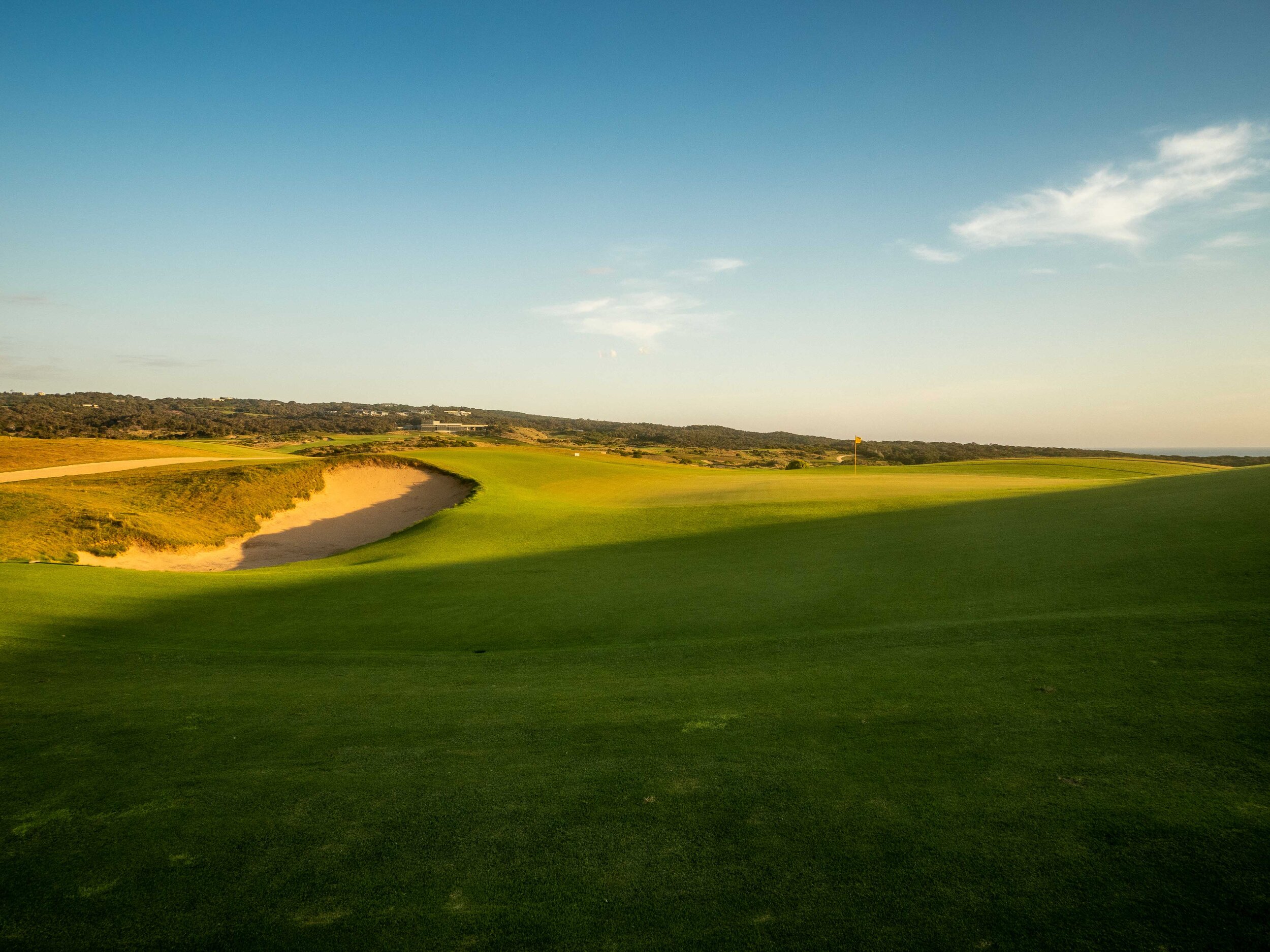
The green of the short-four seventh hides behind a significant dune, while this lone bunker guards its open front-left corner.

A central pot splits two opposing routes to this ocean facing three.

With a hint of the third green at Royal Melbourne (West), the drivable seventeenth is particularly tricky in the prevailing cross winds.
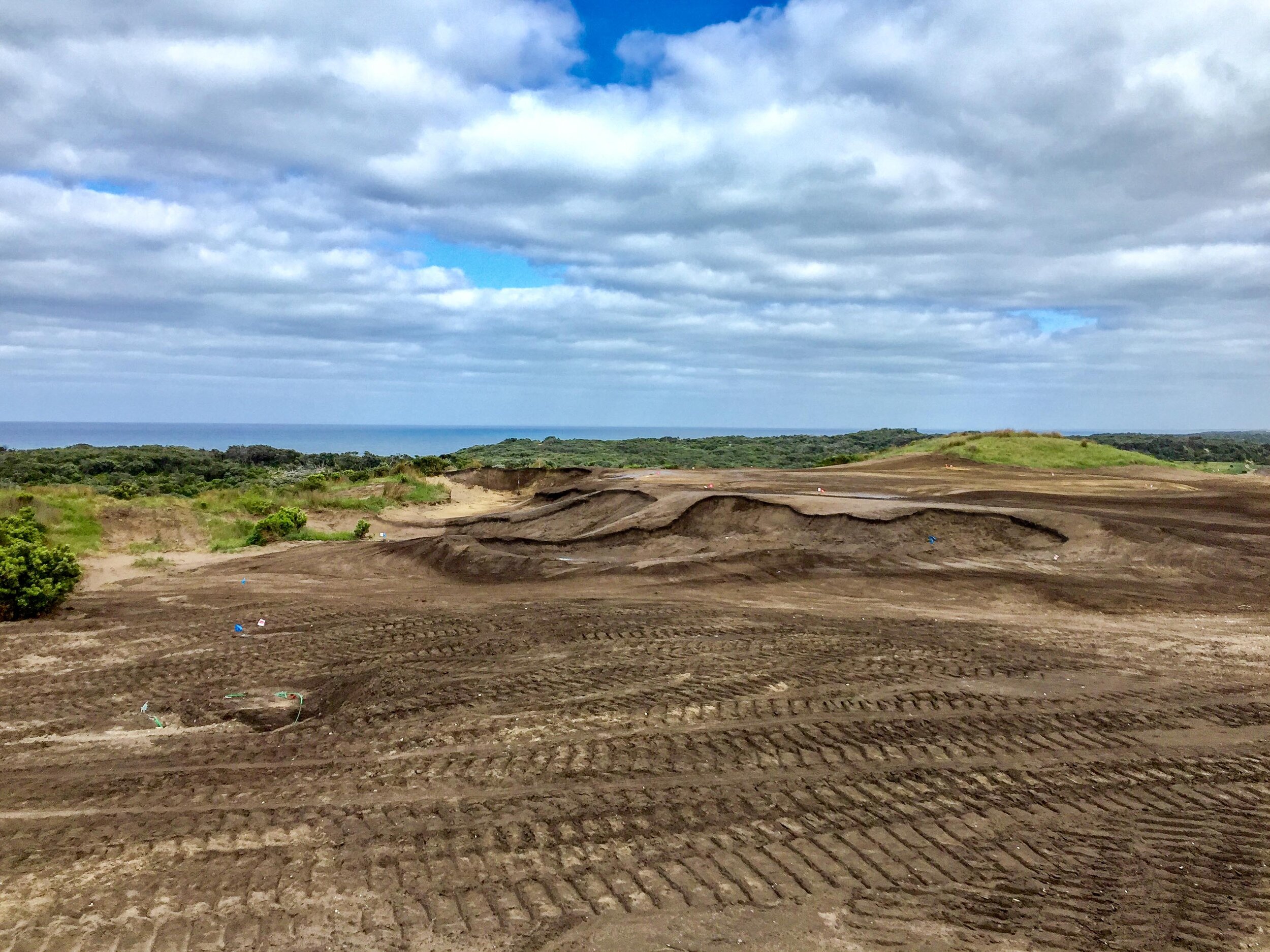
A trio of bunkers defend (and hold-up) the left side of this beautifully back-dropped mid-three!

‘In the dirt’, to 15 months later.
A significant re-design of The Ocean Course: encompassing alterations to the routing over medium-to-large scaled sand hills, 18 new green complexes and alterations to the design, style and number of existing bunkers.
[Construction Team: Brian Schneider; Michael Henderson; Brian Slawnik; Blake Conant.]
Ranked the 10th best course in Australia by Golf Australia Magazine 2020.
Seacroft (Lincolnshire; England) - 2018 to ... - Masterplan / Shaping
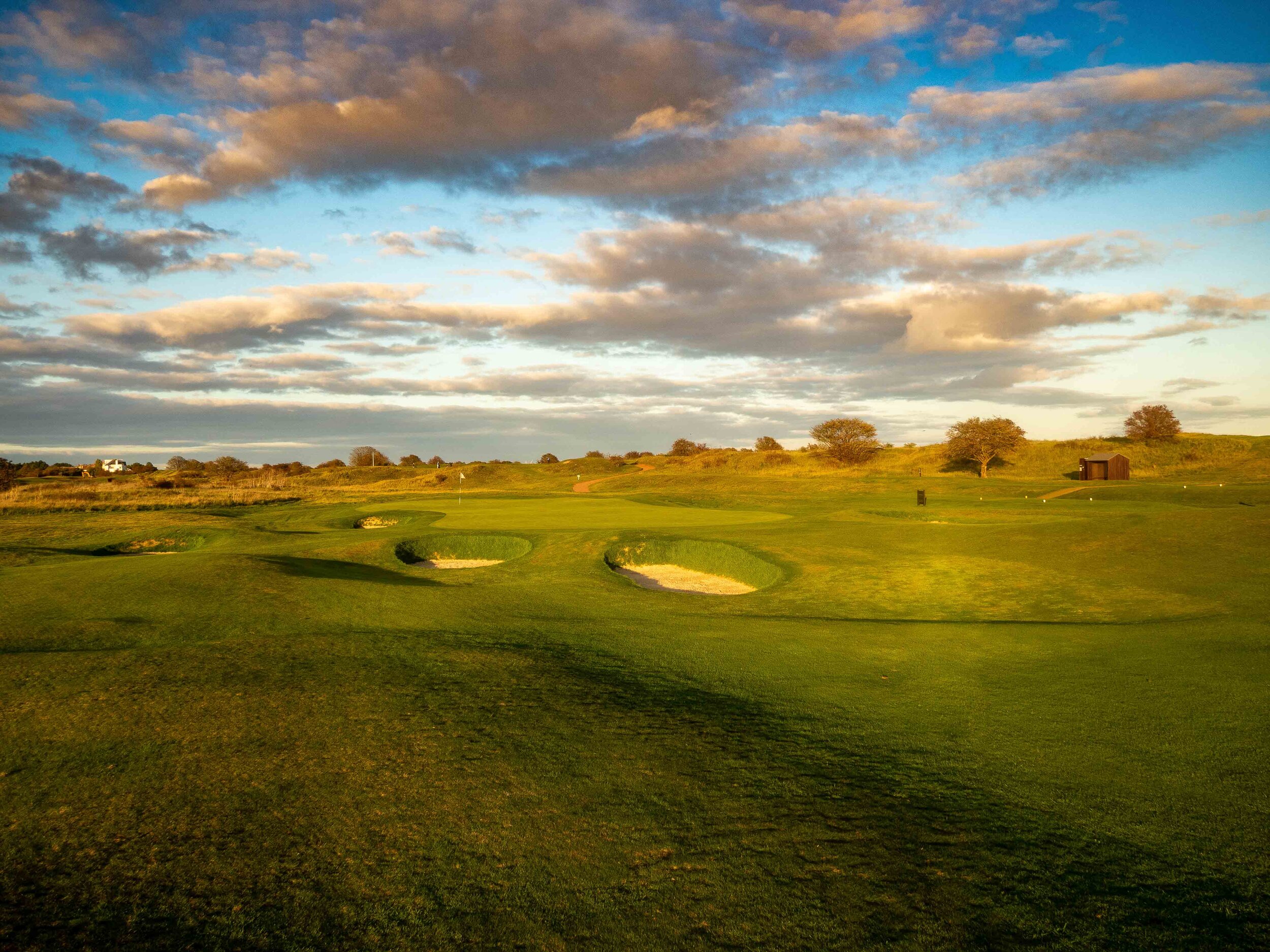
The fairway of this drive-and-pitch four is open to the left, but it will leave a treacherous approach over this trio of cross-pots!

A funky bowl in the green was reinstated to its original depth, and broadened for increased playability. Approach angle will really matter on this one!
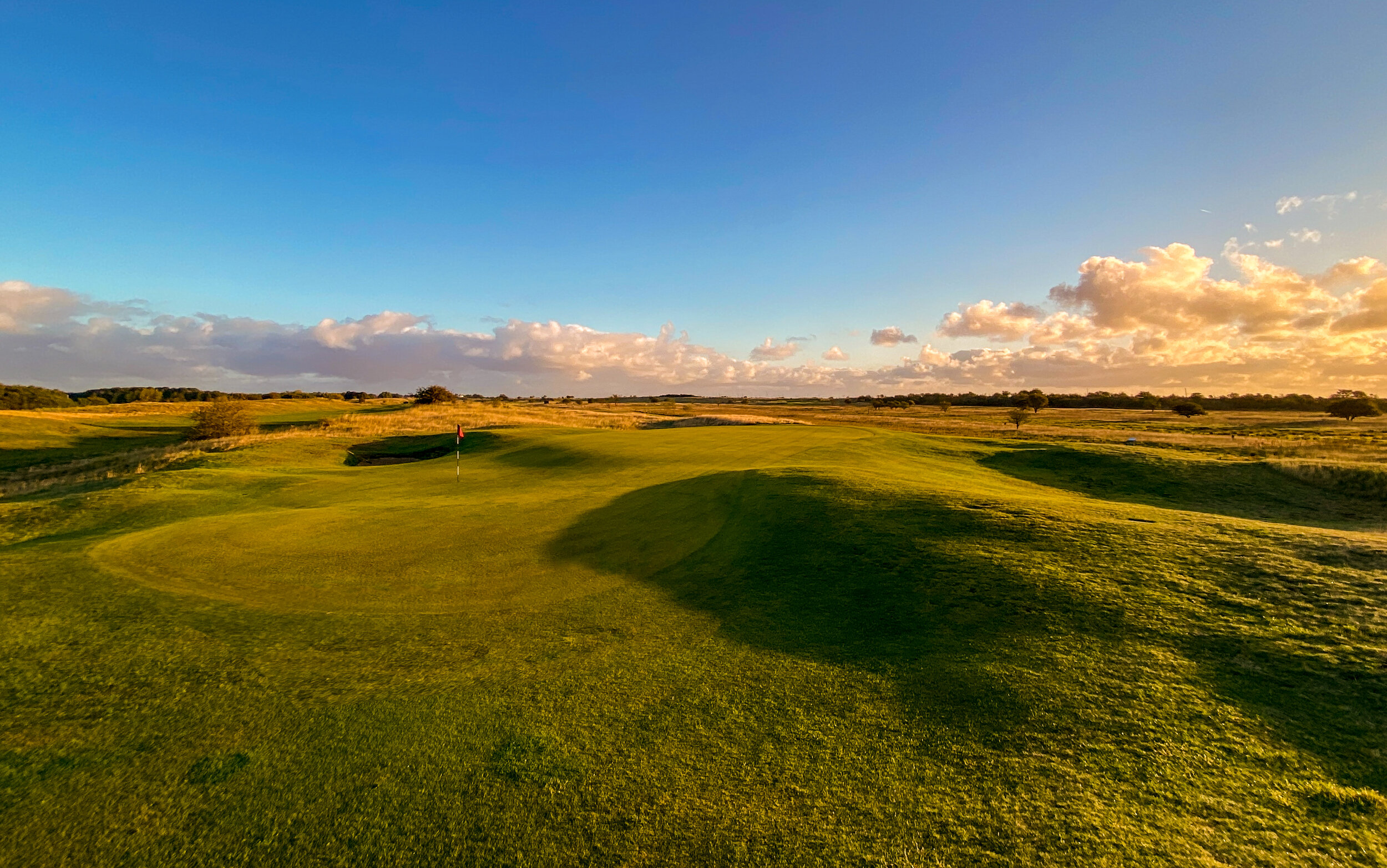
Green has been expanded to the front-right for more variety. A penal and unsighted pot to the rear-right of the green has been filled in to allow for a more interesting recovery. (Photo: John Davey.)
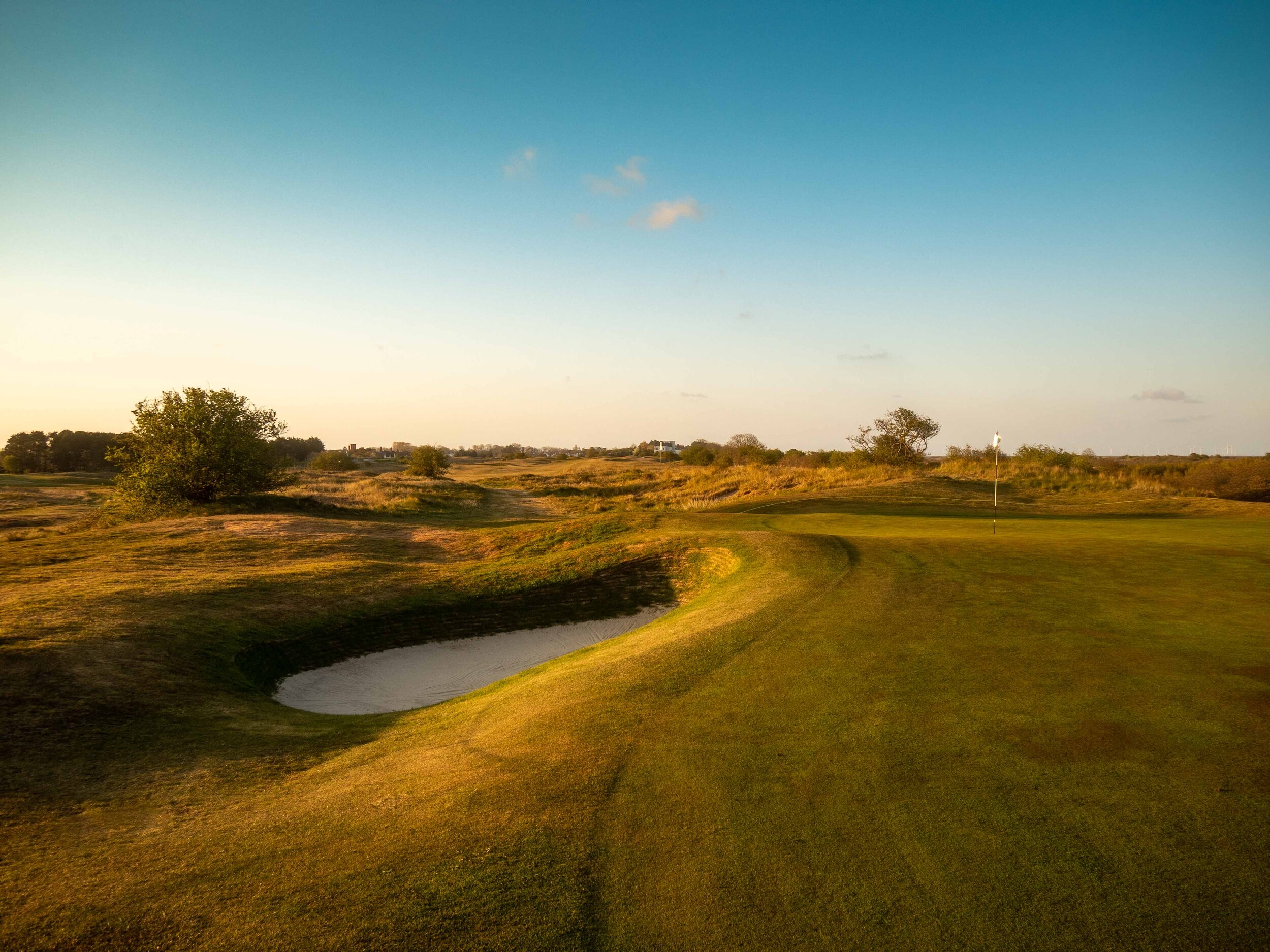
A couple of awkward pots have been transformed into one, easy to enter pot, with a run-off and green expansion to the rear. Buckthorn removal has opened-up through views behind the green.
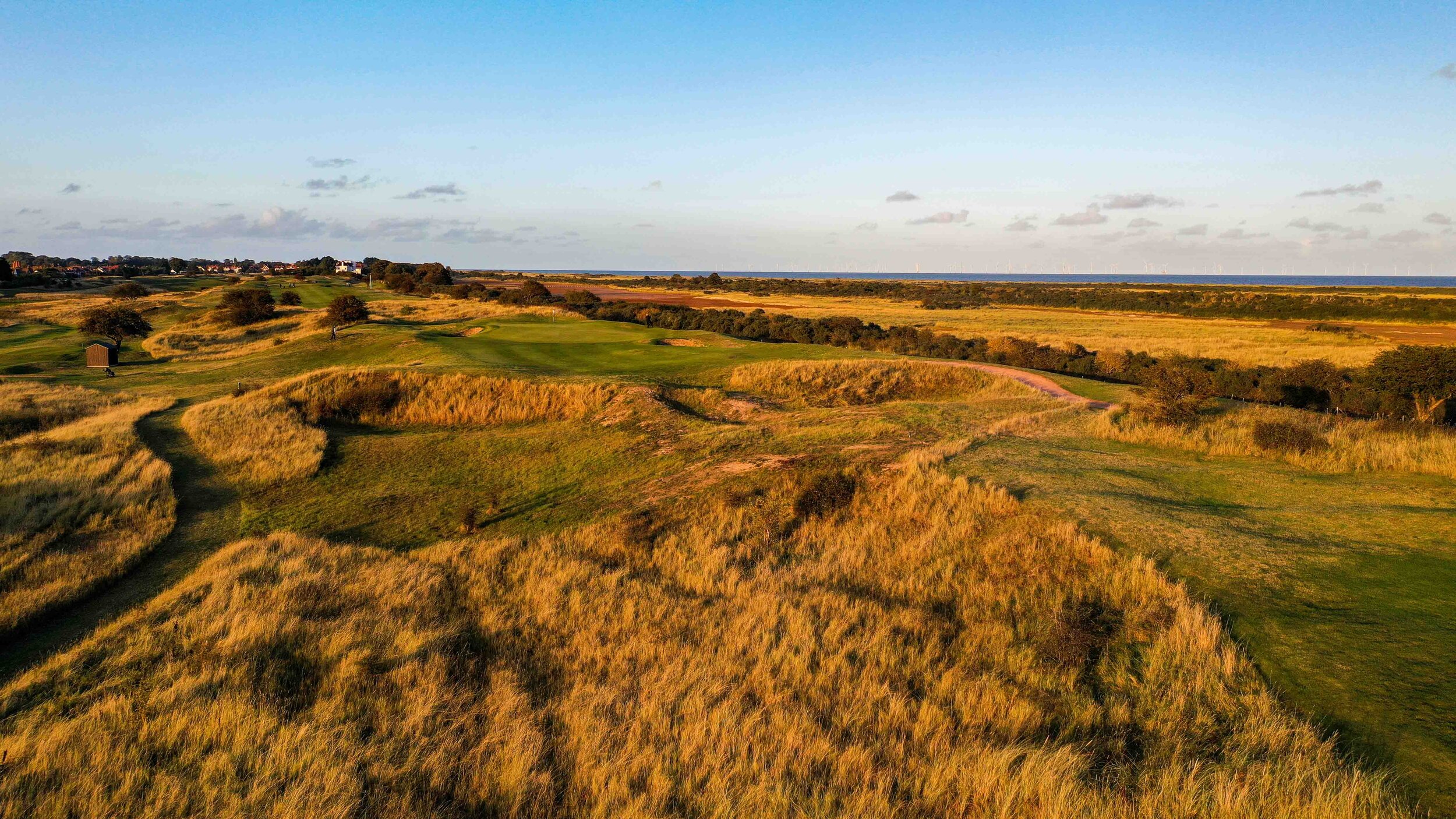
Creating a little more drama, while addressing traffic issues! A flat walkway/dunetop was chased out to establish a trio of grassed-over cross-bunkers.
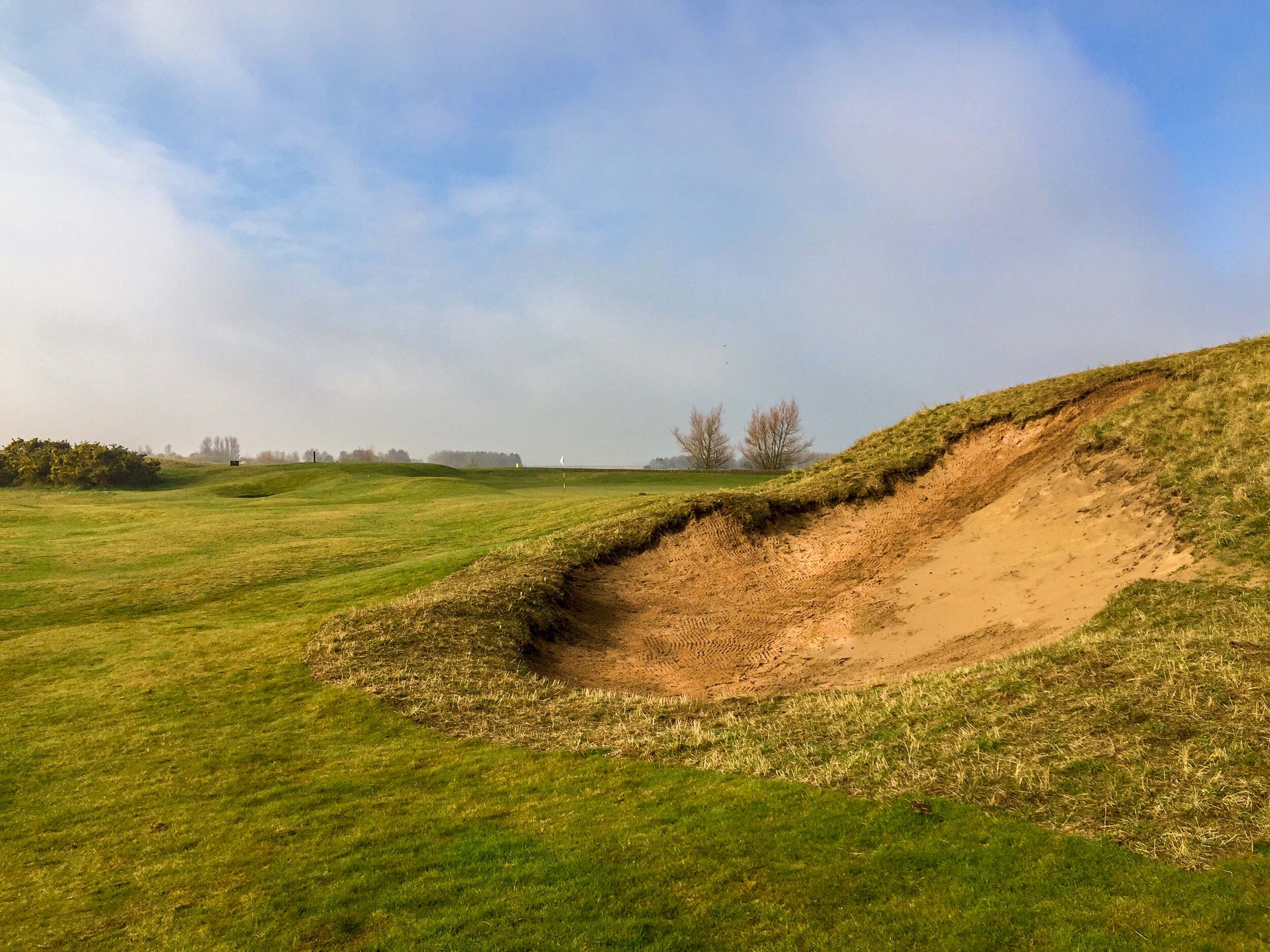
Sat into a dune ridge, a once naturalised bunker is re-instated to a more strategically and visually influential position!
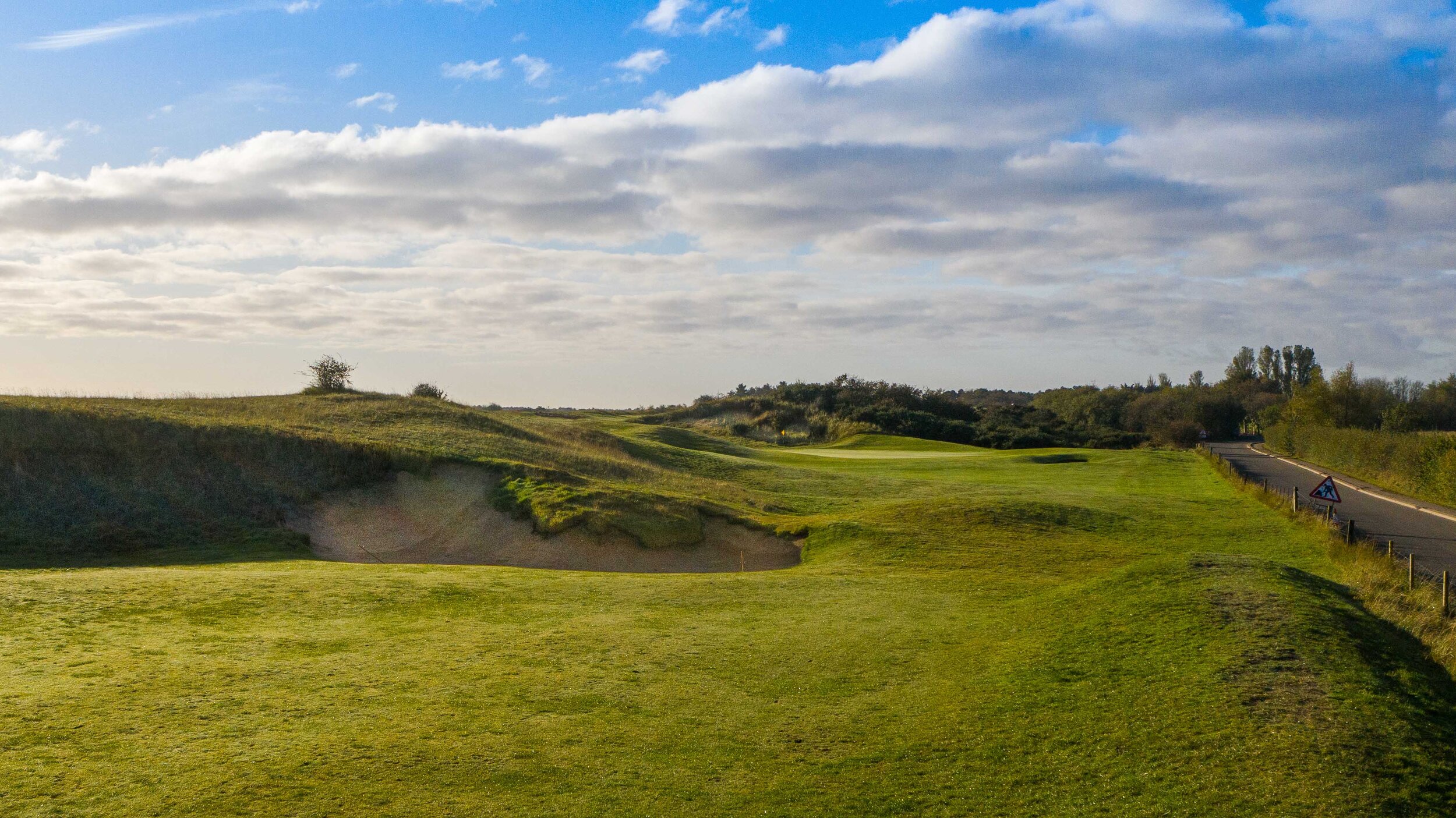
A revetted bunker is dramatised into a natural hazard which sprawls into a dune face. With a slight tweak of the landform, a drive close to the out-of-bounds is now rewarded with a glimpse of the re-captured far-left hole locations. Shifting the right bunker edge a couple of meters left aims to alleviate a heavily pinched wear area. Behind the green, rank grasses have been removed into a sandy scrape.
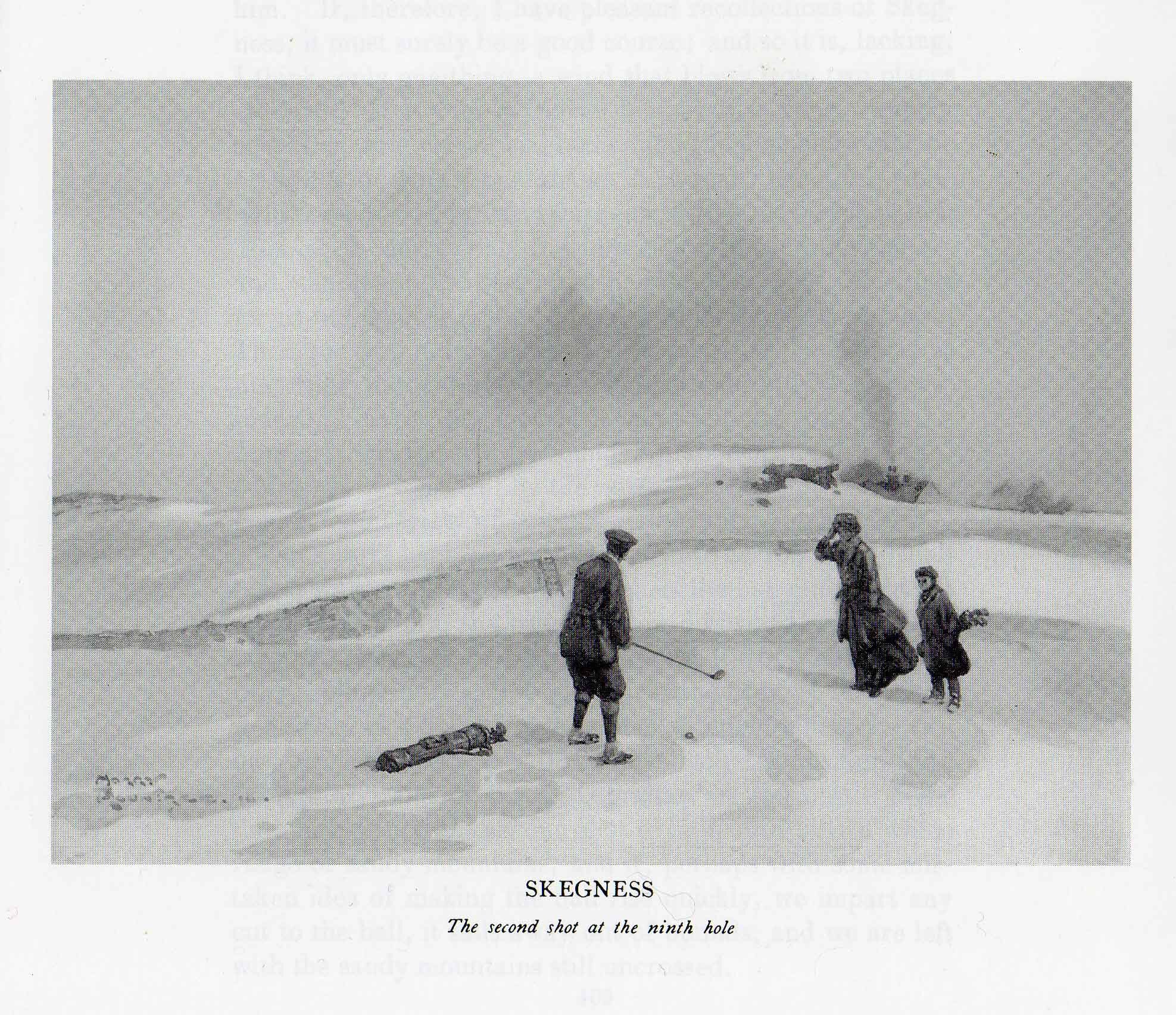
Harry Rowntree’s painting of the 9th was featured in Bernard Darwin’s book ‘The Golf Courses of The British Isles…
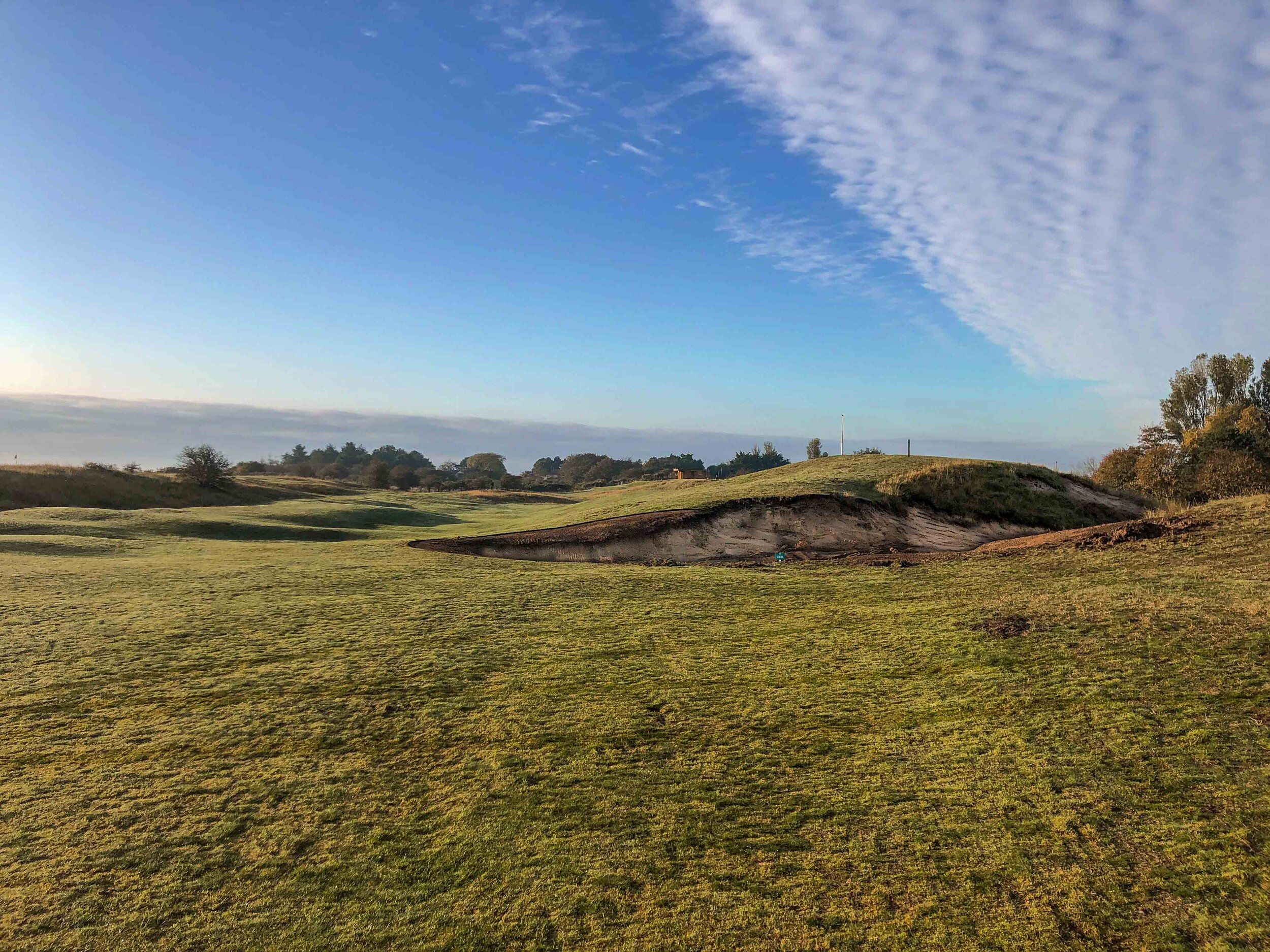
…recapturing the scale and ruggedness of this early era, with consideration for maintainability.
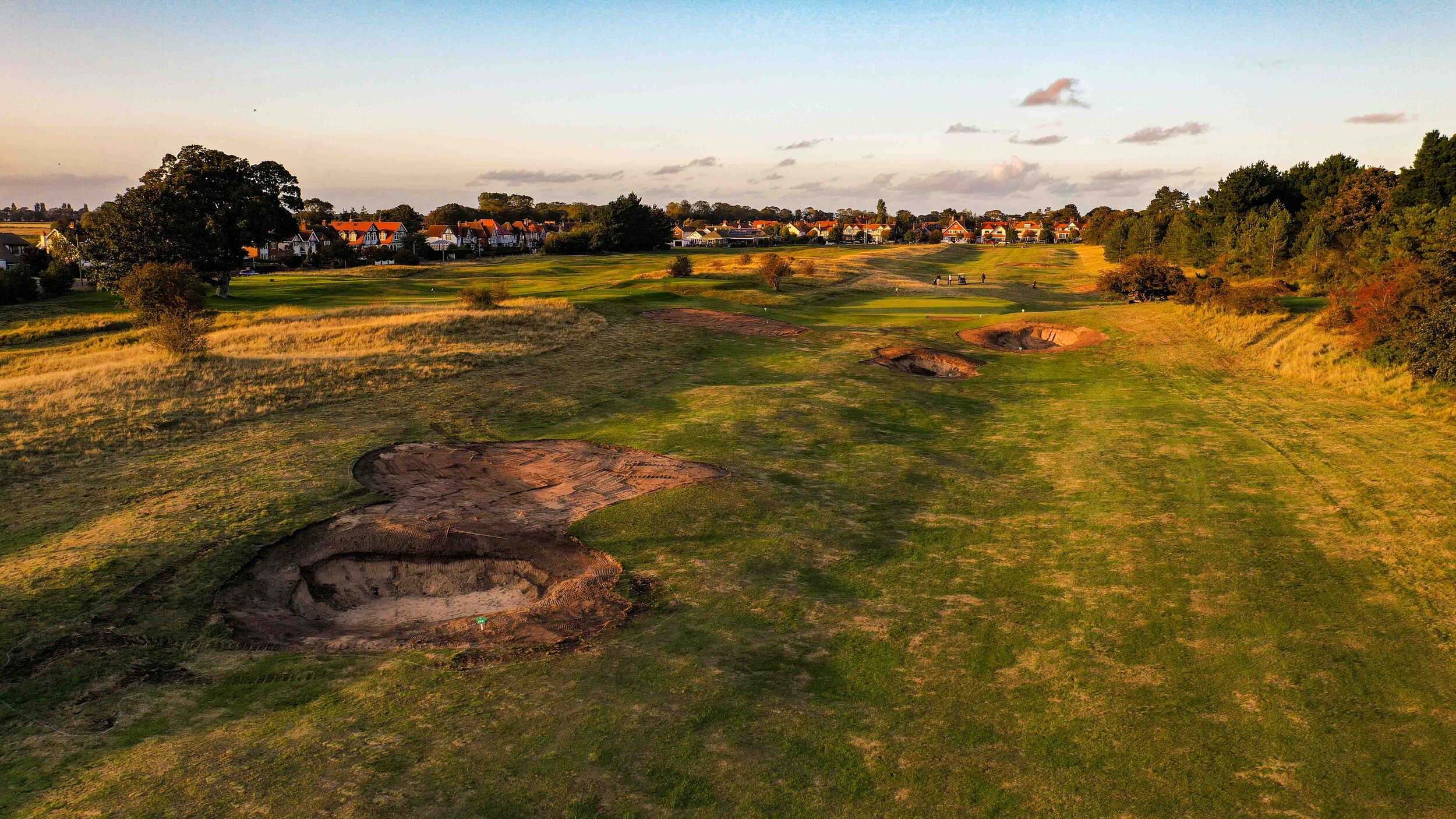
An angular ridge has been re-bunkered to allow for a running shot, with the pots now visible from the tee and fairway.
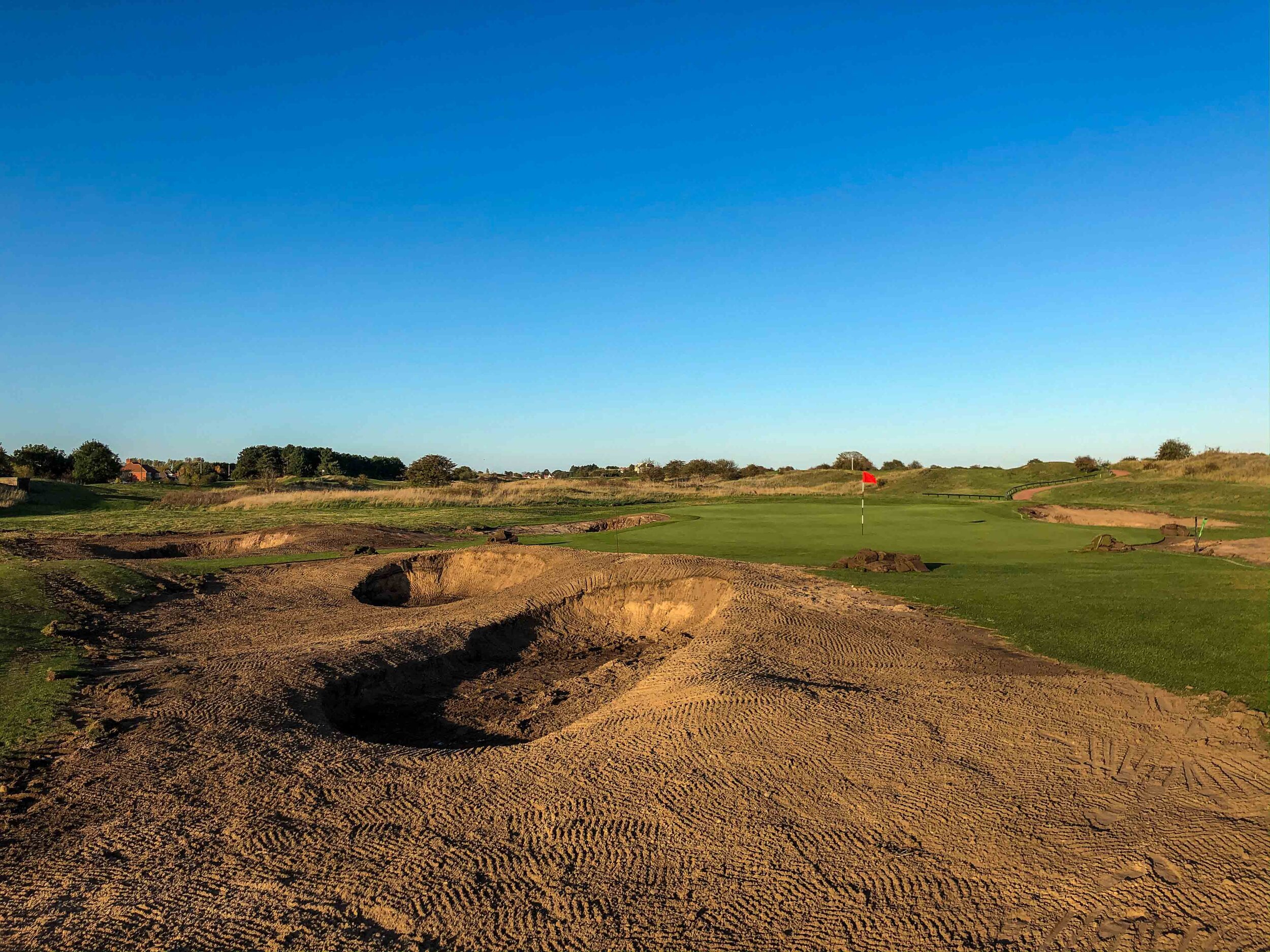
Perfectly round pots are re-shaped, inspired by the great links bunkering of Muirfield and The Old Course. The right of this trio is shifted left to be more accommodating to an attempt at driving the green, or well placed drive.

Willie Fernie's layout has been held in high regard from Bernard Darwin's time, with MacKenzie amongst the list of early consultants. With an eye to improving playability and interest for the club's older membership, advice that will be implemented relatively immediately is considered alongside the long-term legacy of this classic out-and-back links course.
Ranked 54th in Golf World Magazine’s 2017 'Top100 Golf Courses in England'.
Titirangi (Auckland; New Zealand) - 2016 to ... - Master Plan / Consulting / Shaping
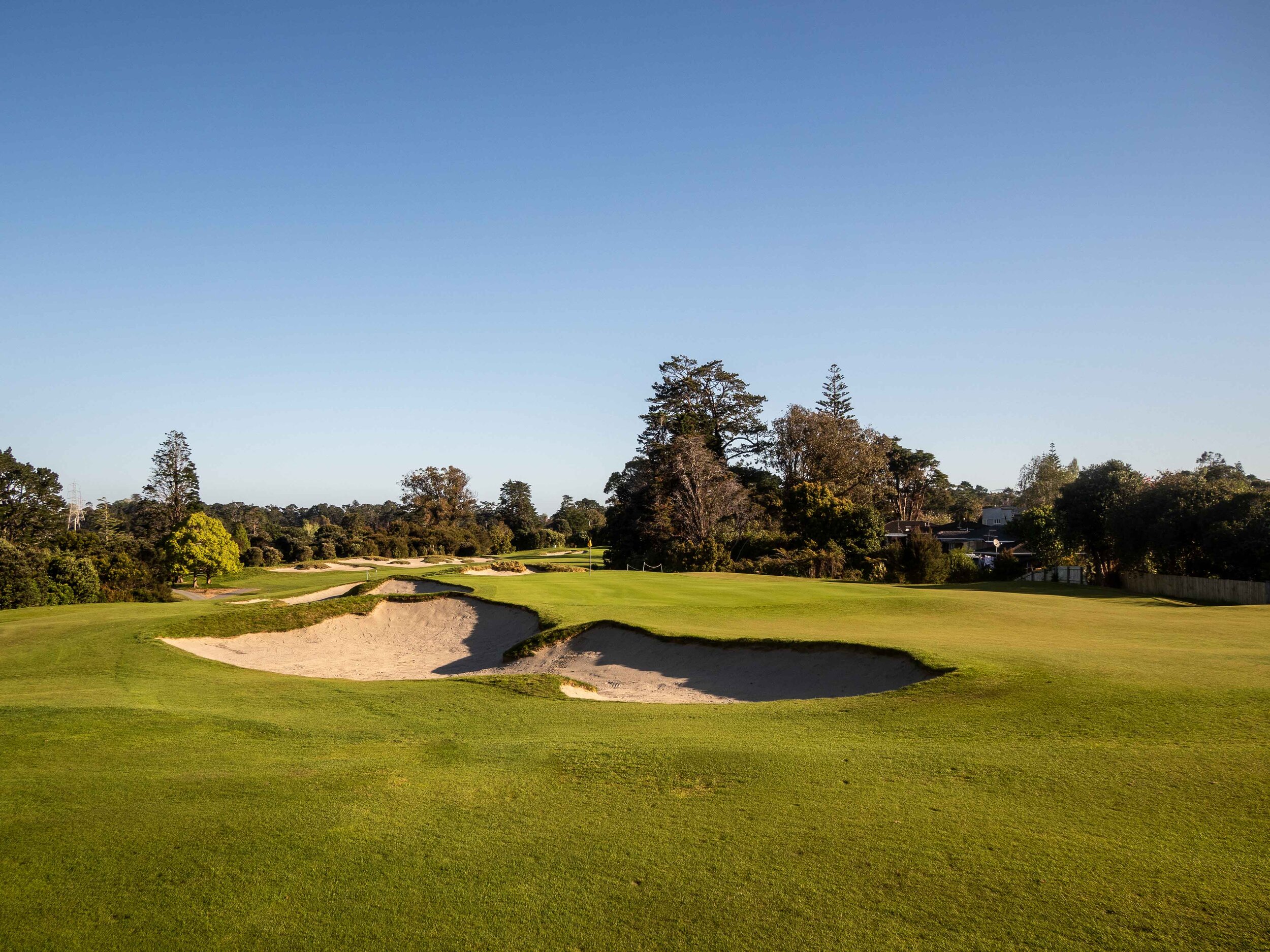
A safe drive to the left leaves a tricky approach over diagonal-ing bunkers to a green that slides away.

A brave drive opens the majority of hole locations. Note how the rear flashed bunker - a classic MacKenzie trait - blends into those on the second (added as part of a previous masterplan).
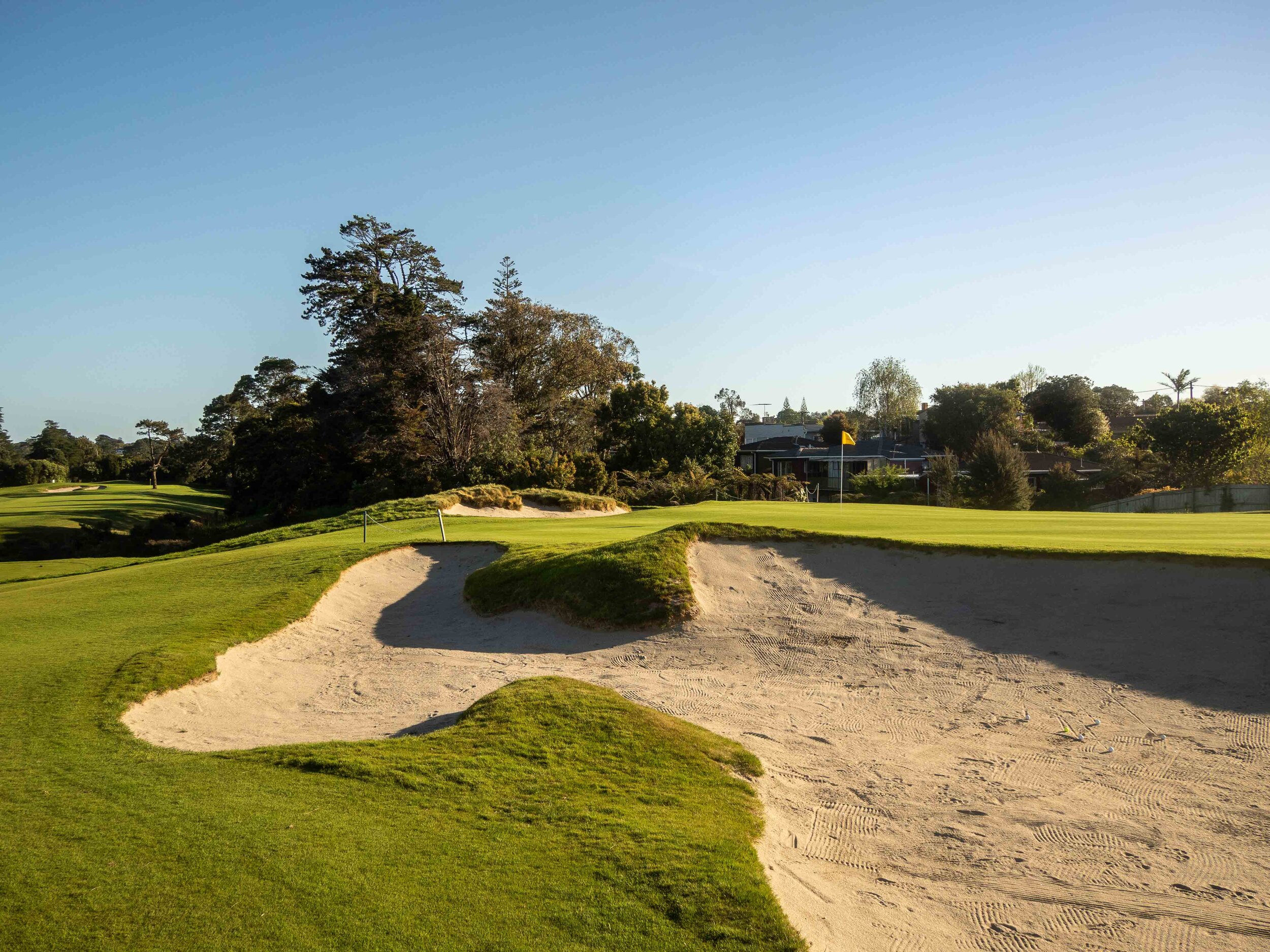
A sneaky bunker bay helps to defend the rear-left low hole location.

Looking back at the restored first green, freshly planted.
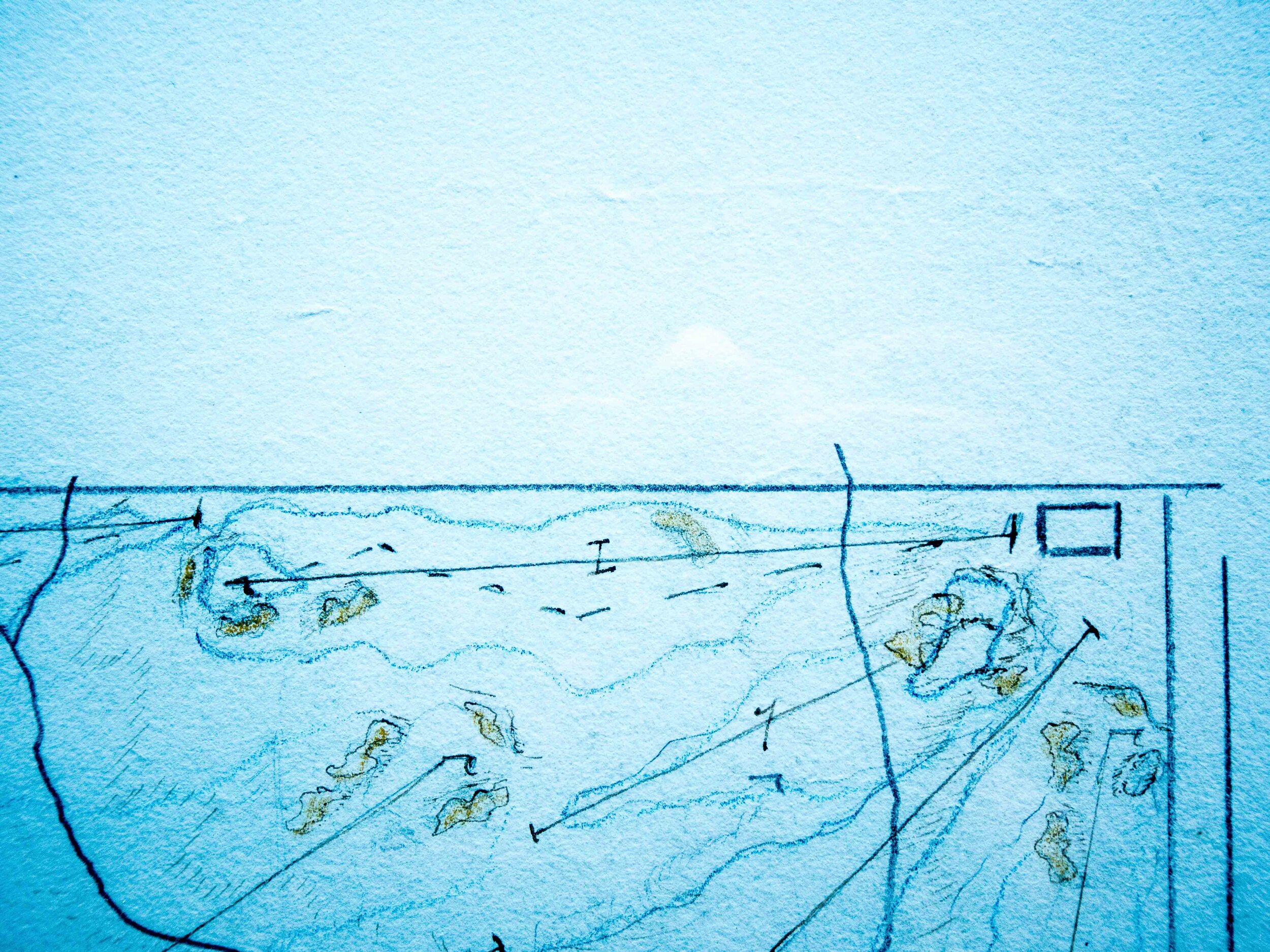
MacKenzie's routing plan provided the best source for his design intent.
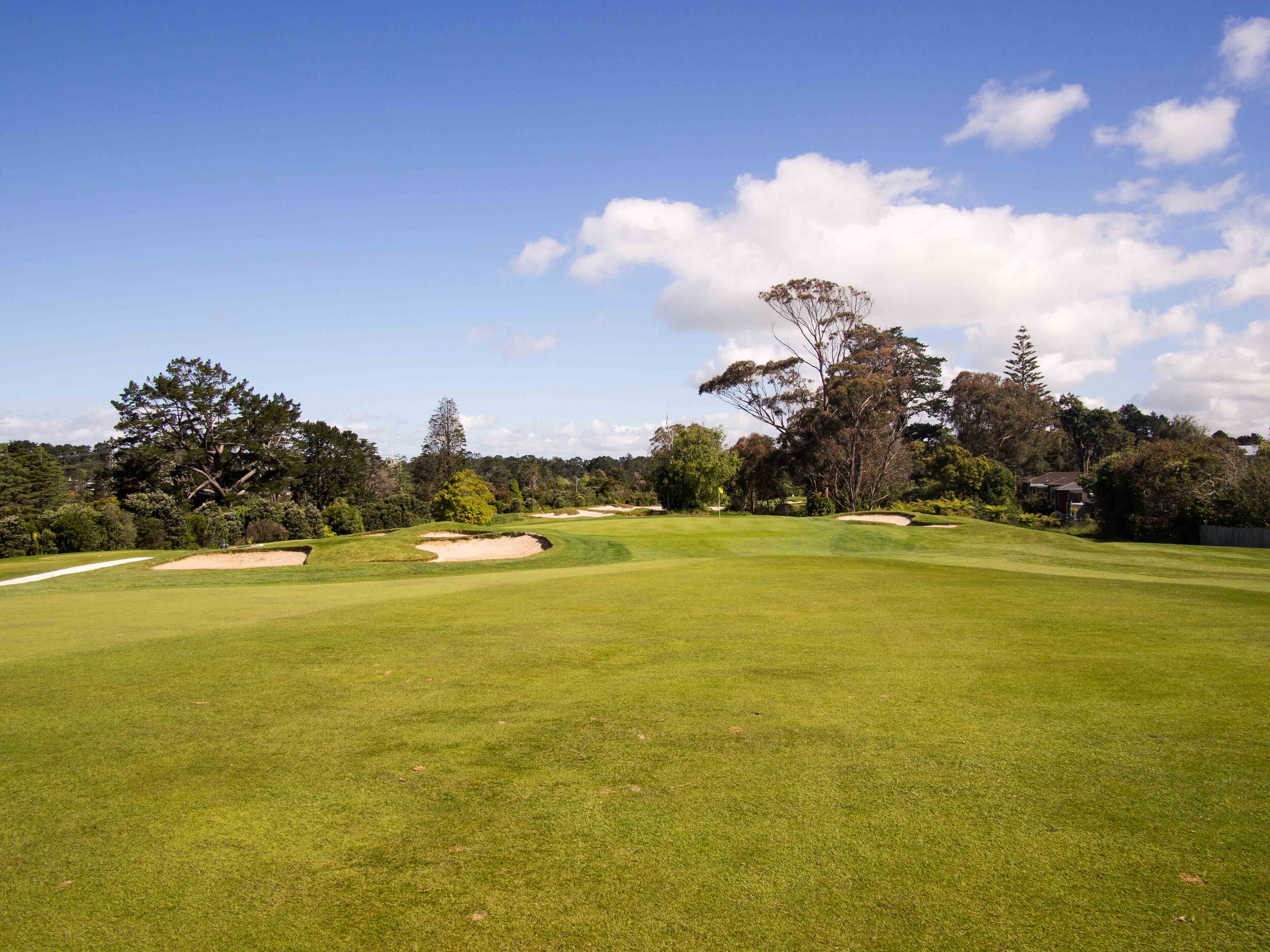
Before!!!
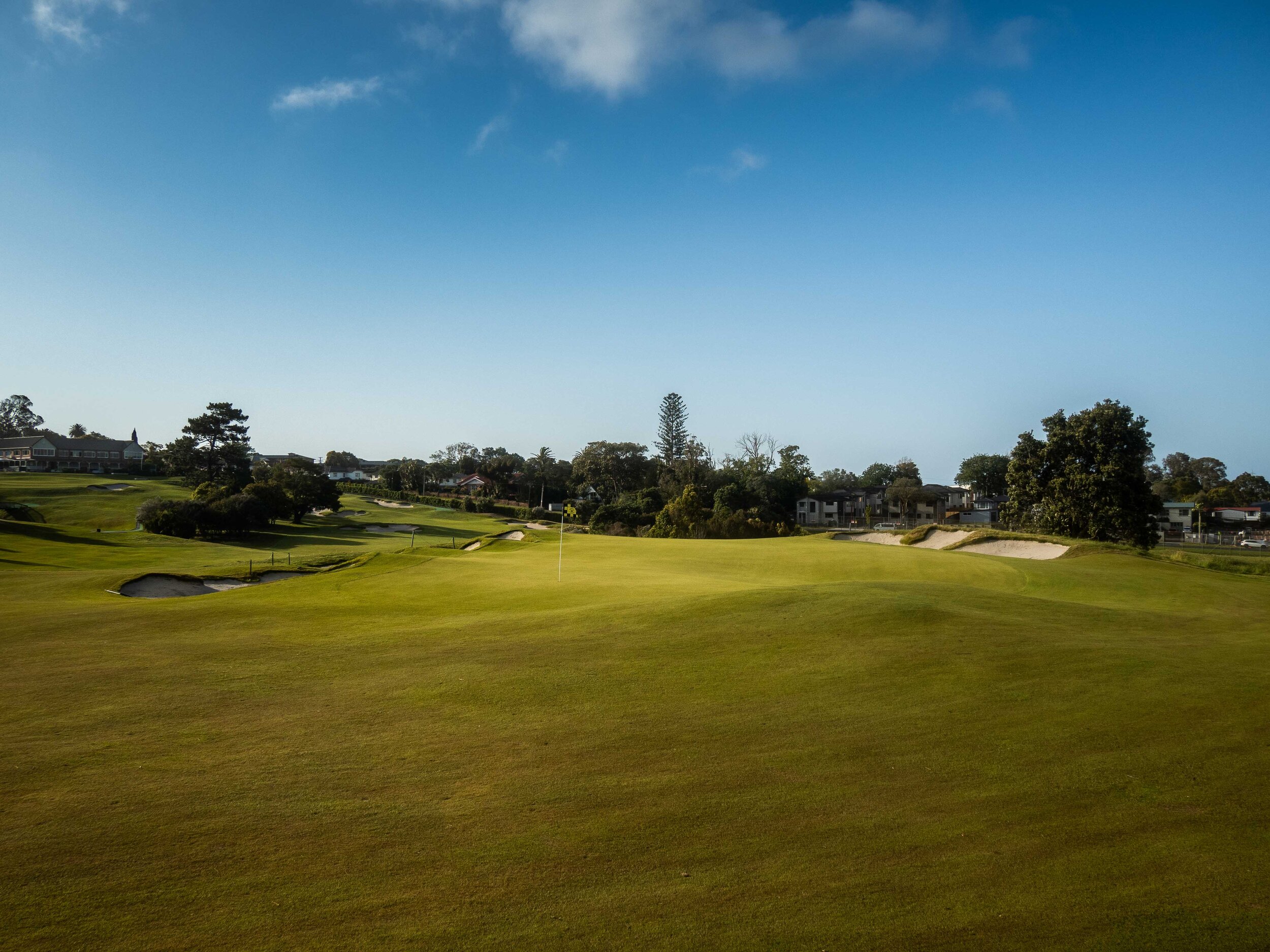
A four-foot mound to the green’s front-right will either aid or confound both the long and short approach.

This funky bunker, 40 yards short of the green will influence the strategy of play to the majority of left hand side hole locations!

Grown-in…10 months later!

Restored fairway bunkers complicate the ideal angles of approach.
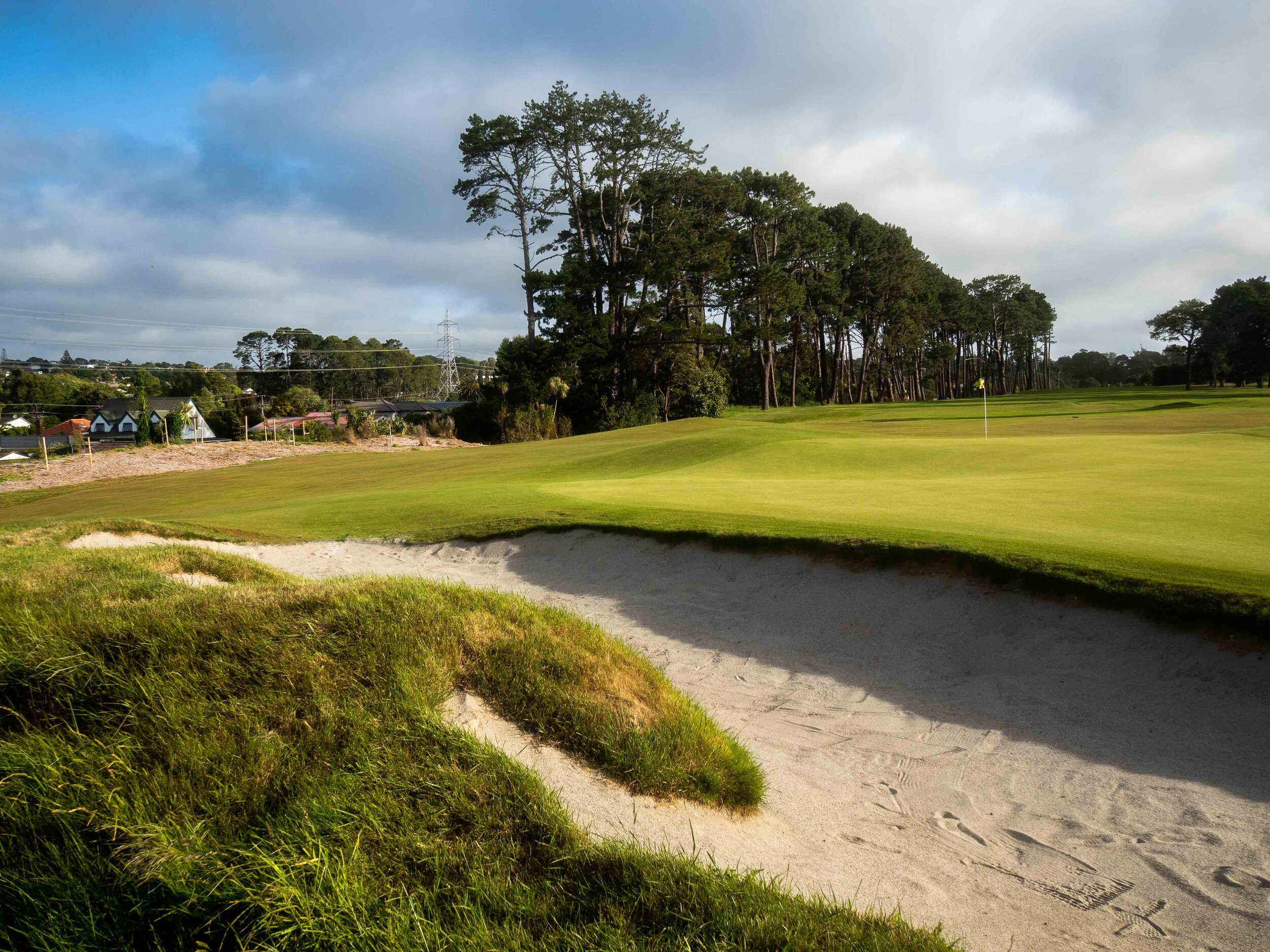
The details of the rear bunker…a classic MacKenzie feature!
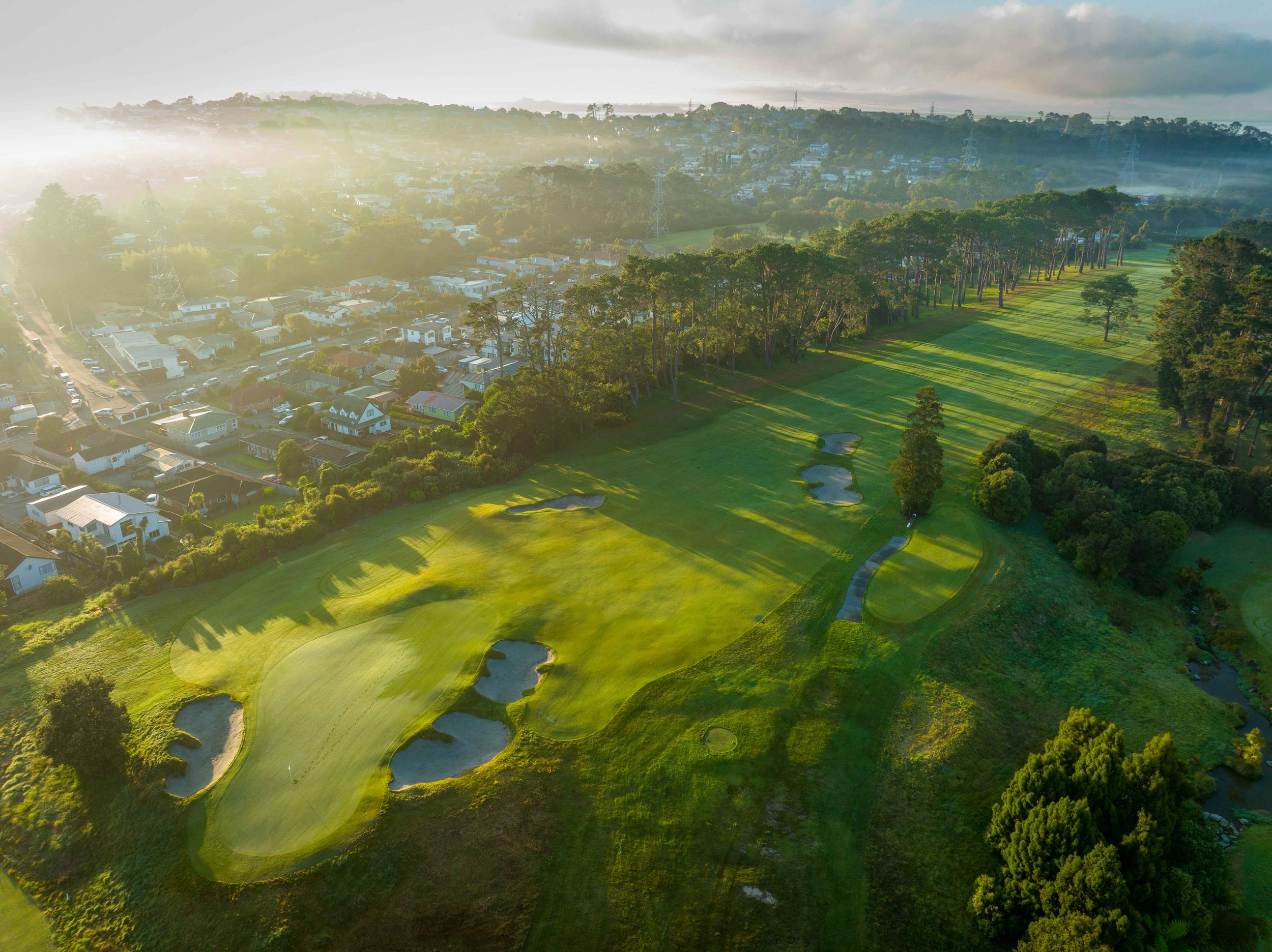
Looking back down the fairway.
(Credit: Doug White.)
A master-plan report for Alister MacKenzie’s only course in New Zealand. The first and seventeenth holes have been re-built as per MacKenzie’s original routing plan. A patient approach will continue to look at: restoring other greens as per MacKenie’s surviving greens’ drawings; addressing boundary concerns with sensitivity to the historical architectural intent; tree-management and grassing line adjustments to restore playing angles, views and improve turf health.
Listed #4 in New Zealand’s Top-10 golf courses (by Phil Hamilton in The NZ Herald).
Cabot Highlands - Golf Park (Inverness-shire; Scotland) - 2023 - Design / Shaping
A collection of greens inspired by some of Scotland’s most famous, and some less known putting complexes. Eleven greens are positioned across the park to provide a variety of targets to be played to, or aimed at, from the range tee. Connecting these greens in the suggested routing yields an adventurous journey across the park, and a number of fine backdrops.
[Construction Team: Chris Haspell; Rory Paul, Vittorio Addabbo.]
Moortown (Yorkshire; England) - 2021 to ... - Consulting / Shaping
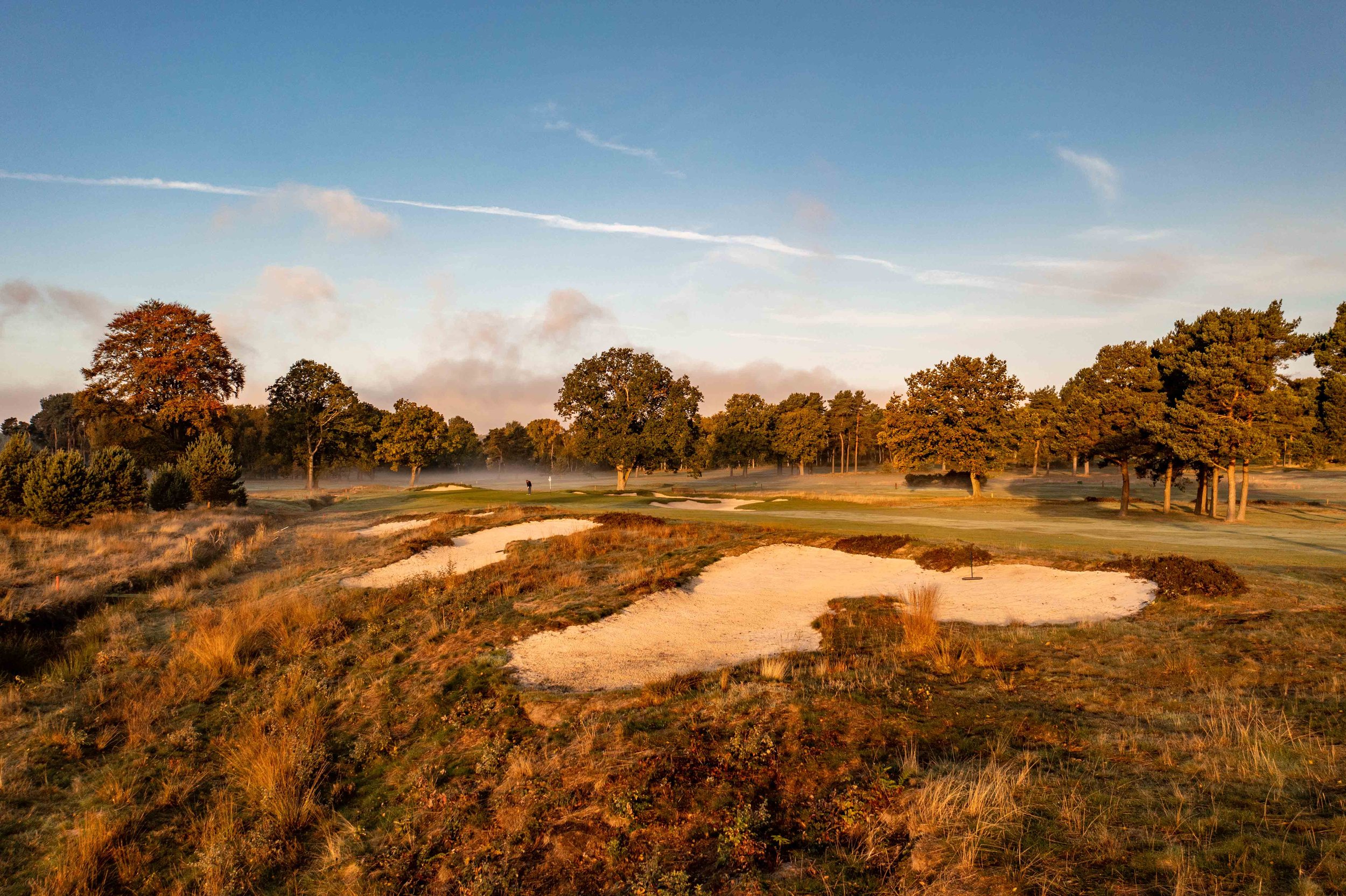
Once a hard dog-leg around a copse of trees, he redesign of this short-four has brought the green temptingly into play. The line of charm can be deceiving….!
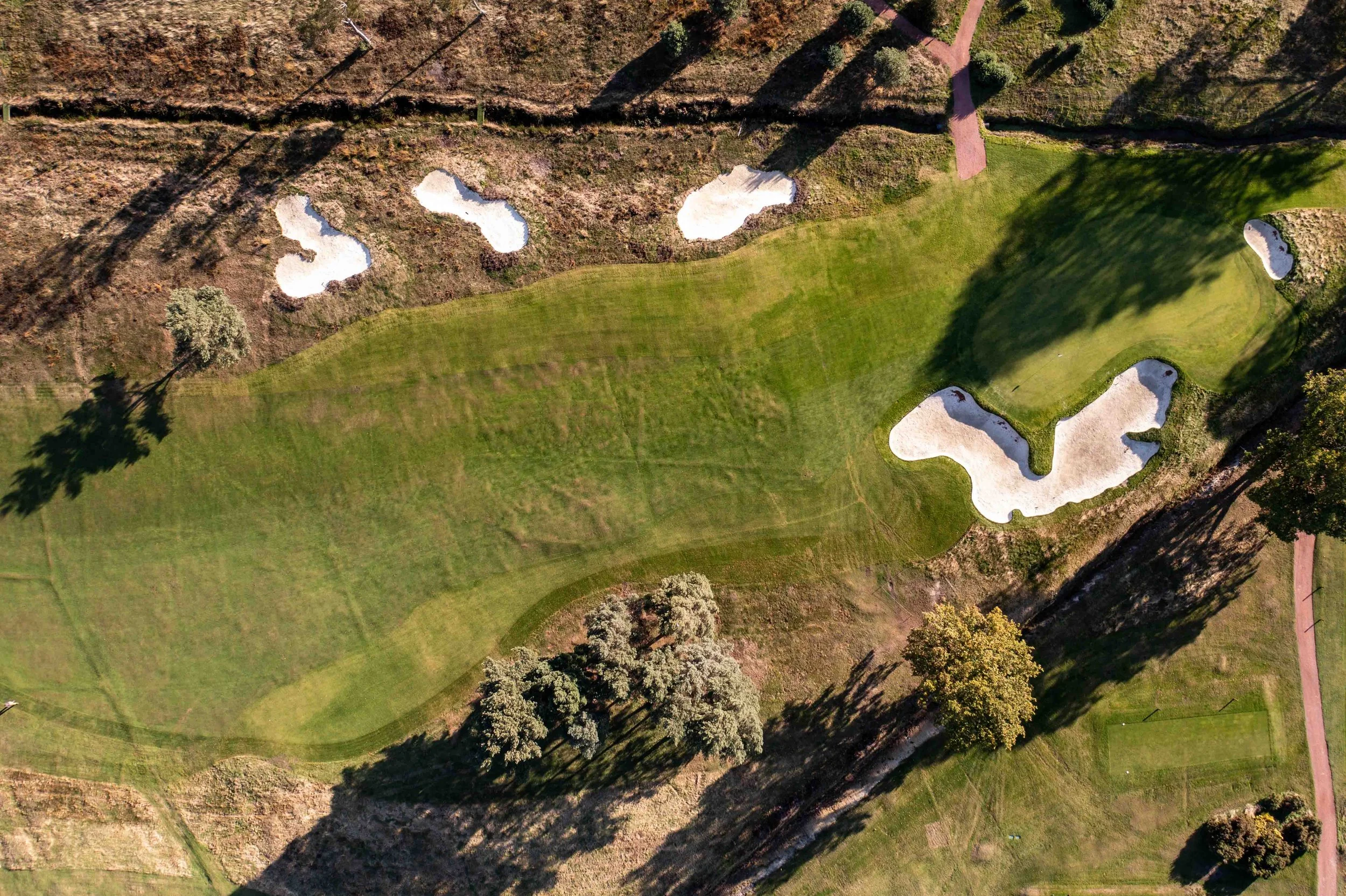
With bunkers on the right of the drive replaced by fairway, a safe drive leaves a daunting pitch, especially where the green has been expanded to the rear-right.
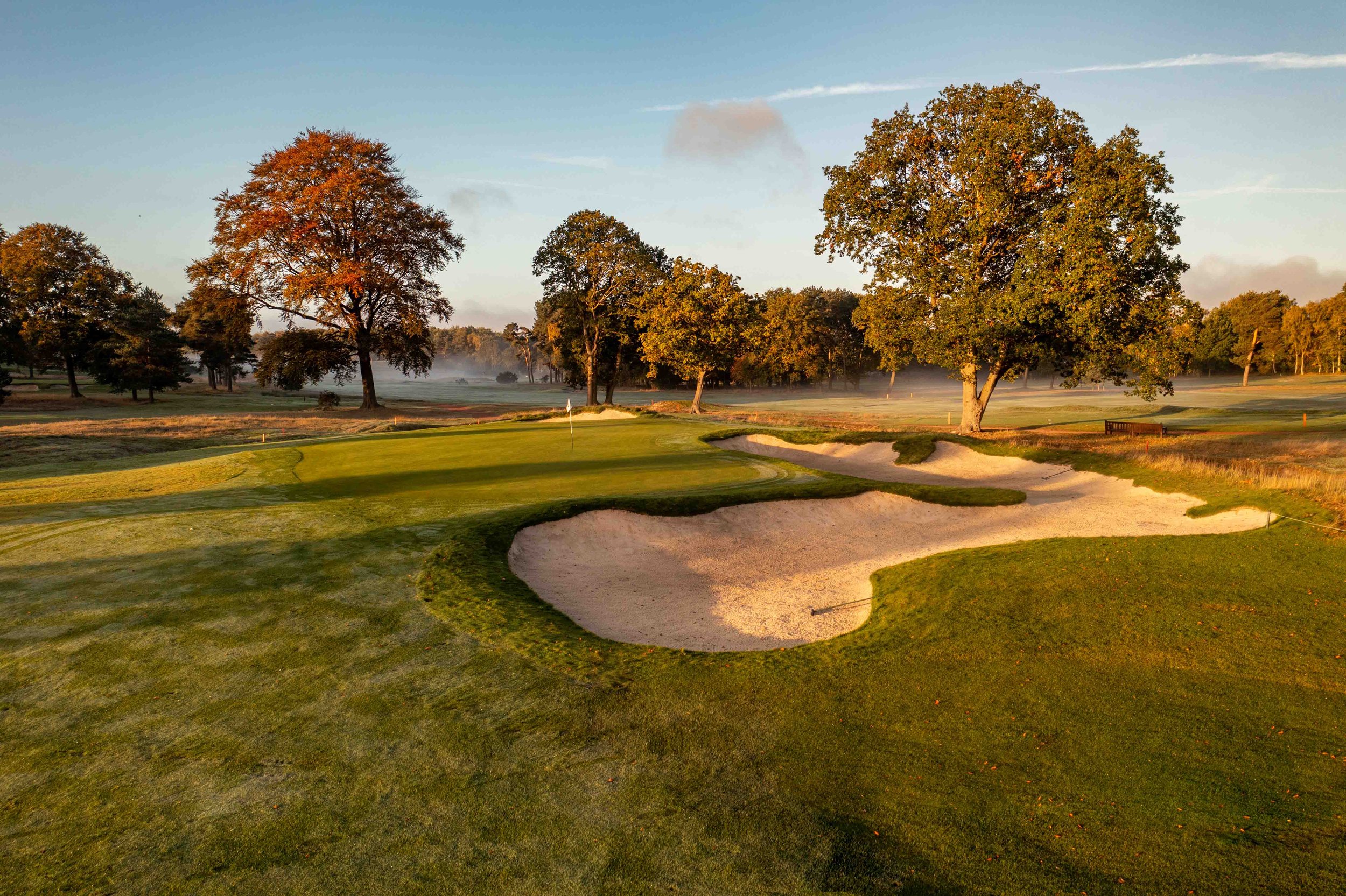
The main green side bunker has been inspired by the original complex of sand-scrapes.
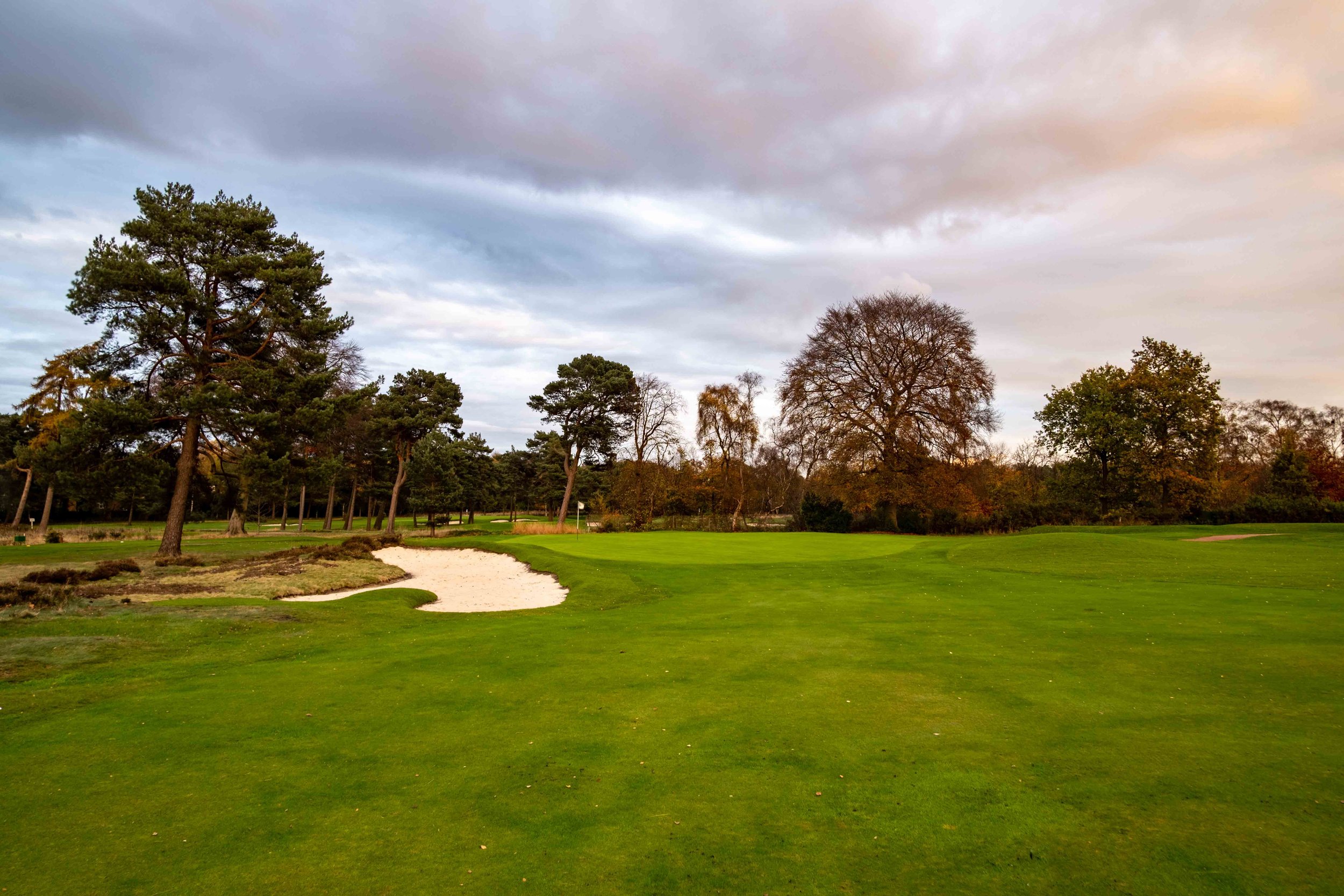
A classic MacKenzie mound replaces the front-right bunker to both stymie and reward. The uniquely shaped front-left bunker has been restored from the historic aerial.
MacKenzie’s Moortown has seen forced evolution since the development of its boundaries from the1980s. With the centenary of the 1929 Ryder Cup approaching, refinement will see lost features reinstated where possible and newer holes and features inspired by the original design.
National Golf Centre - Woodhall Spa (Lincolnshire; England) - 2021 - Design / Shaping
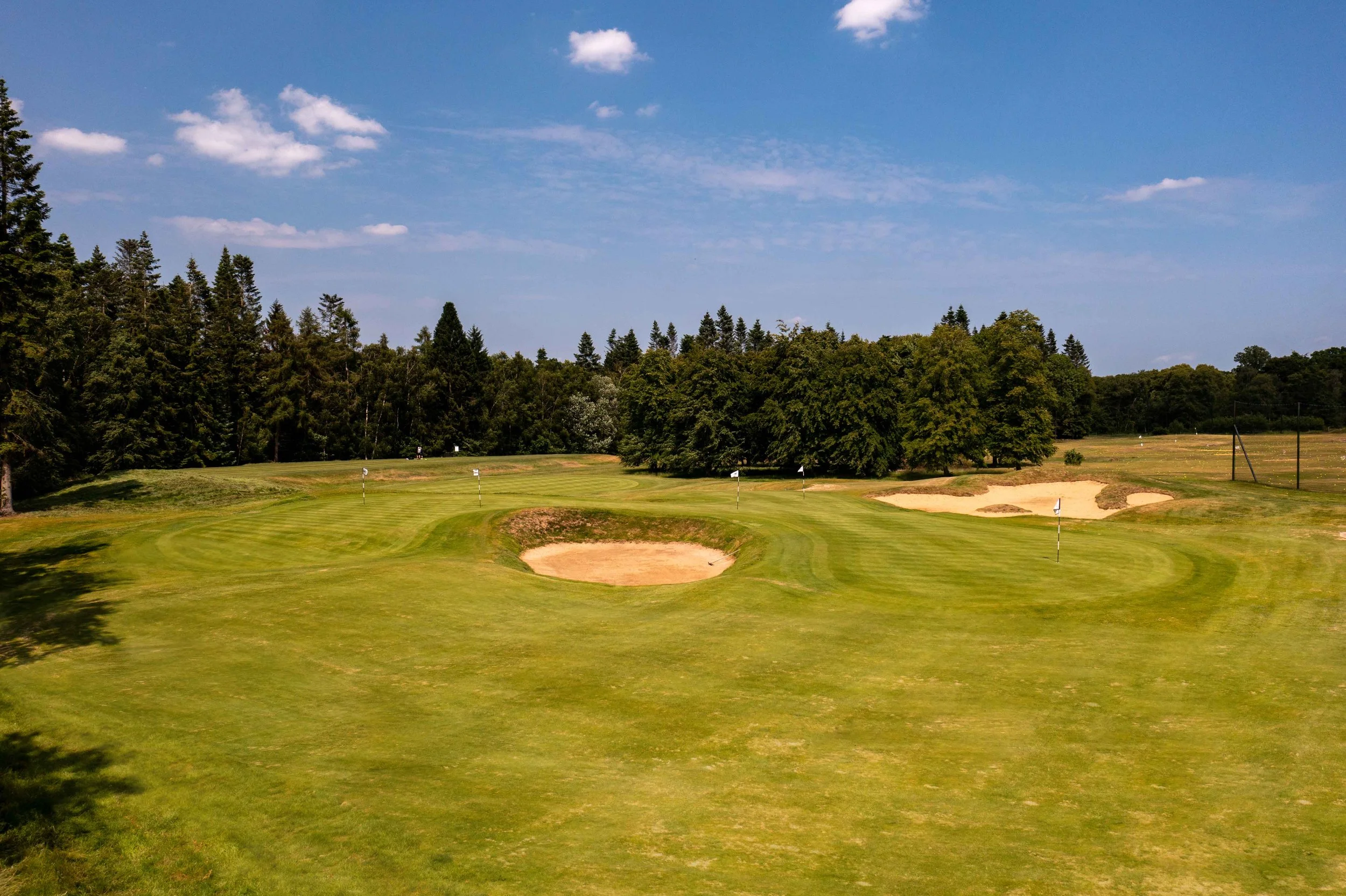
The central ‘profile’ bunker allows for a variety of escape heights and trajectories to be trained.
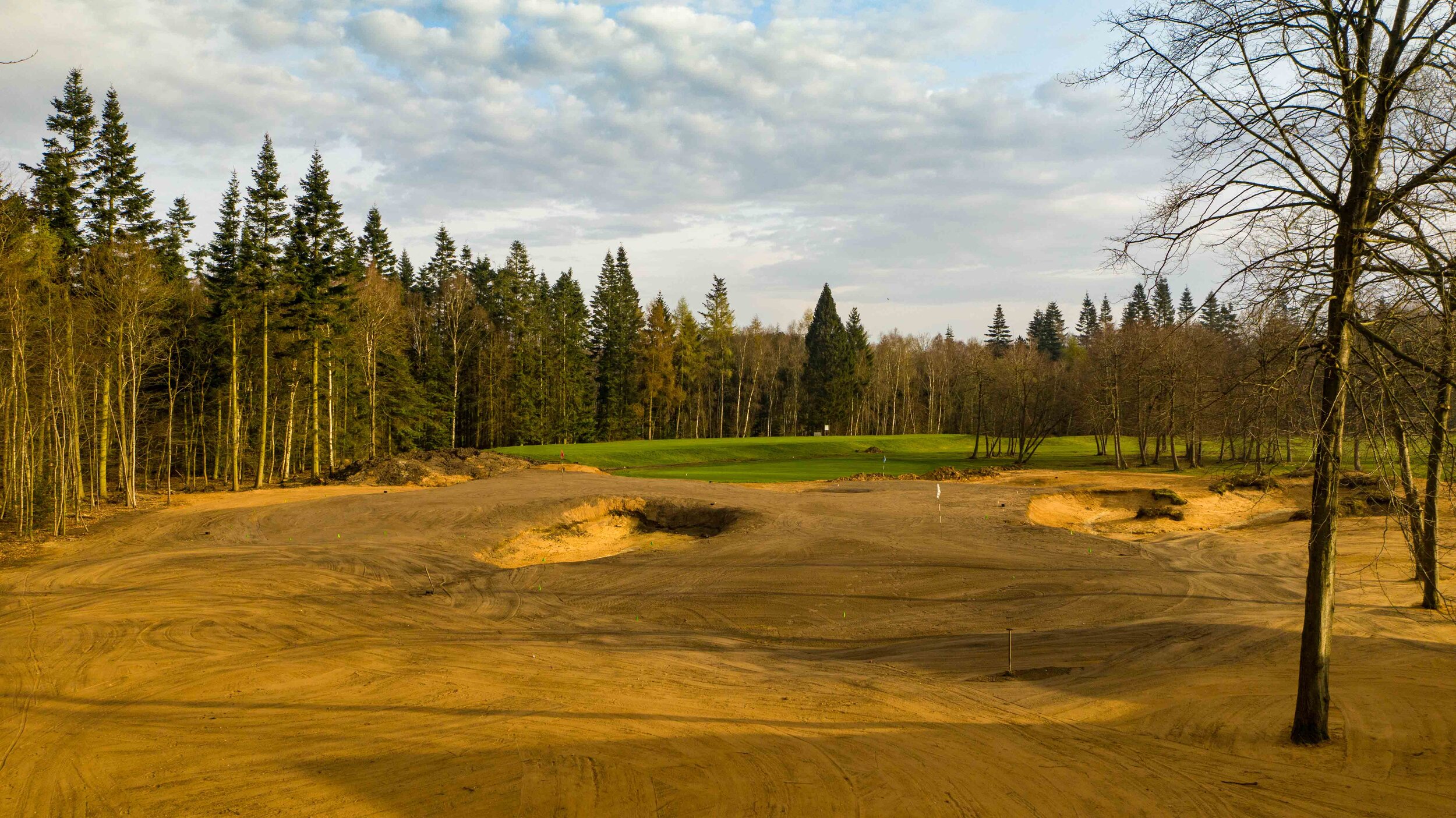
An unusable area transformed into a practice area for England’s best amateur golfers.

The ‘contour’ bunker (right of shot) allows shots to be practised from a variety of stances; the far bays allow for full-length shots to be played down the length of the existing driving range.
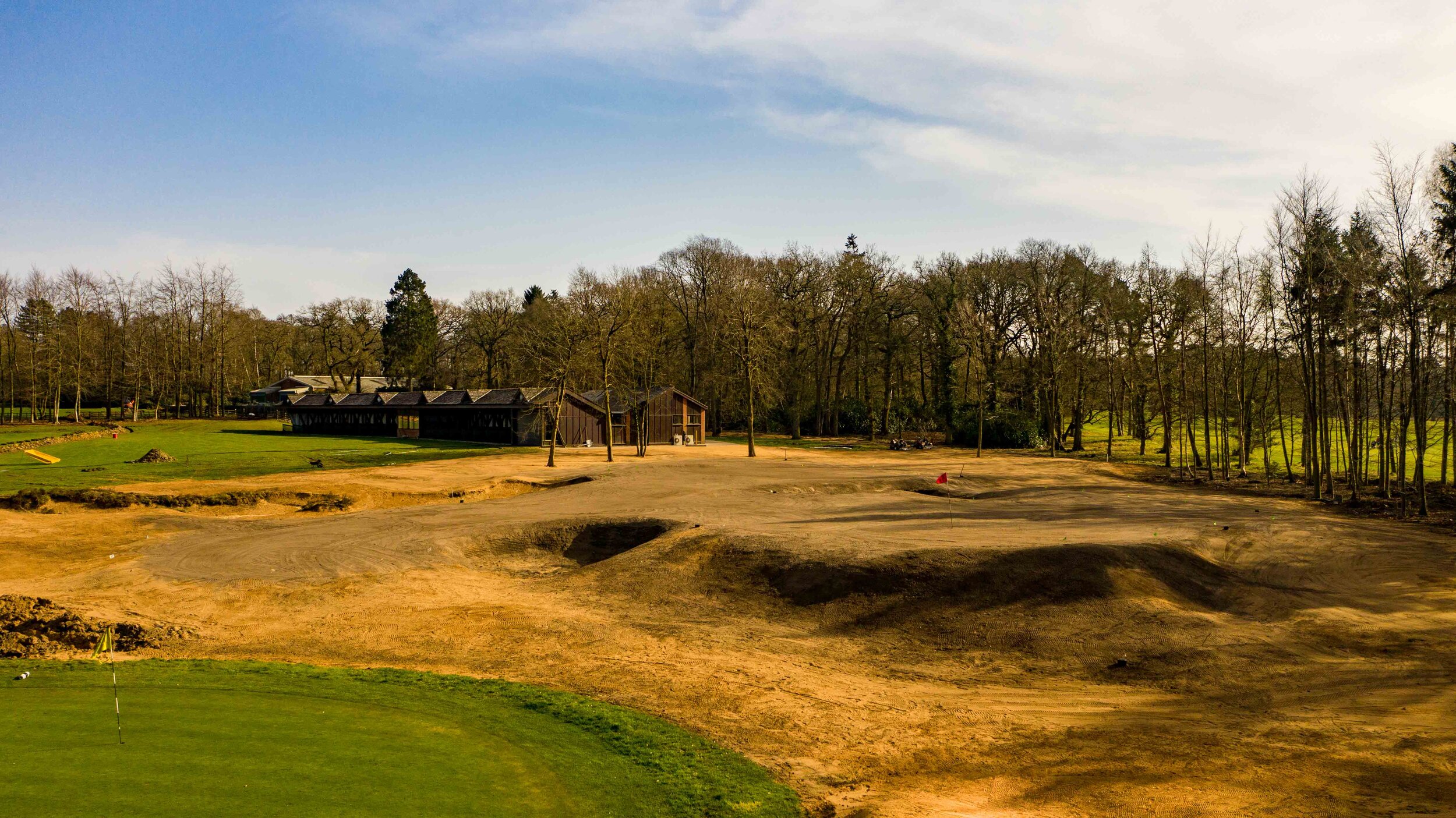
Different sections of the greens respond to the surrounding terrain to give the ultimate variety in recovery shots.

The unusually shaped greens takes full advantage of this previously unused space.
Using the waste material from the renovation of the Hotchkin Course, this previously low, wet unusable area was transformed into a practice space for England’s best amateur golfers. With an eye to the teaching methods of the national team’s Head Coach, almost every imaginable recovery shot within 70 yards may be taught and honed.
[Construction Team: Chris Haspell; Reece Haspell.]
Hadley Wood (Hertfordshire; England) - 2021 to ... - Masterplan / Shaping
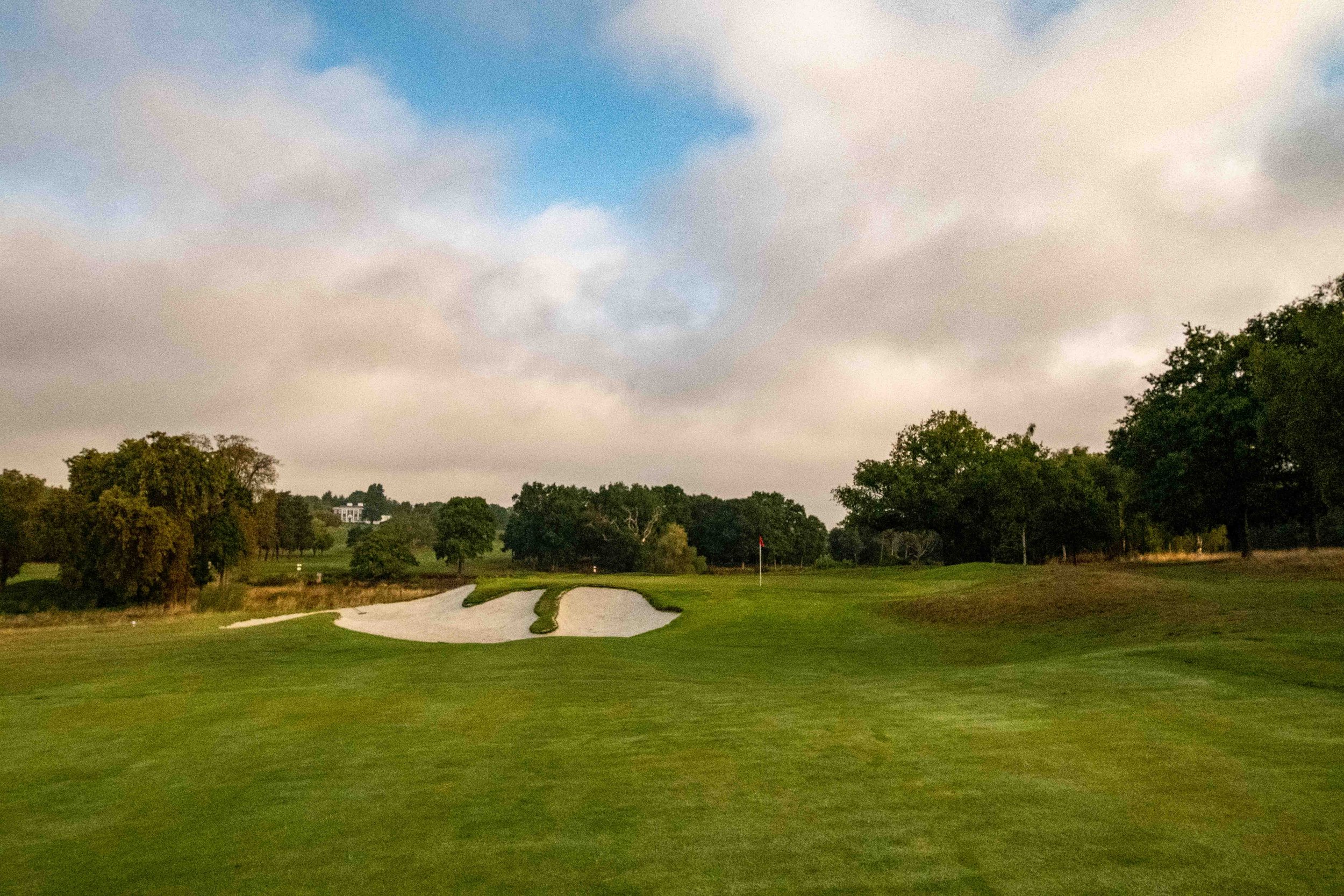
The short par-four ninth green appears particularly intimidating with the front-bunkering restored as one and edging across to the left. With fairway introduced to the approach, there is room for the weaker golfer to run one in.
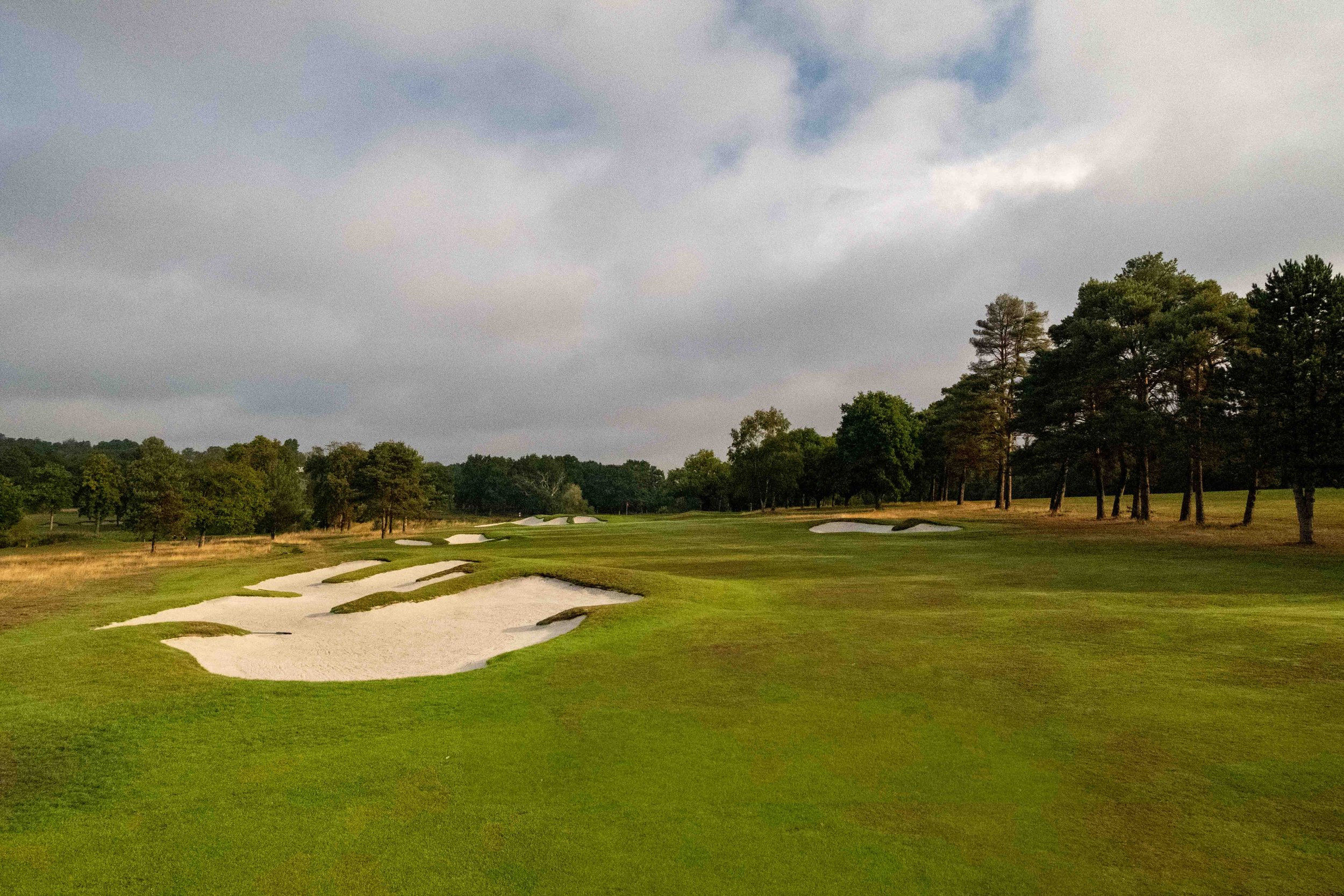
A dramatic fairway bunker, inspired by a historical aerial, was reinstated further down the fairway to pose all sorts of questions.
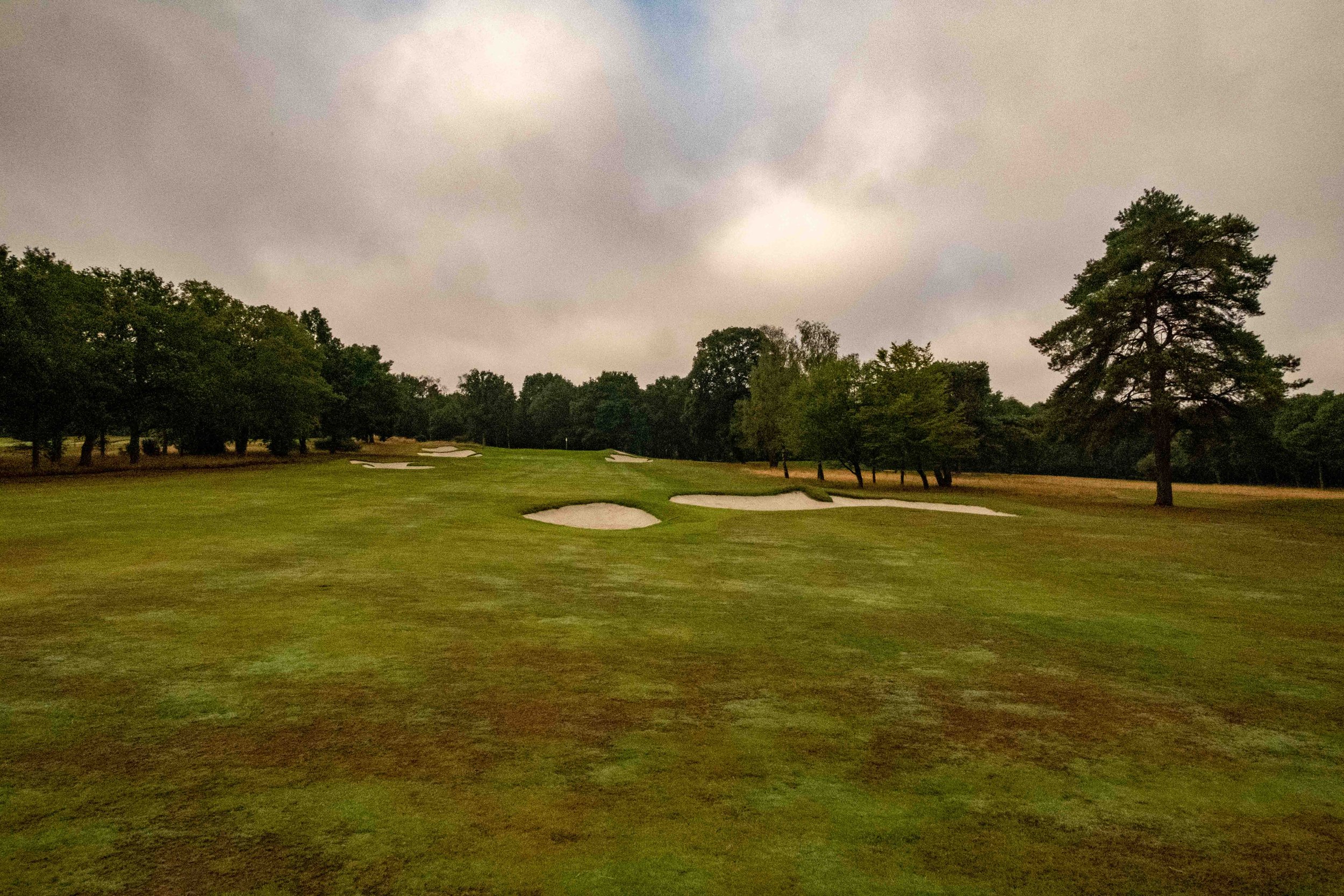
The historical bunker scheme was reinstated, with the right drive bunkers restored much further up the hole to influence today’s golfers. A slither of the back-right greenside bunker blends deceptively into the near bunker.
With a strong playing membership, the club has sought to balance the reintroduction of lost features with an eye to the ‘modern’ game. The fine parkland environment has leant itself to a cleaner style of MacKenzie bunkering.
Contractor: Profusion Environmental Limited.
St Enodoc (Cornwall; England) - 2018 to ... - w/Tom Doak - Consulting / Shaping

Green expansion shows-off the wonderful links contours, creating a pin position in the front bowl.
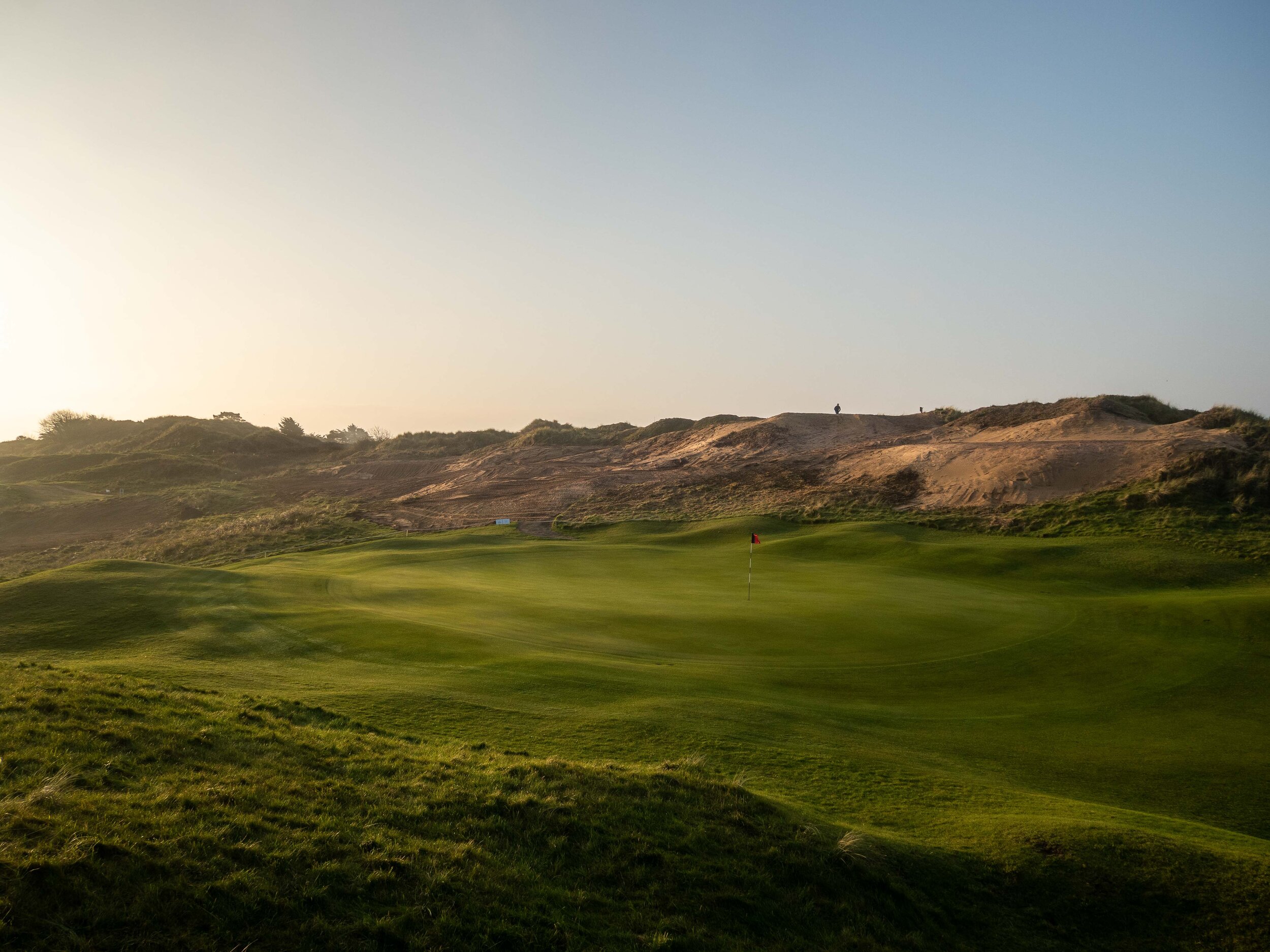
A broadened transition from the 17th green allows traffic over a natural, grassed surface.

An expansive sand pit - very much in-keeping with the rest of the site - replaces a craft-less pair of pots.

The left side bunkers deceptively stack on one another, with the approach pit sprawling to blend into the distant beach beyond.
Implementation of Tom Doak’s Dec’ ‘16 consulting report, with the aim of lightly polishing one of the world's most unique links courses!
Ranked #23 in Golf World Magazine’s 2017-18 'Top100 Golf Courses in Britain & Ireland'.
“Paper is one thing, but working in the dirt is clearly another.” - Walter J Travis
Design-Shape: An evolutionary process that allows the architect to efficiently interact with and manipulate the natural landscape in three-dimensions, editing and refining strategic elements from the macro to micro to create the ideal golf hole.

